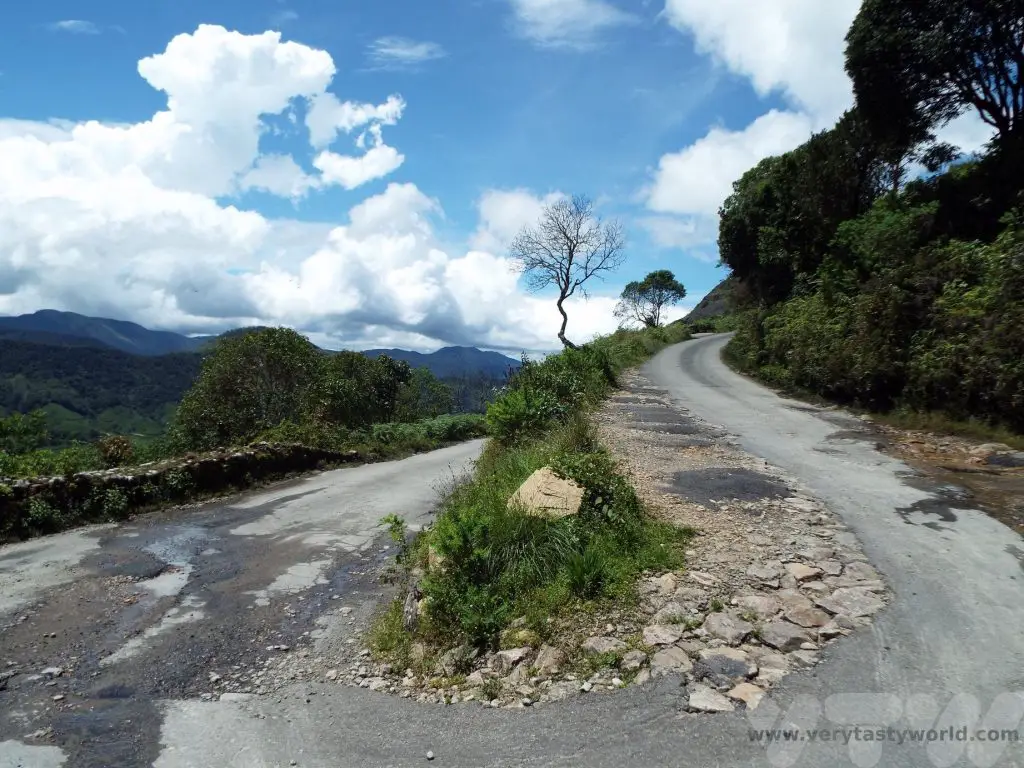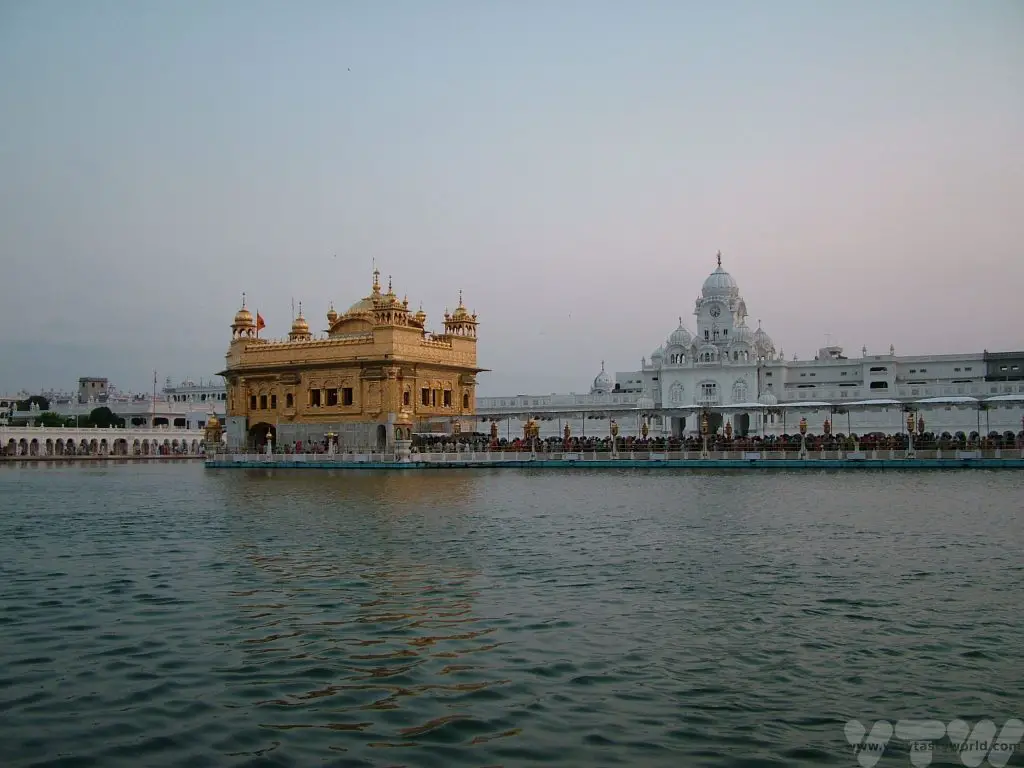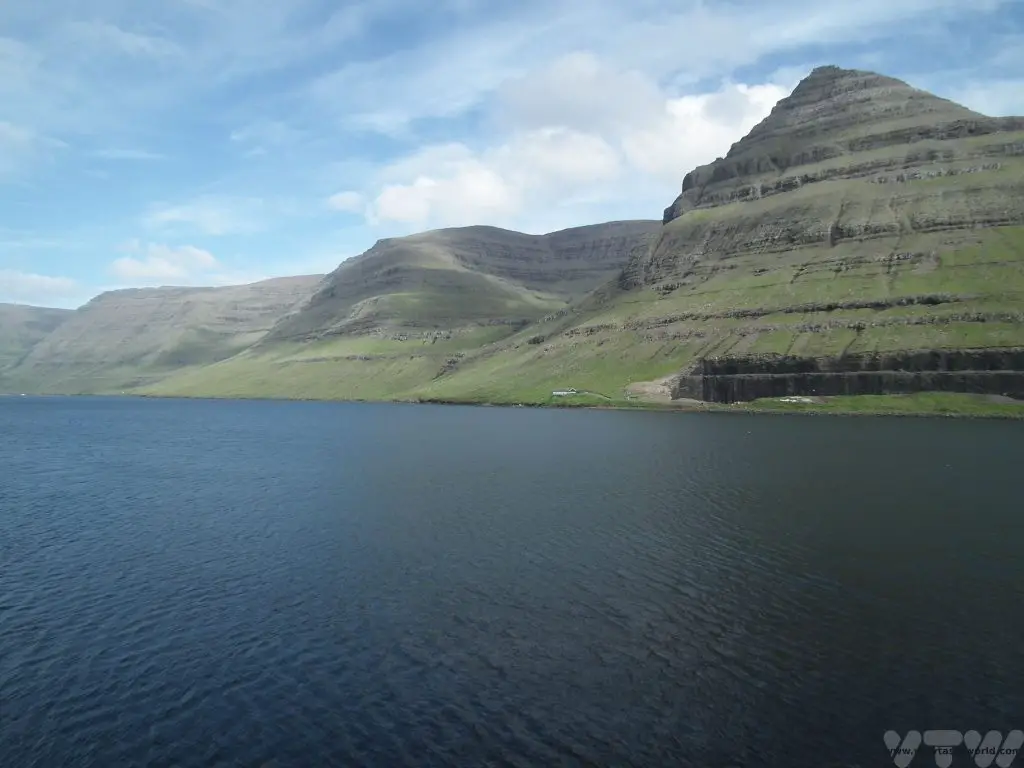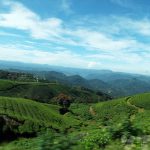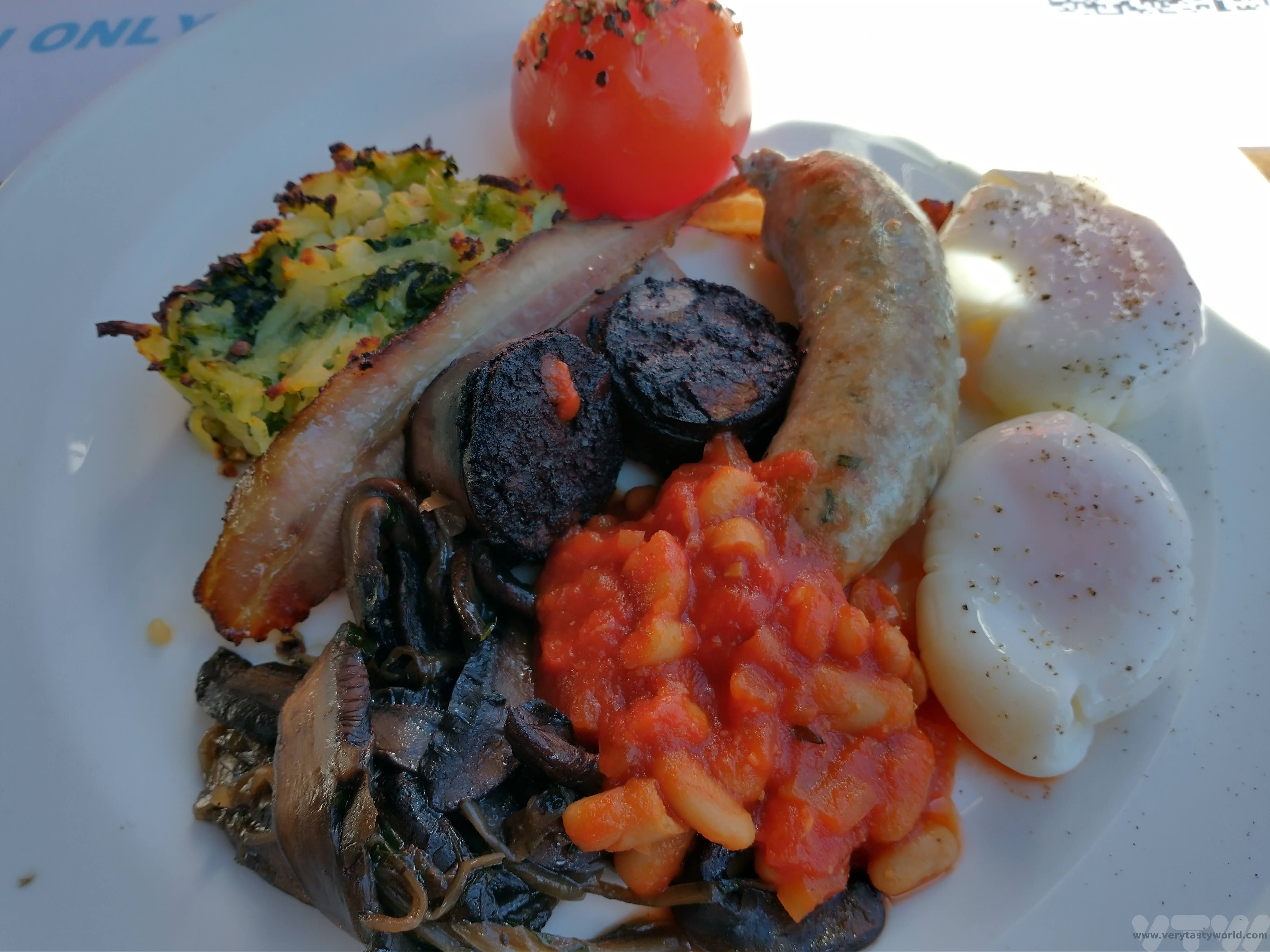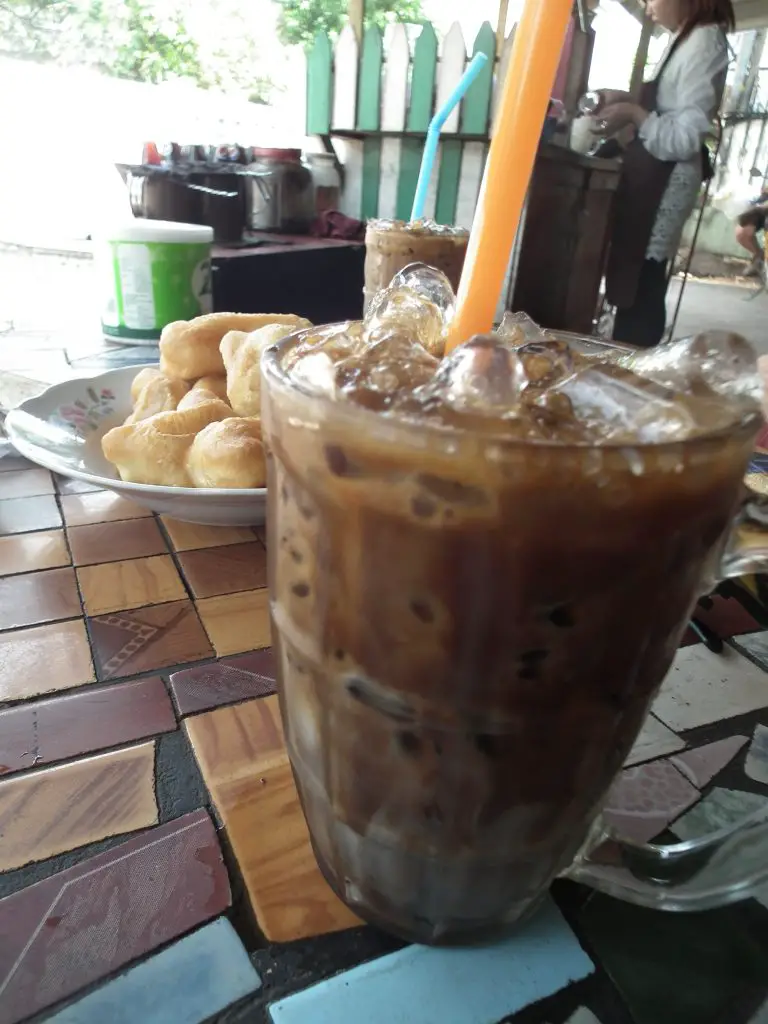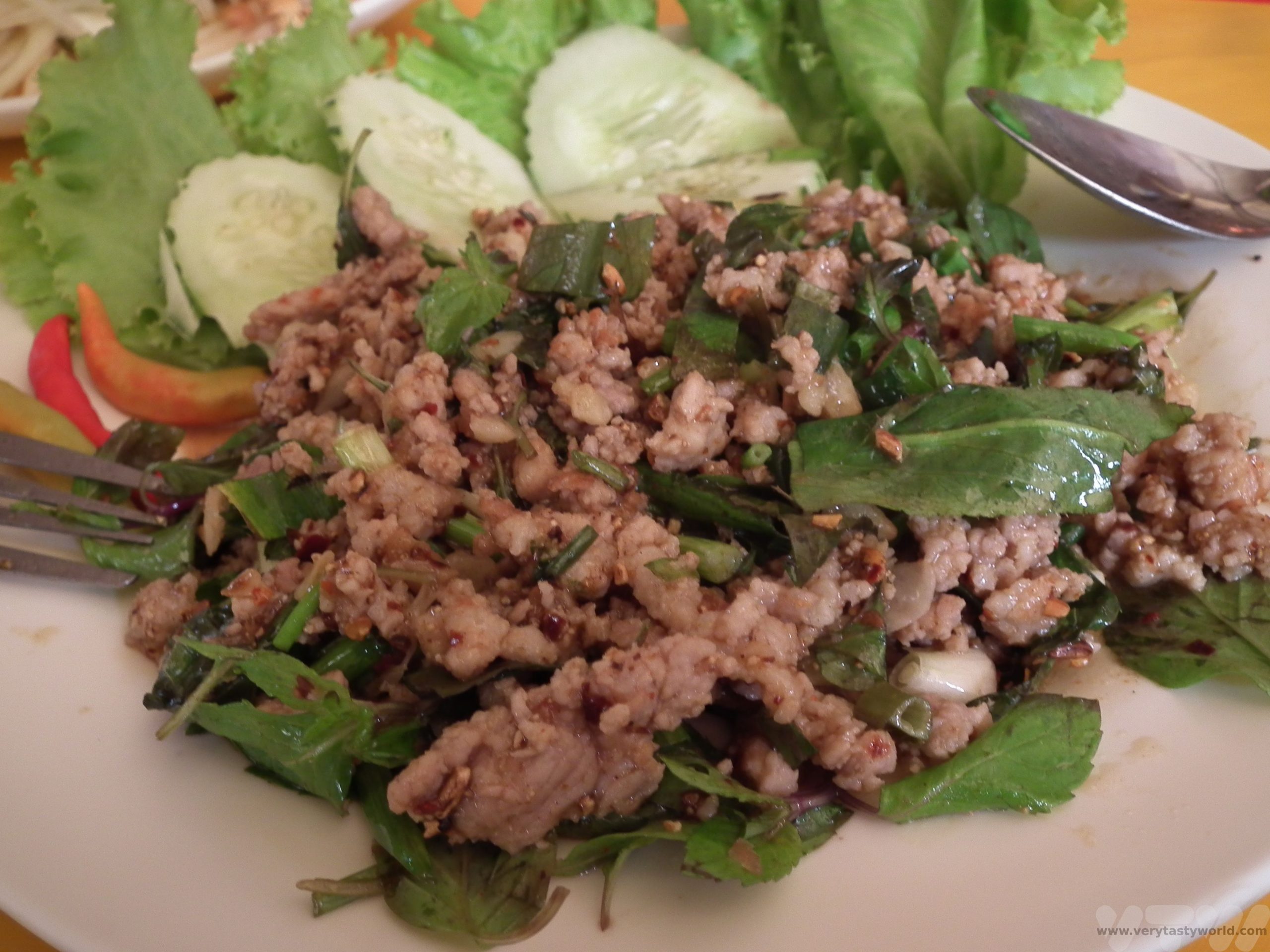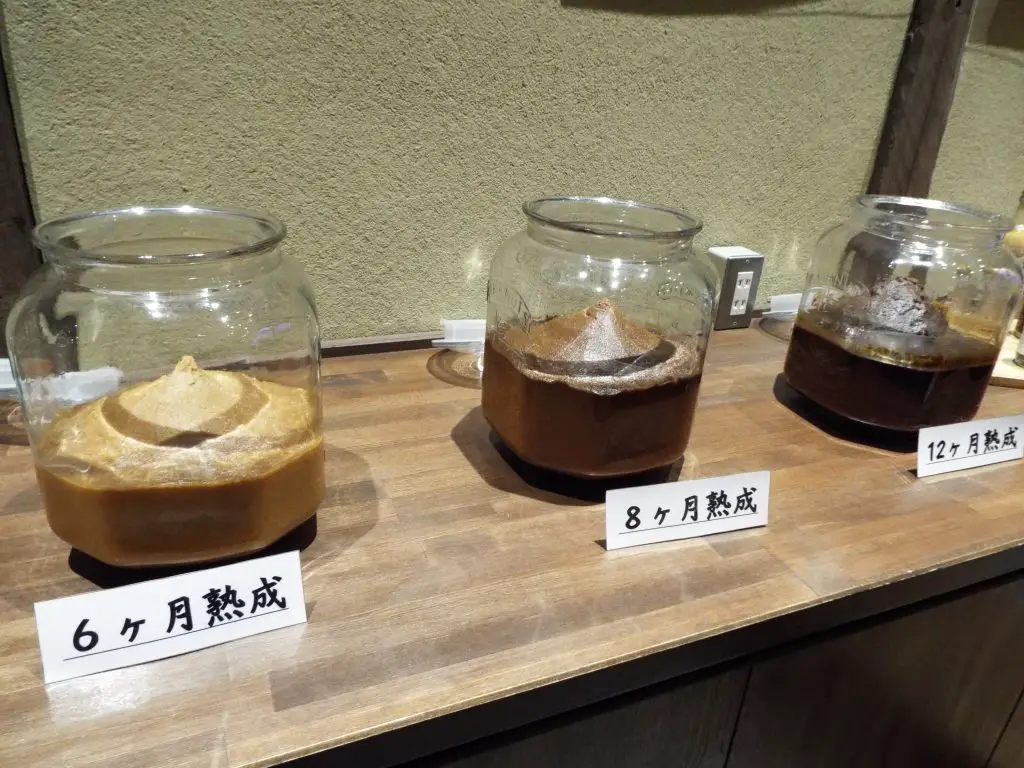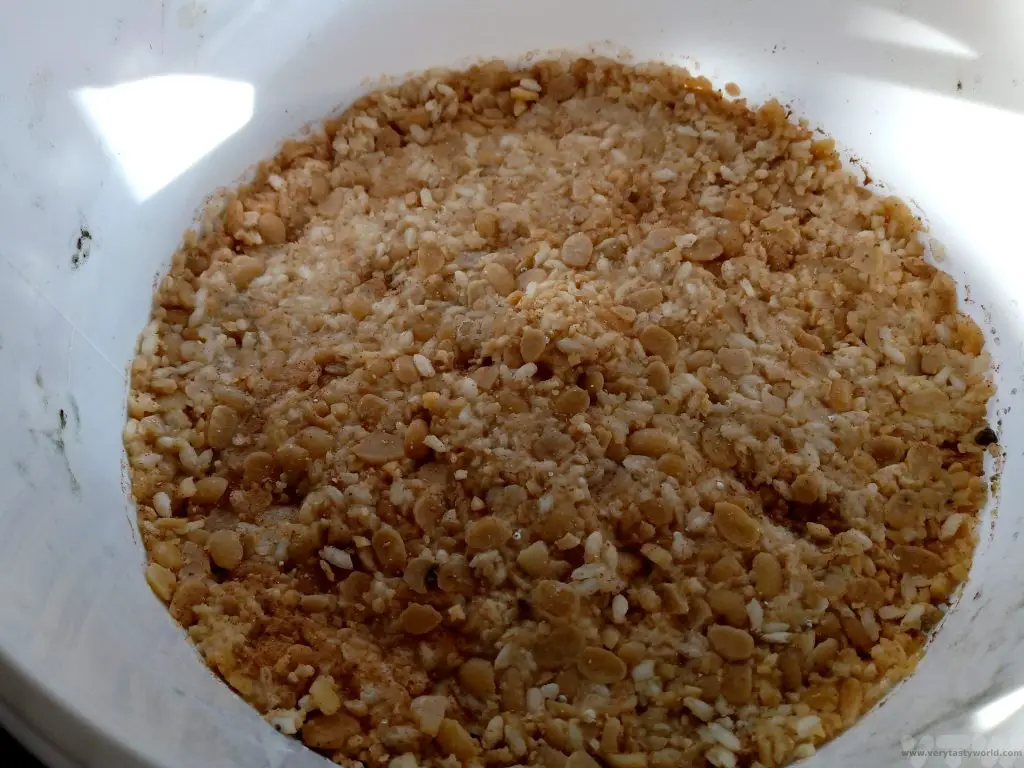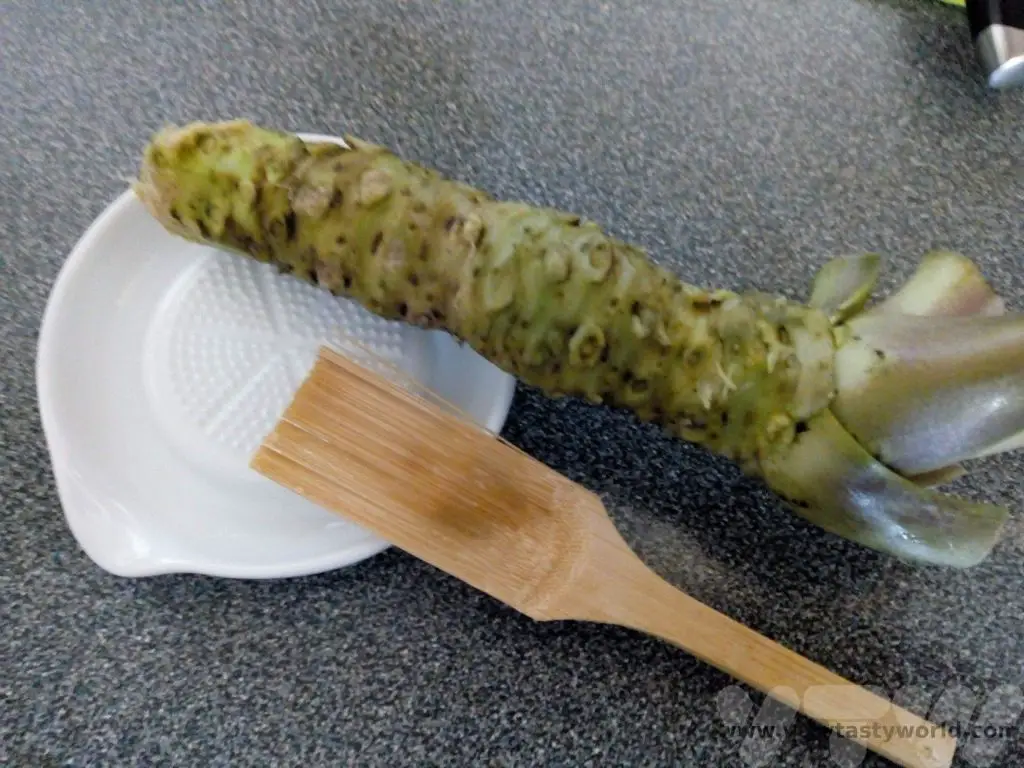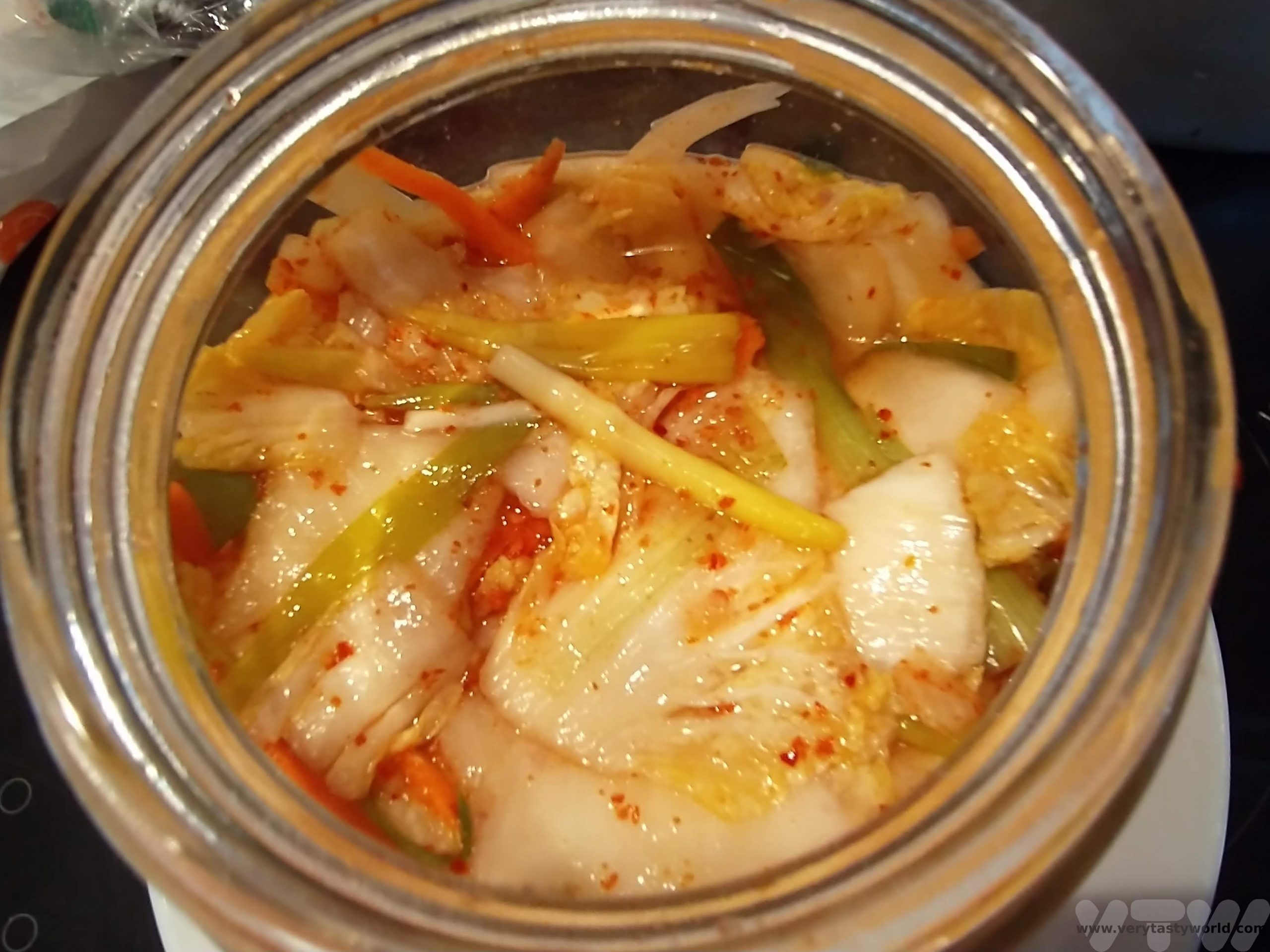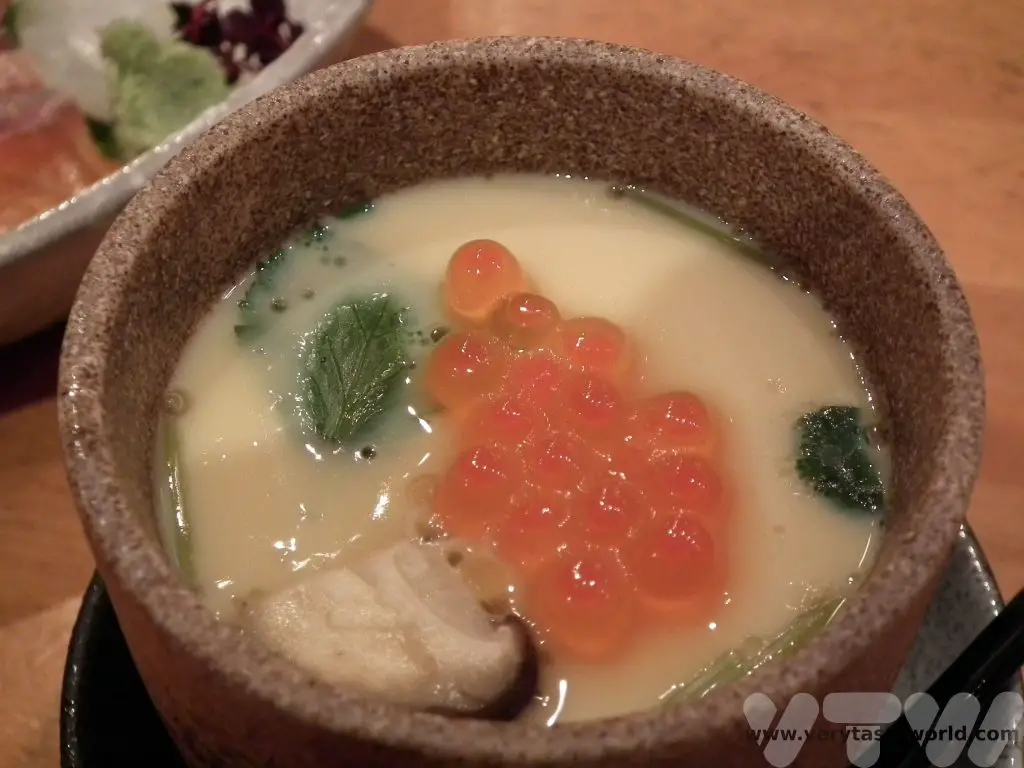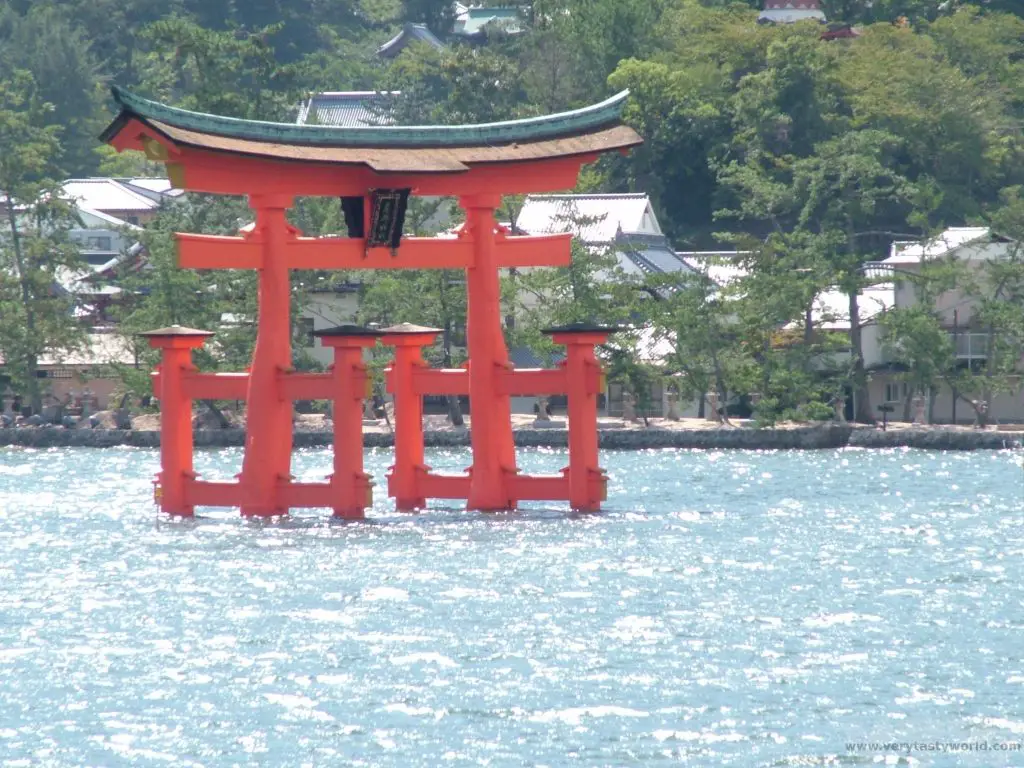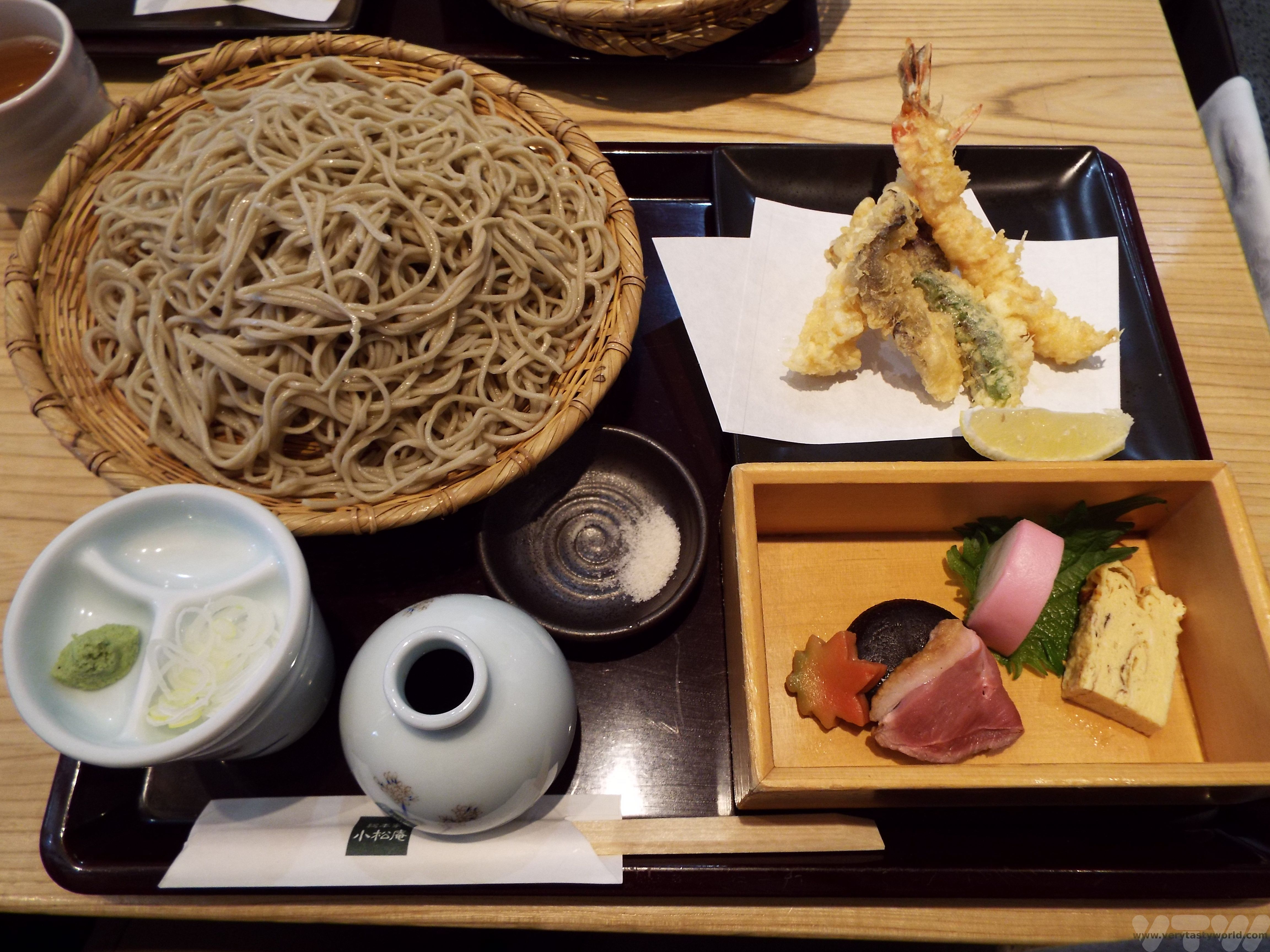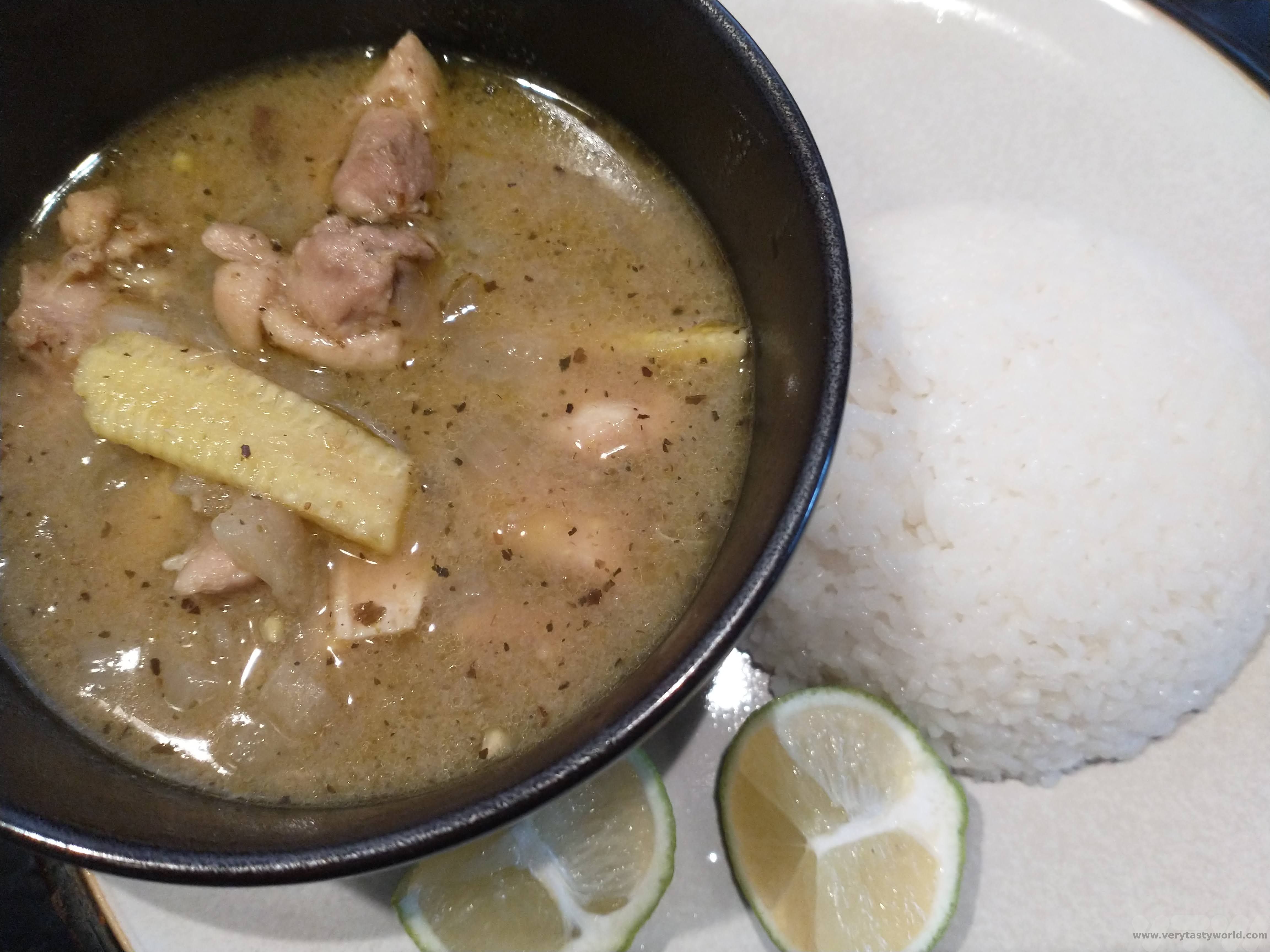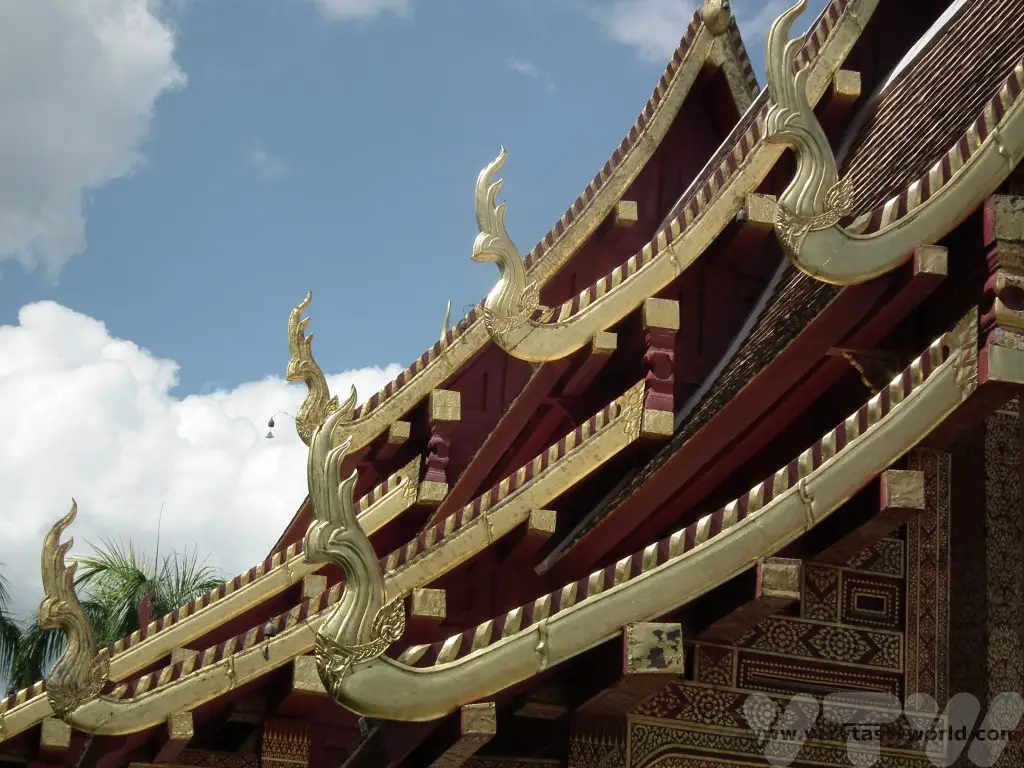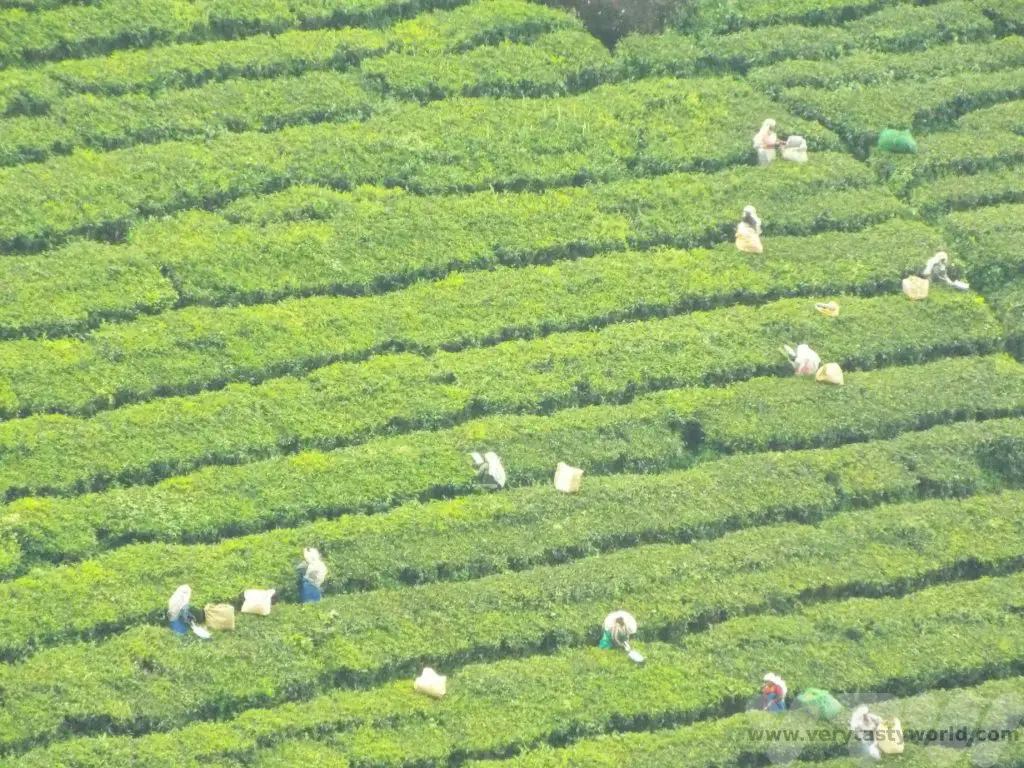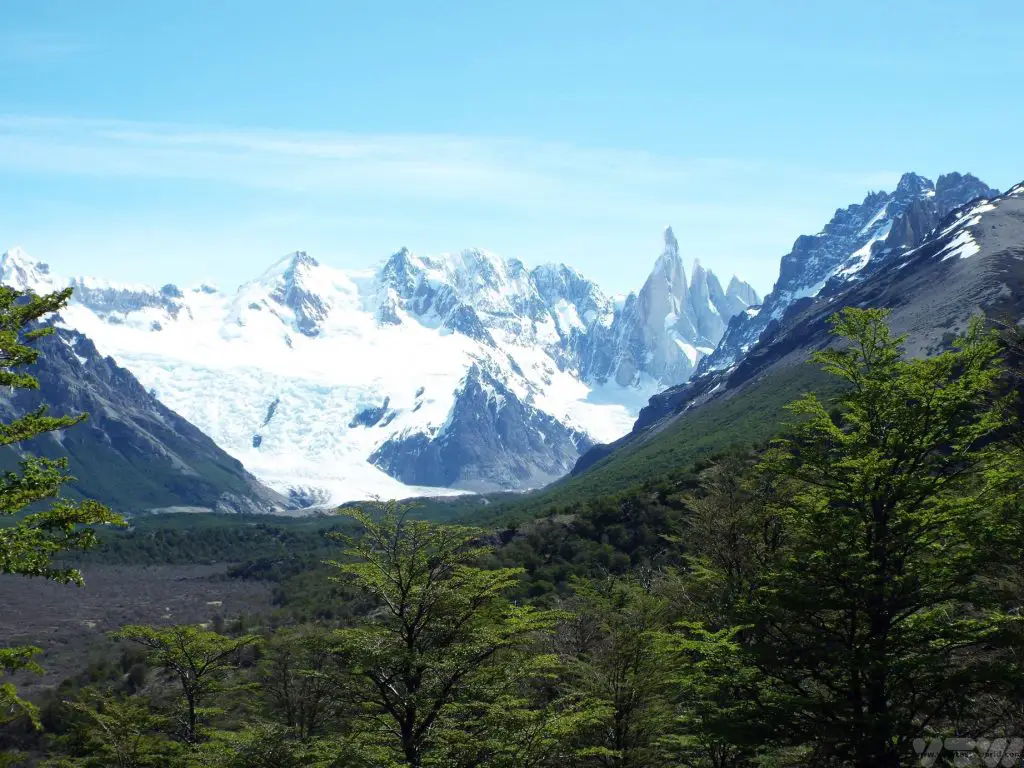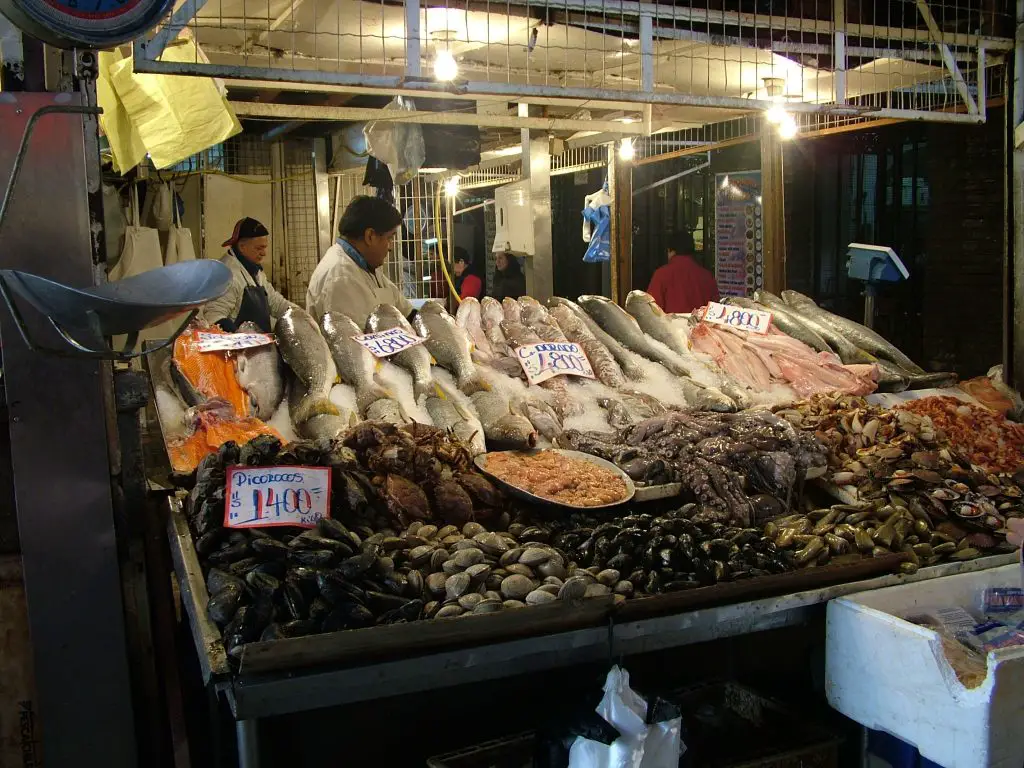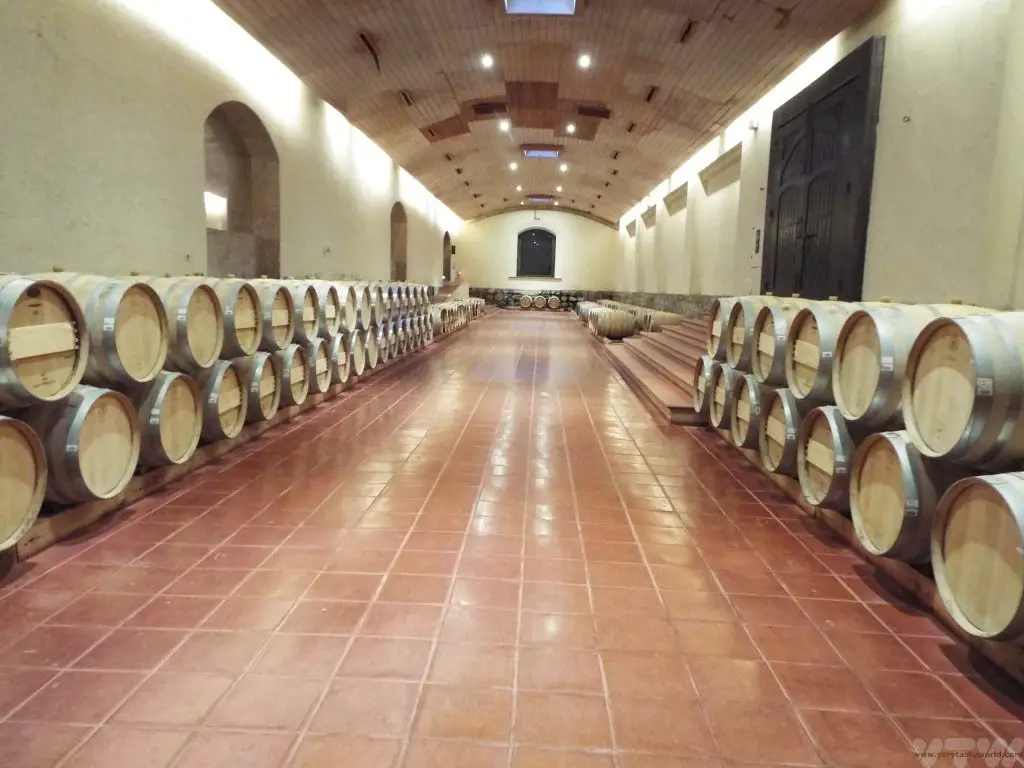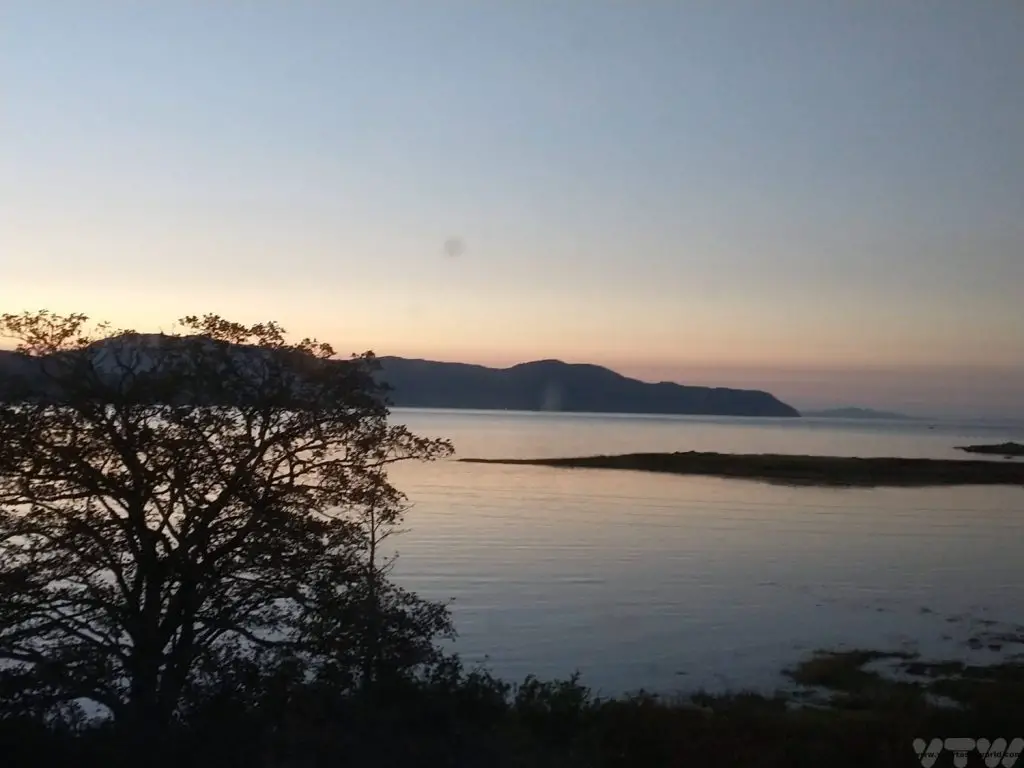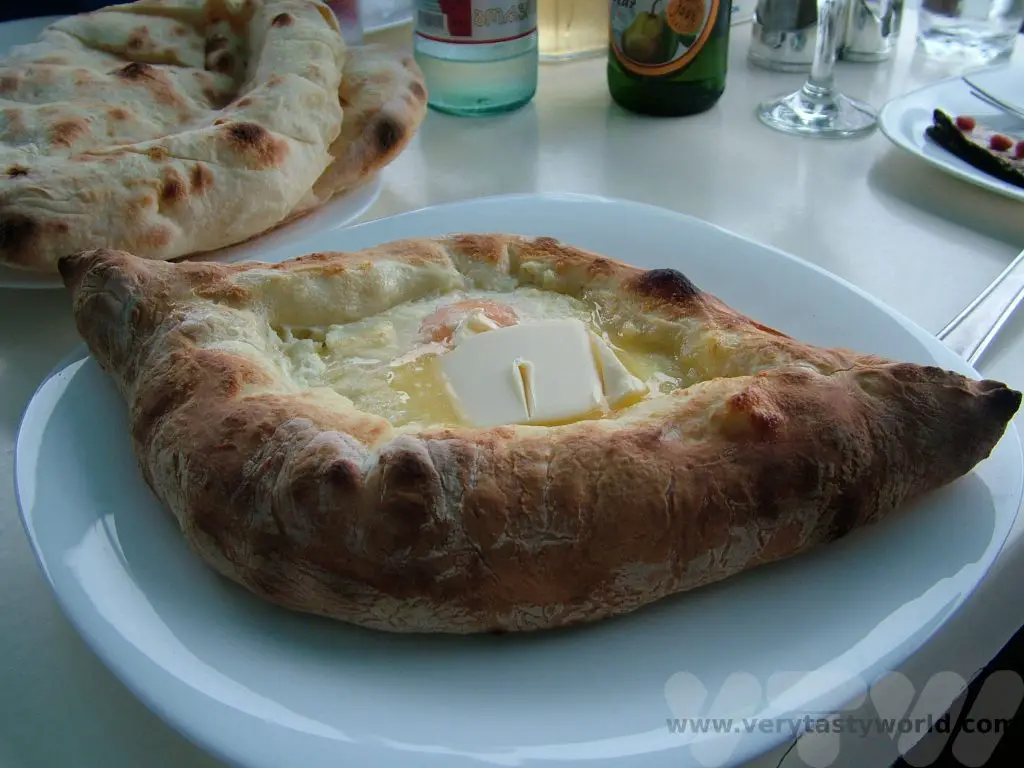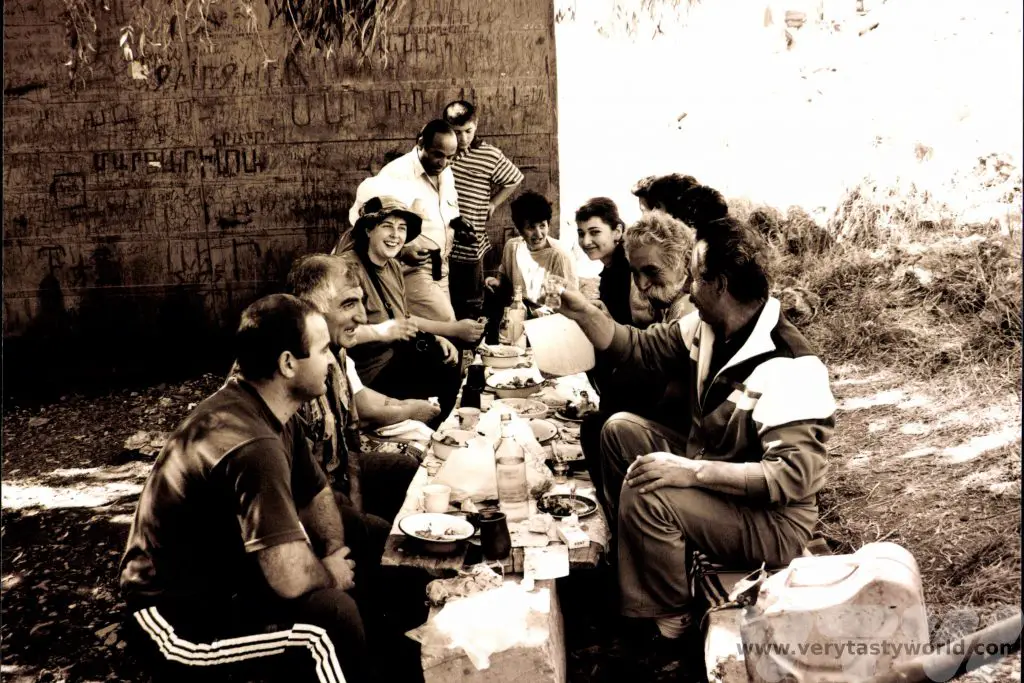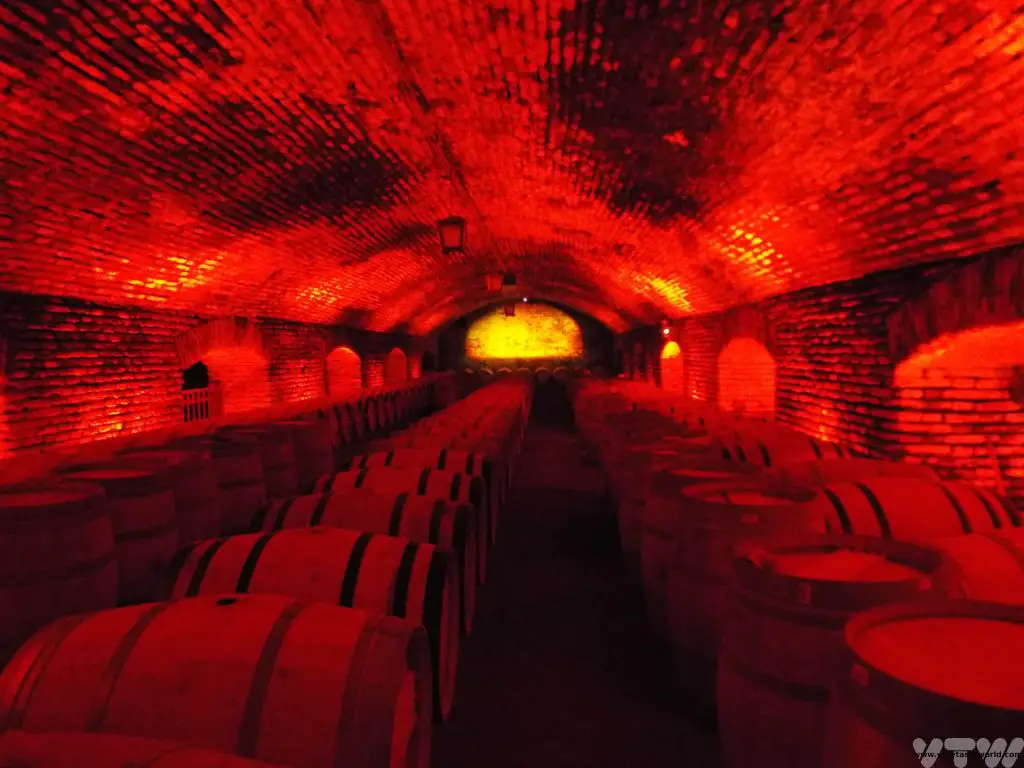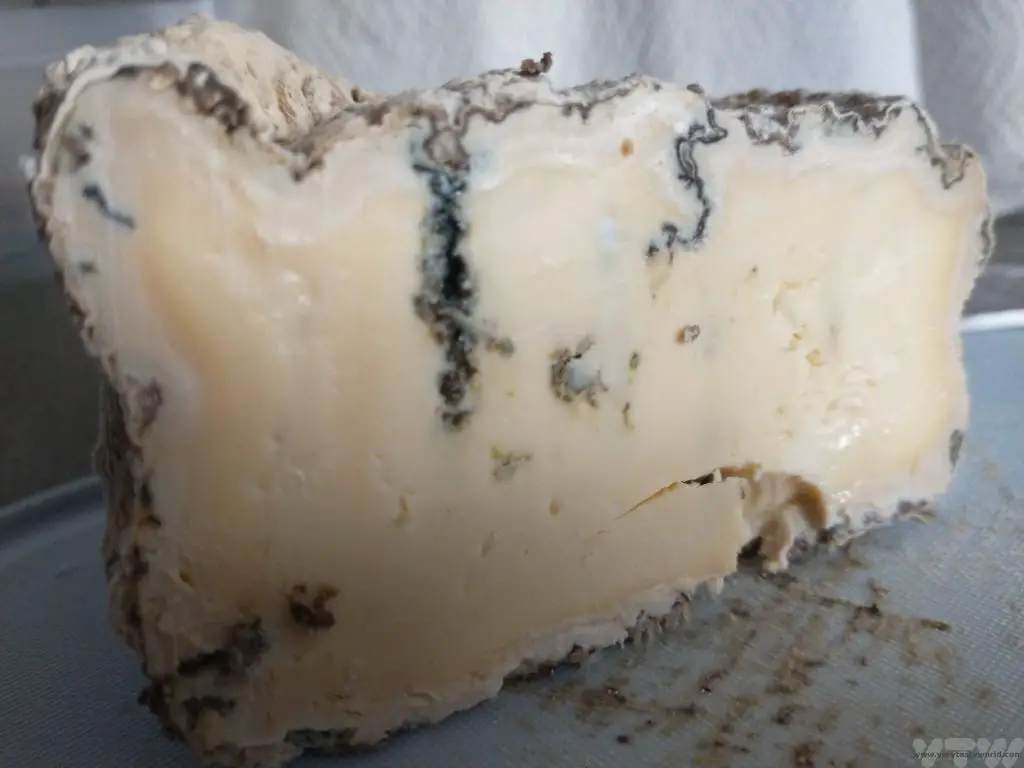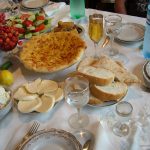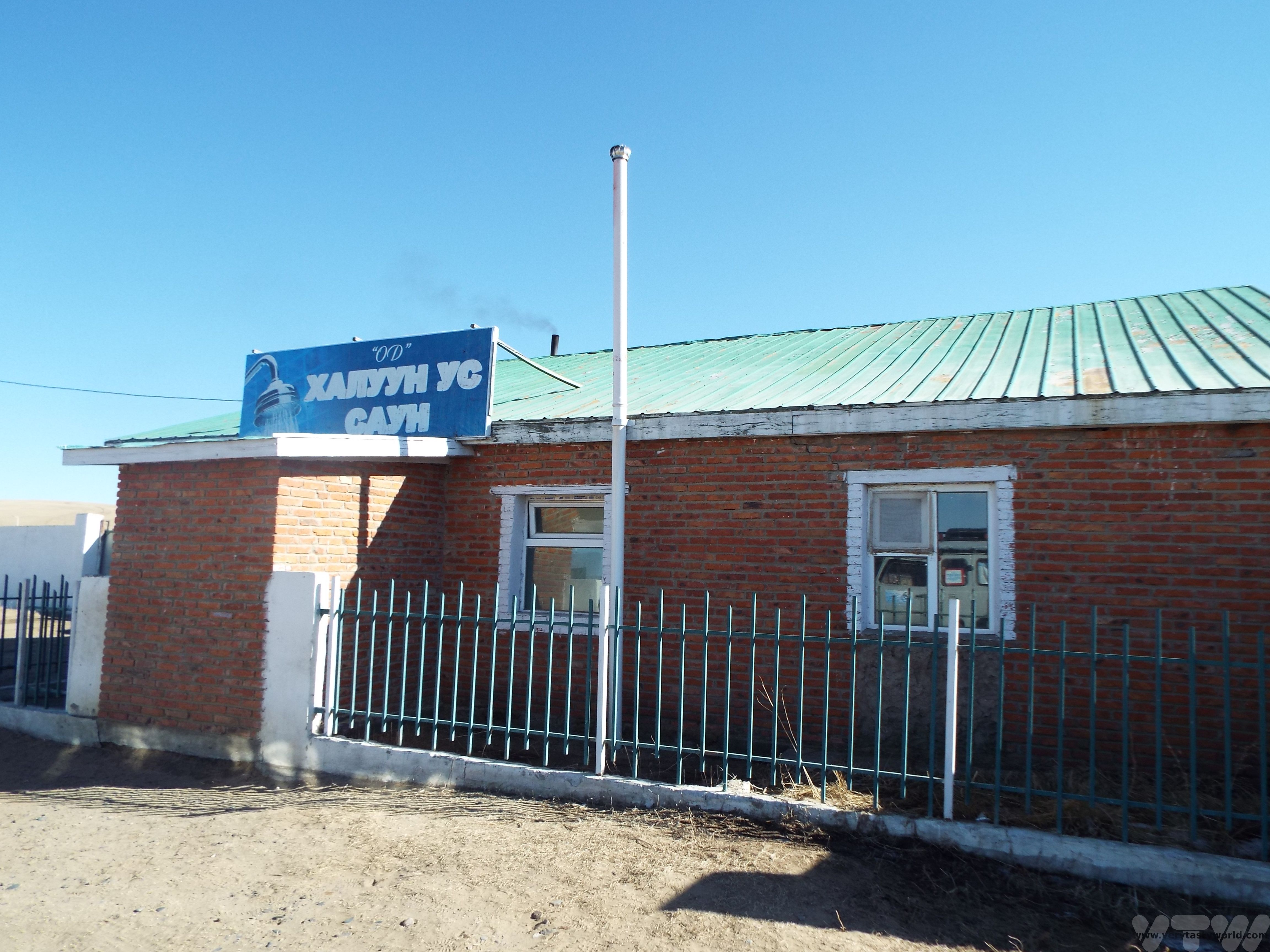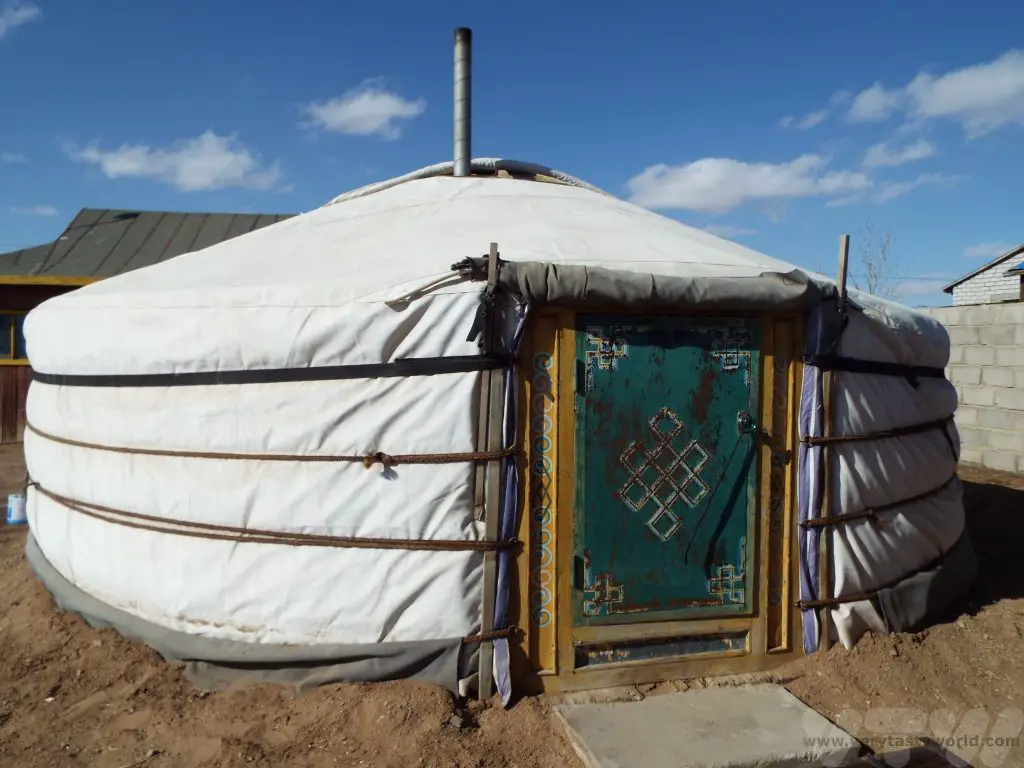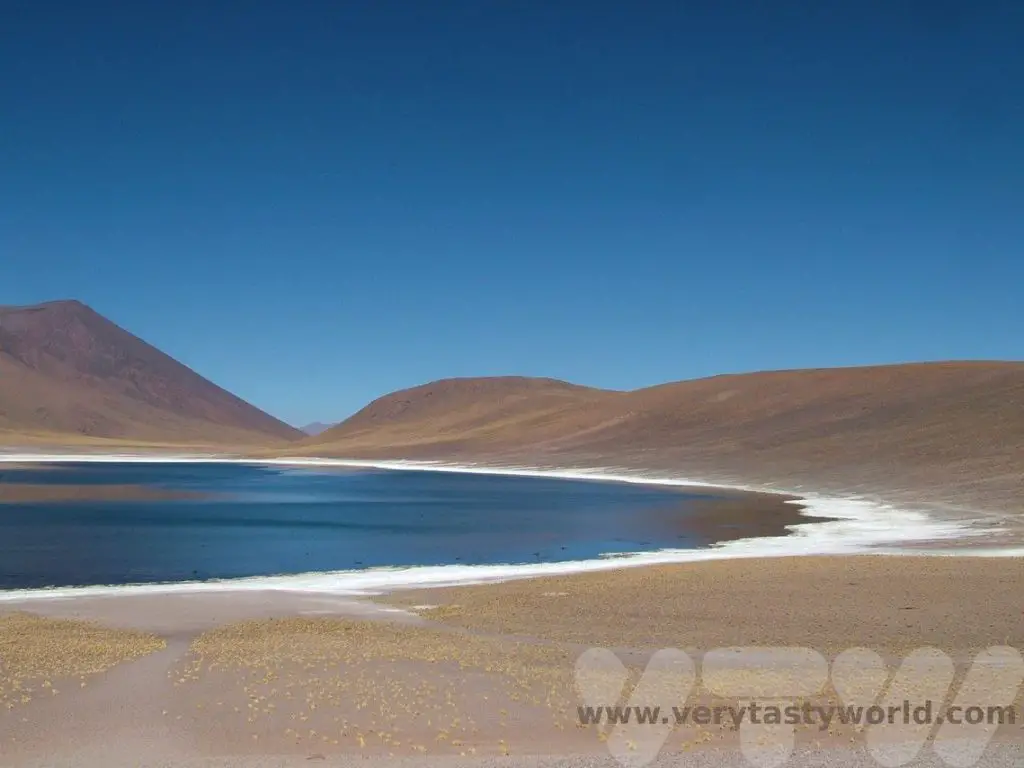Kumarakom Houseboats on the Kerala Backwaters
Kerala, the state in South-west India, is one of the most popular tourist destinations in the country. Blessed with gorgeous landscapes, beaches and hill stations, it also has a rich cultural heritage and an amazing food scene, and it is easy to understand why the local people have named it ‘God’s Own Country’. One of the most pleasurable ways to explore the area is on Kumarakom Houseboats, known locally as a kettuvallam on Kerala’s backwaters. These enormous boats, some of which can be multi-storey, were originally used to transport rice and spices to the port of Cochin, the regional capital.
The backwaters of Kerala are a network of channels, rivers and lagoons that are located just inland from and running parallel to the Arabian Sea. Some of the lakes are connected naturally by rivers or by canals that have been constructed for that purpose. The water is brackish – freshwater meets the salty brine of the sea – and this gives the backwaters a very particular ecosystem.
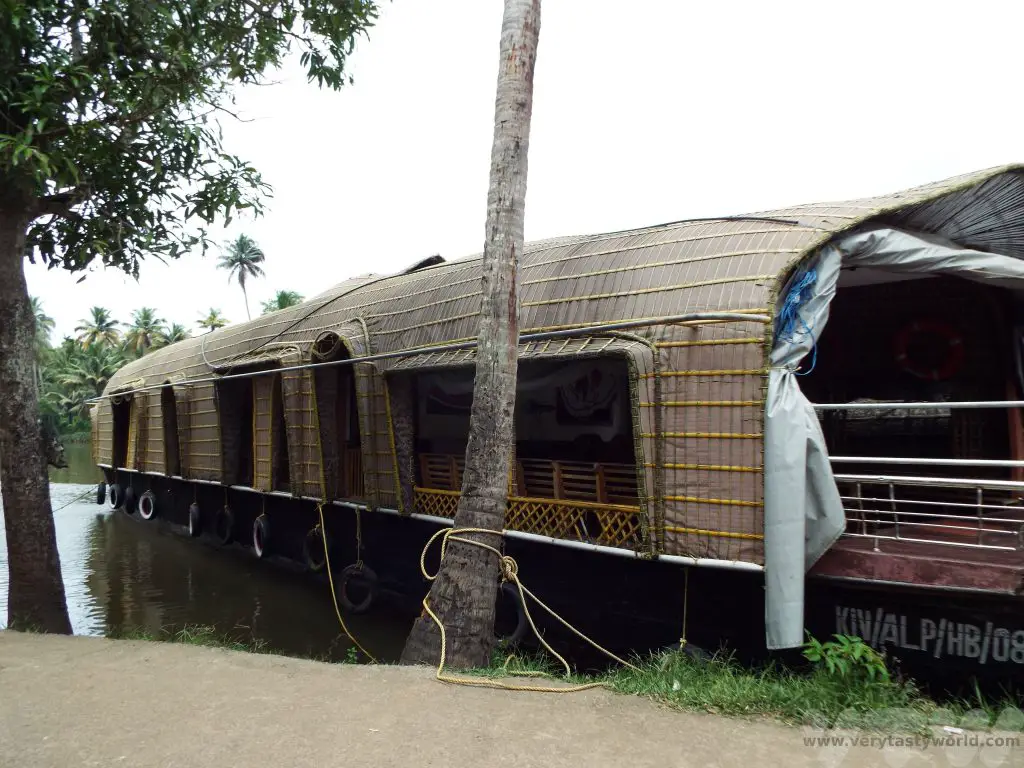
The boats have wooden hulls and a thatched roof. ‘Kettu’ means ‘tied’ and ‘vallam’ is a boat. These boats are constructed from long planks of wood tied with knots of coir and then coated in a resin derived from cashew nut kernels. No nails are used at any stage.
Hiring One Of The Kumarakom Houseboats
Although they were originally designed to be cargo ships they have been adapted for tourism and converted to proper houseboats complete with a living area, kitchen, bedrooms and bathrooms. The boats are available for hire for tourists to reside on, or they can be hired for a few hours at a time. It’s worth noting that boat hire isn’t cheap, especially compared with other prices in the region, but if you can afford it, it is definitely an experience worth undertaking.
Many houseboats are booked months in advance during the busy season and will follow a tour through the backwaters. If you aren’t visiting in the high season you might get lucky and find a boat that’s available to hire. We had been travelling down from Thekkady, arriving at Kumarakom at around 1pm. We managed to find a houseboat that was willing to take us on a four hour boat trip on the local lake and this price included lunch. The prices are for the hire of the boat and crew (normally a couple of people) so if you have a larger party the cost per person naturally reduces. You may find that if the boat is still available and hasn’t already found customers, it may be possible to negotiate a price.
A Tour Of The Houseboat
The thing that is most striking about the houseboats is how spacious they are.
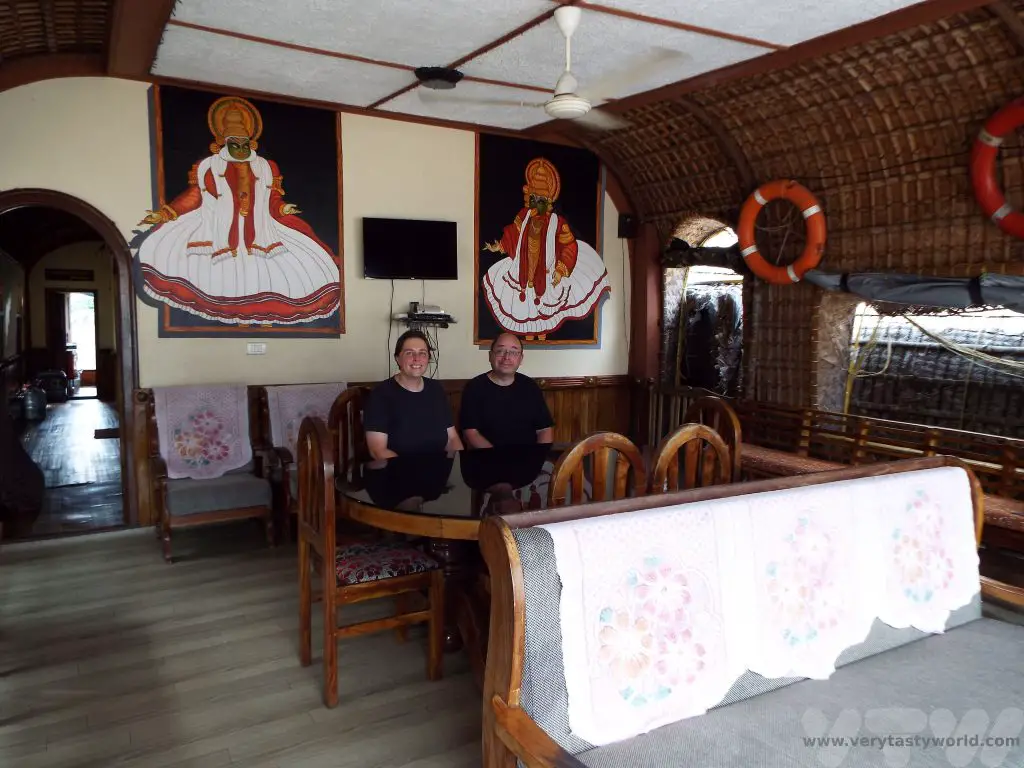
The living/dining area at the front has room for a dining table and plenty of seating space
The houseboat is steered from the front.
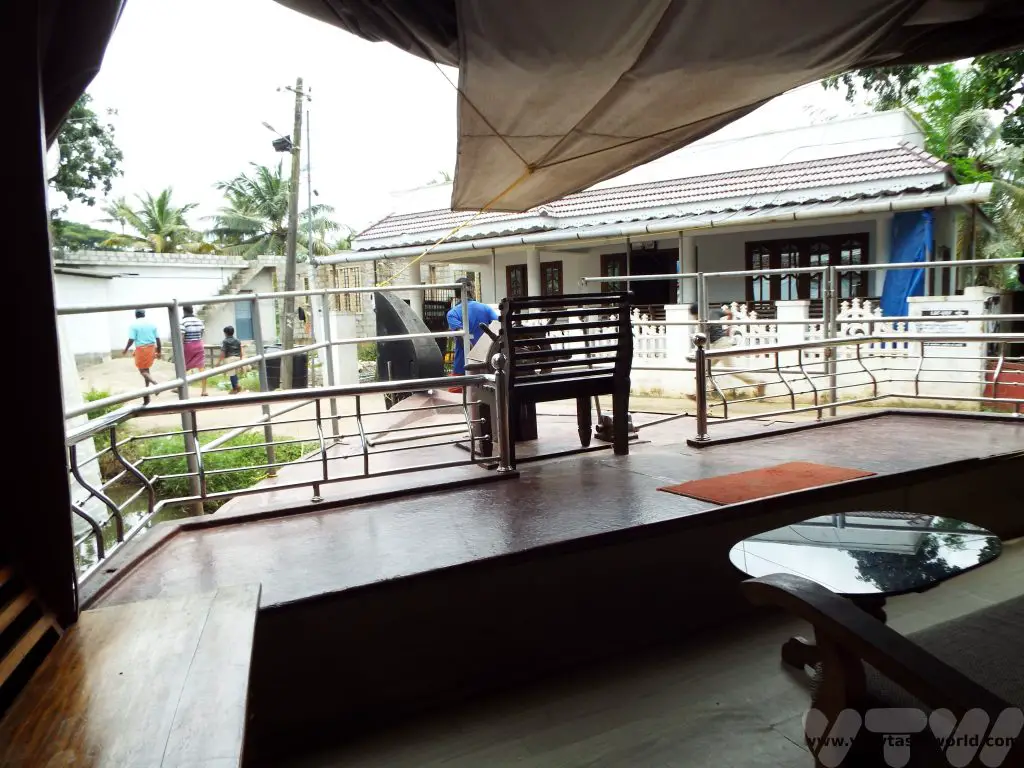
Then there is a long corridor from which there are large double bedrooms. Each bedroom has its own en-suite bathroom.
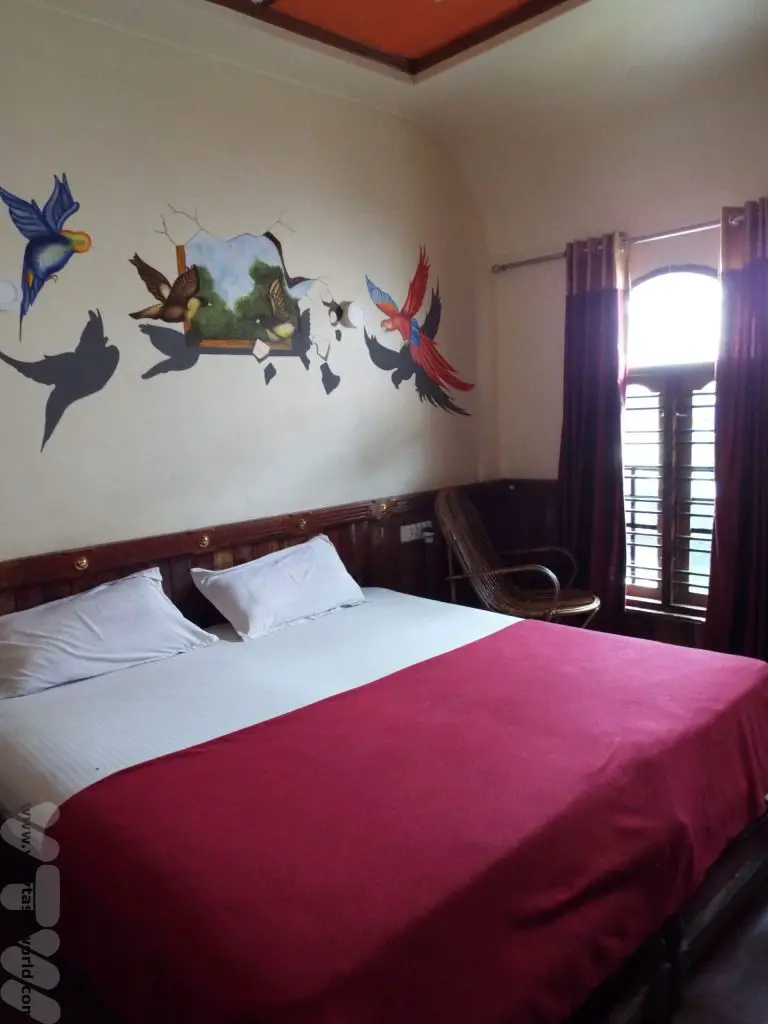
As with all areas in South India where food is served, there is a hand-washing area in the corridor.
Finally, the kitchen is located at the rear of the boat. Again, it is very spacious and has plenty of cooking facilities and storage space. Gas is provided by portable cannisters.
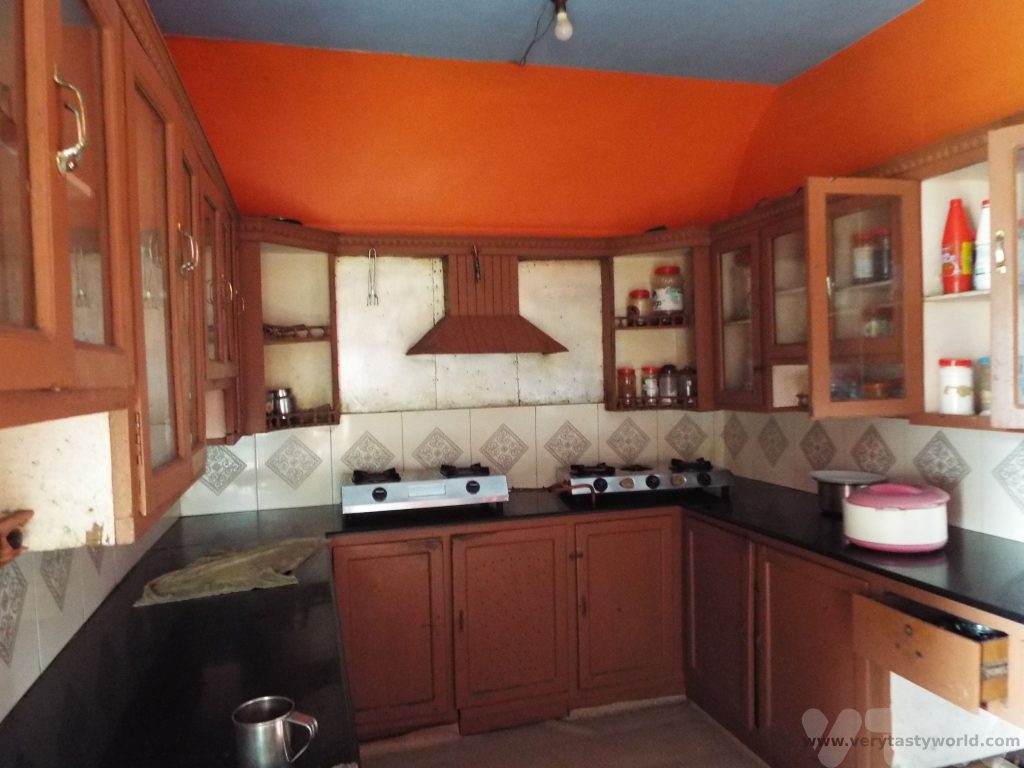
Lunch was already in the process of being prepared…
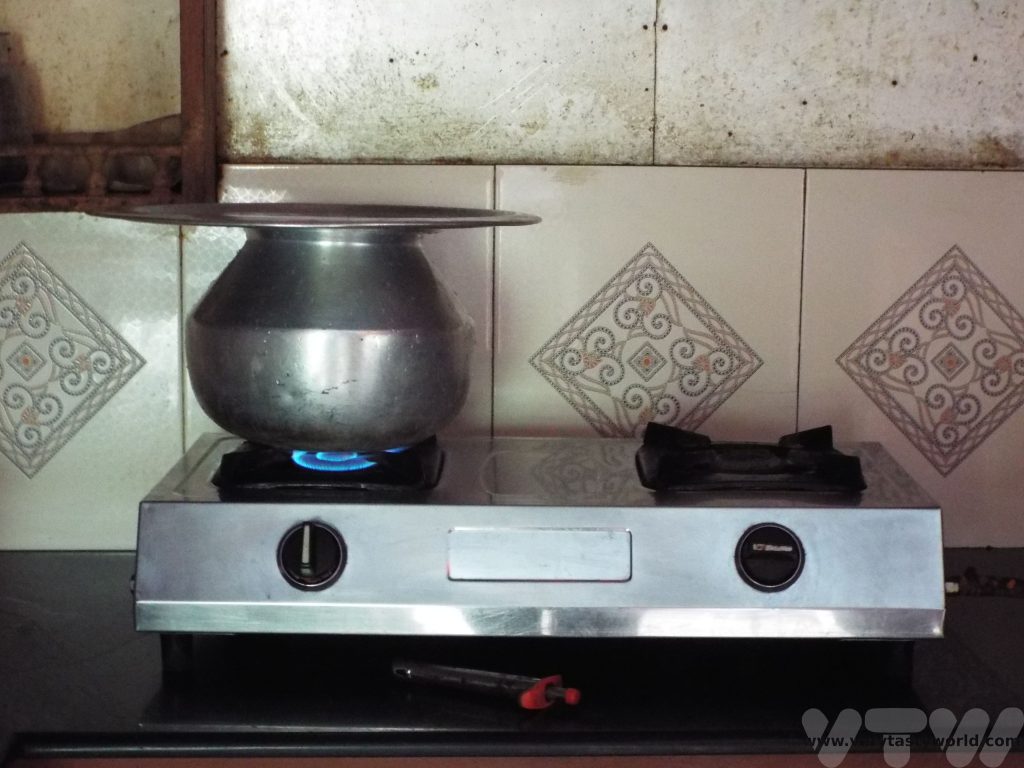
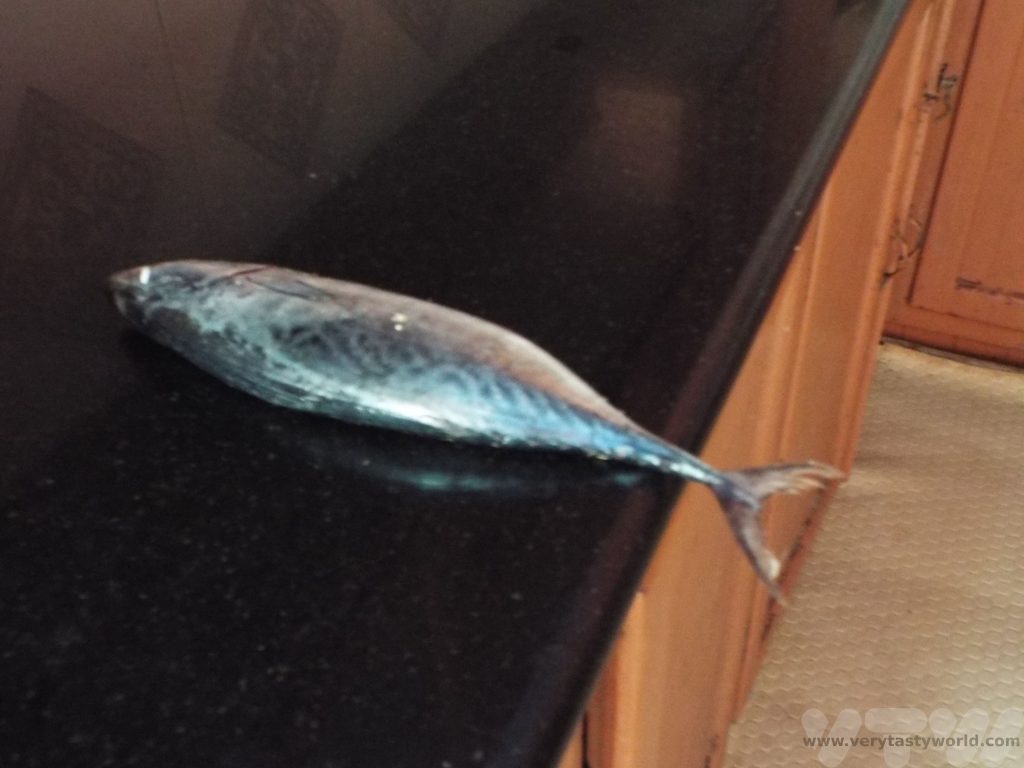
A Laidback Cruise on the Lake
The journey on the Kerala houseboat took us from the boat’s mooring along the river and onto the wide Vembanad lake. The boats are motor driven but move at a slow pace which makes for a leisurely experience. It very much reflects the way of life in Kerala.
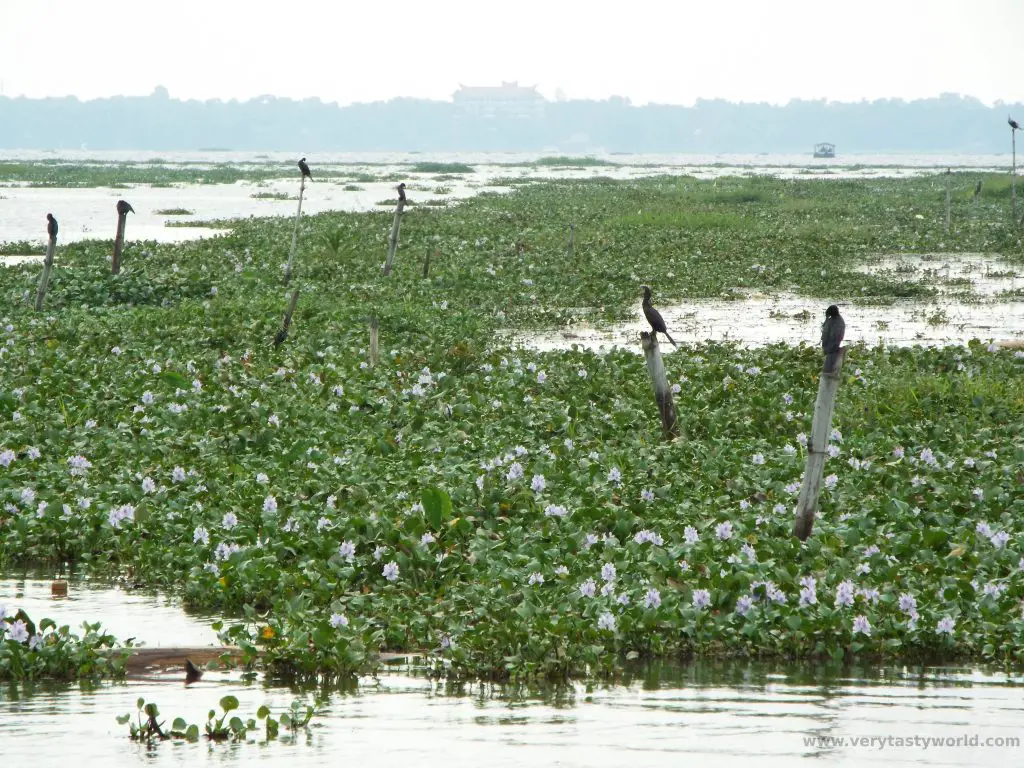
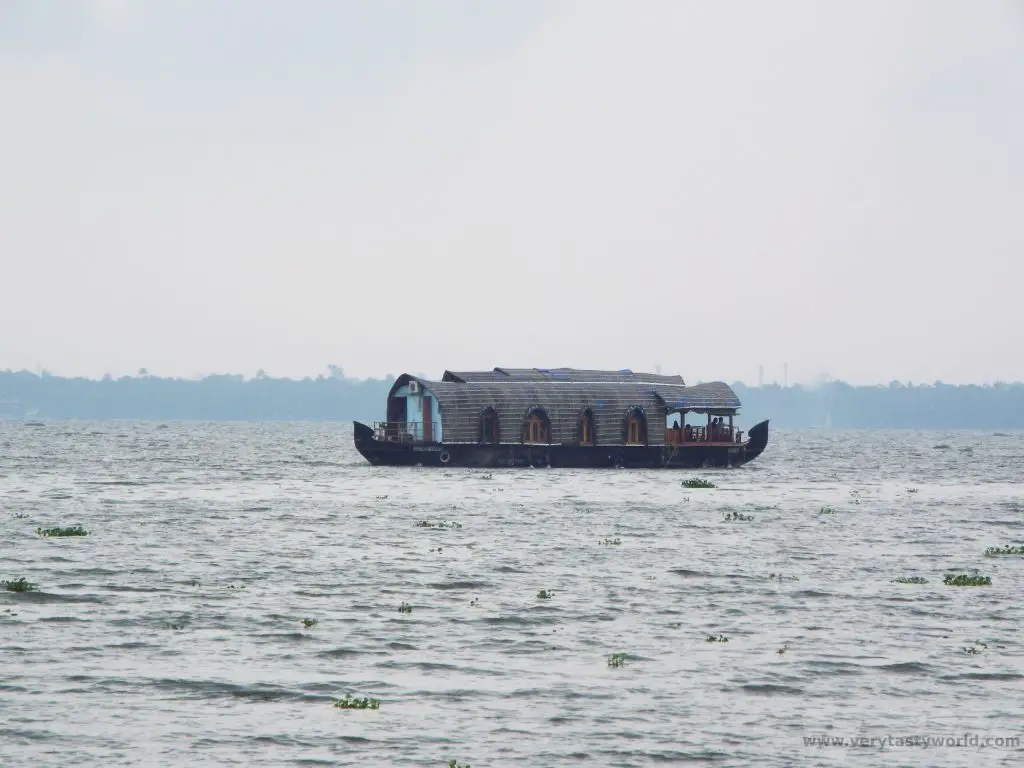
All along the shoreline it is possible to see fishing contraptions. They are formally known as shore operated lift nets, which doesn’t sound nearly as romantic as they look. These are used at night to catch prawns and other small fish. They are designed on a cantilever which ensures that the net descends into the sea when someone walks along the main beam. The catch is then raised by the use of ropes. Some have lights which are used to attract the fish.
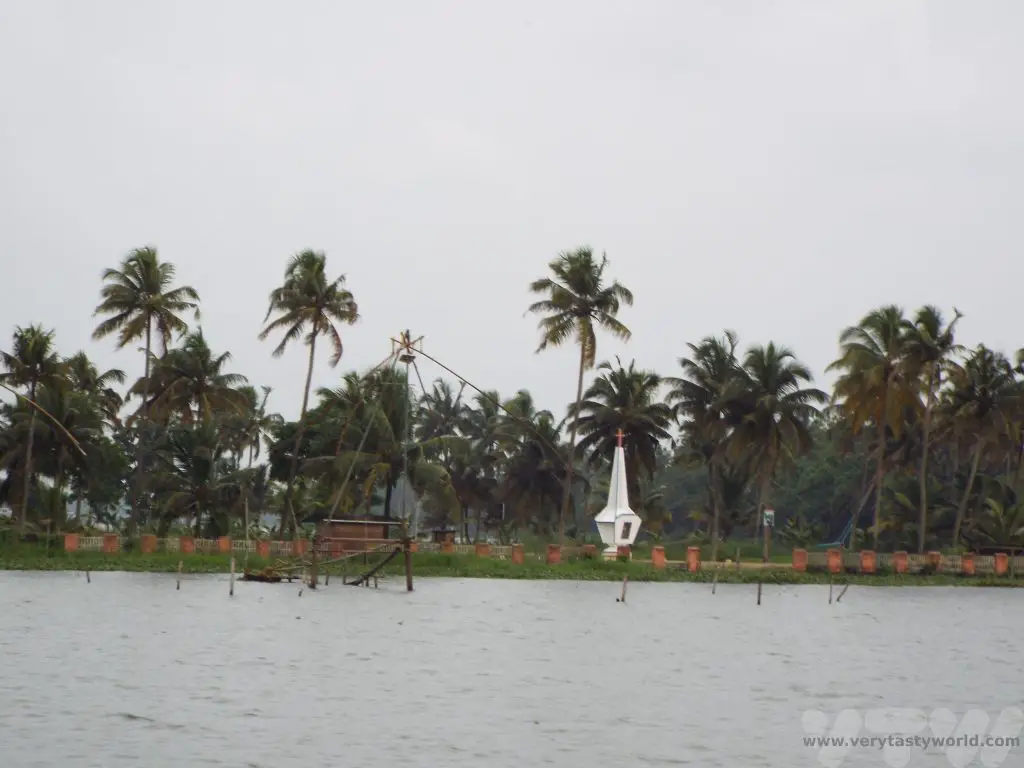
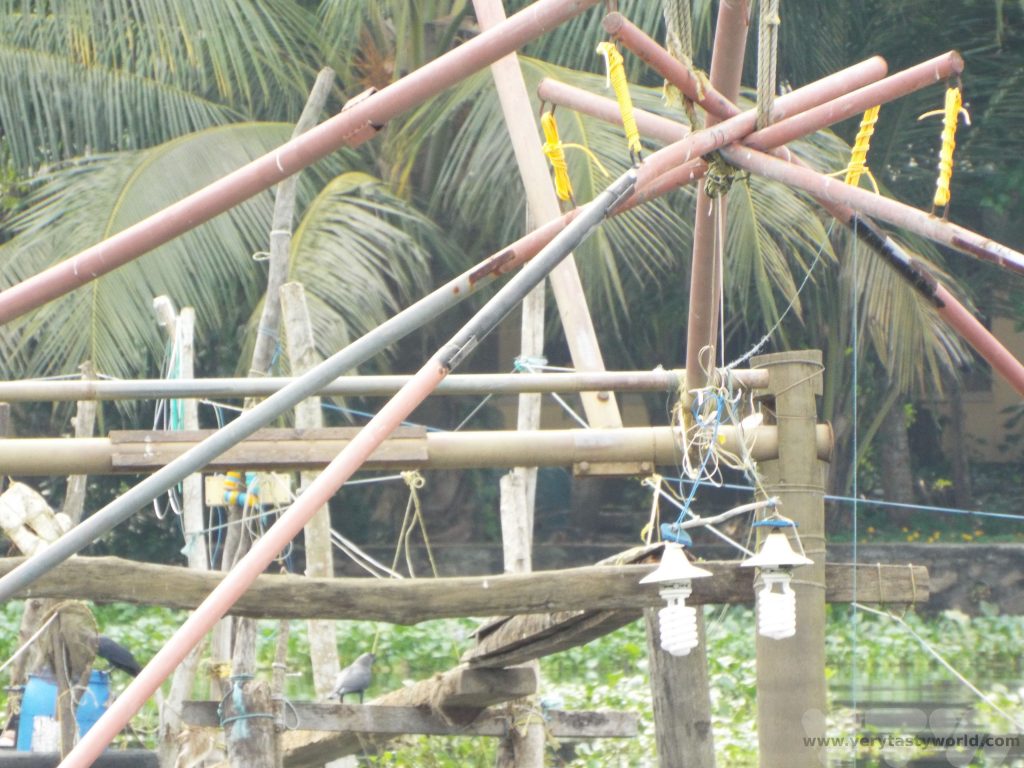
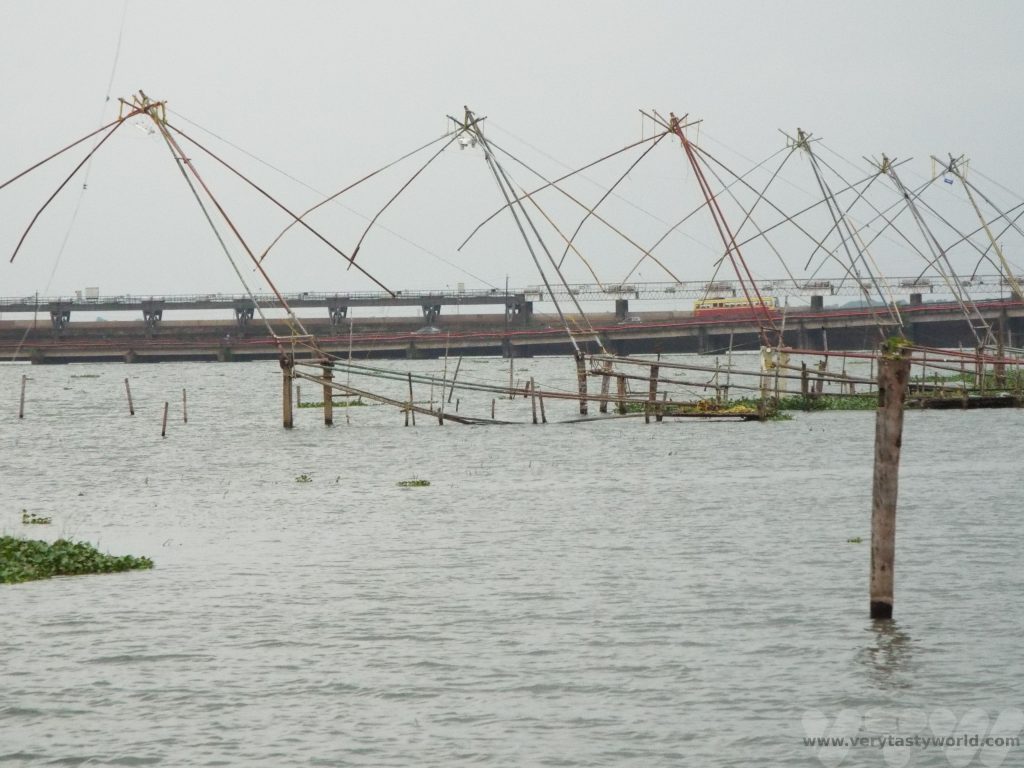
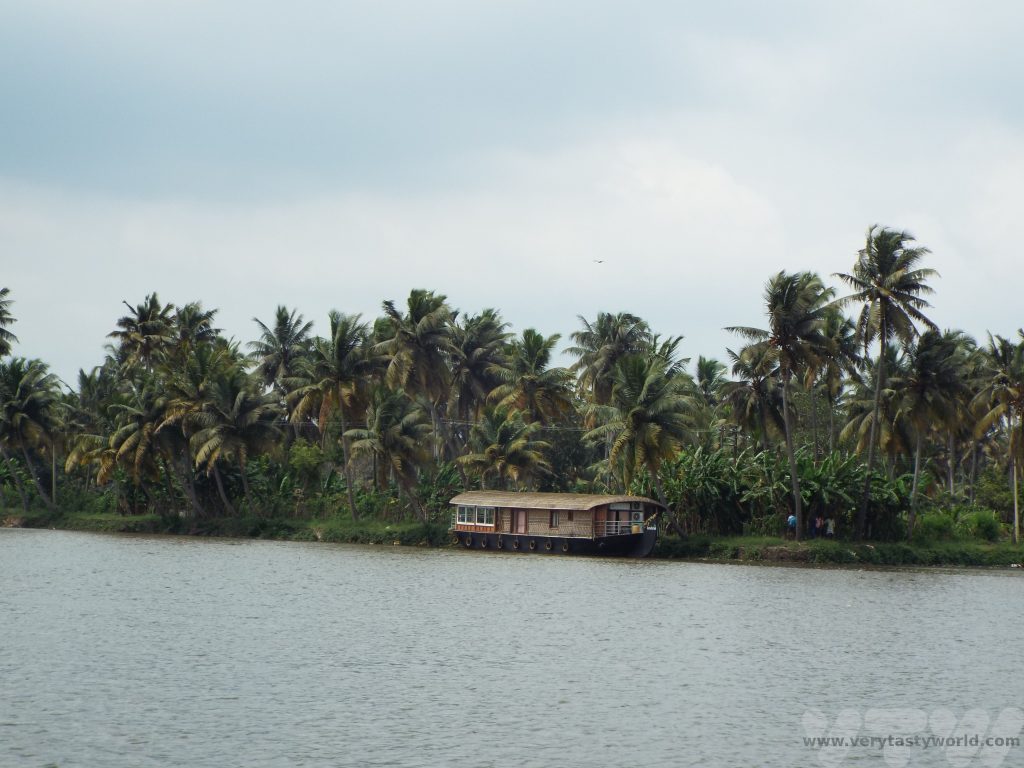
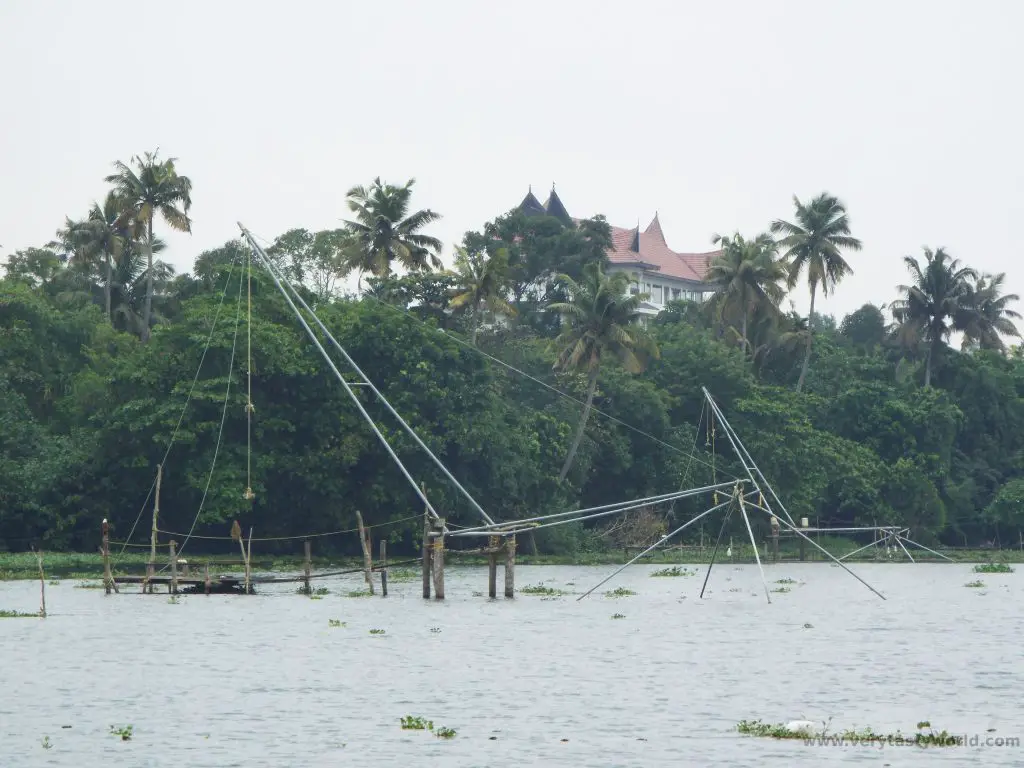
Dining on the Houseboat
Lunch on the Kumarakom houseboat comprised typical dishes from the region – a spicy fish curry with fish fry accompanied by vegetable side dishes and rice. We were asked how spicy we liked our food and we asked for it to be spiced as local people liked it. Like many dishes in Kerala we found that the spices were used for flavour rather than heat. And, of course, it was utterly delicious.
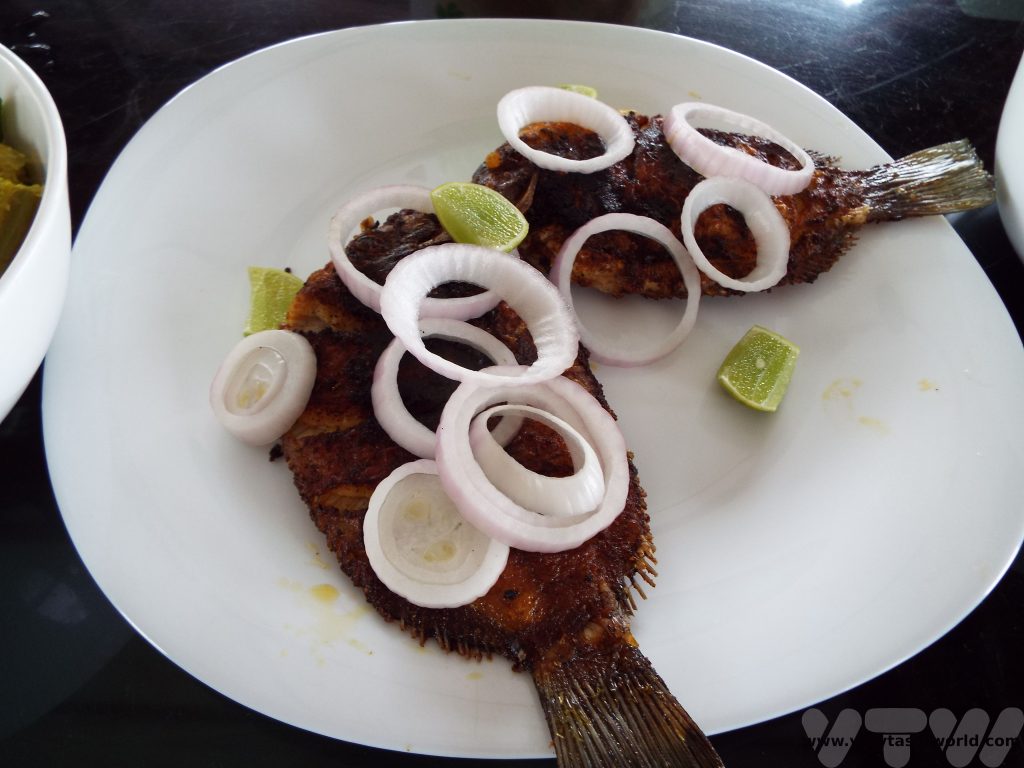
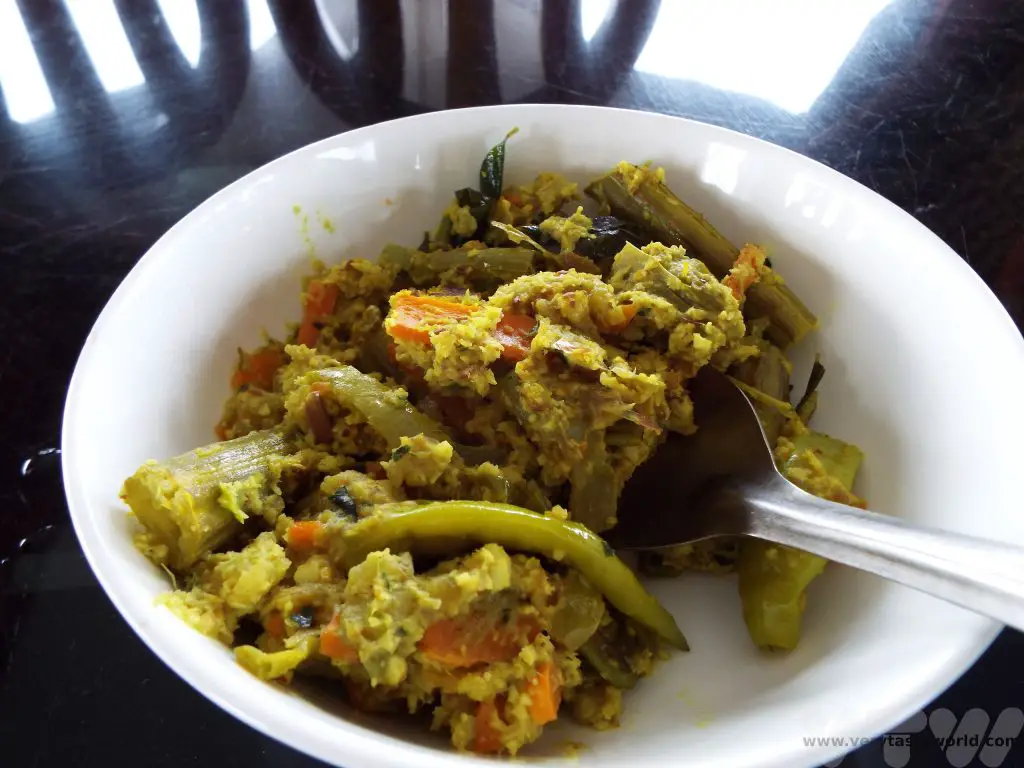
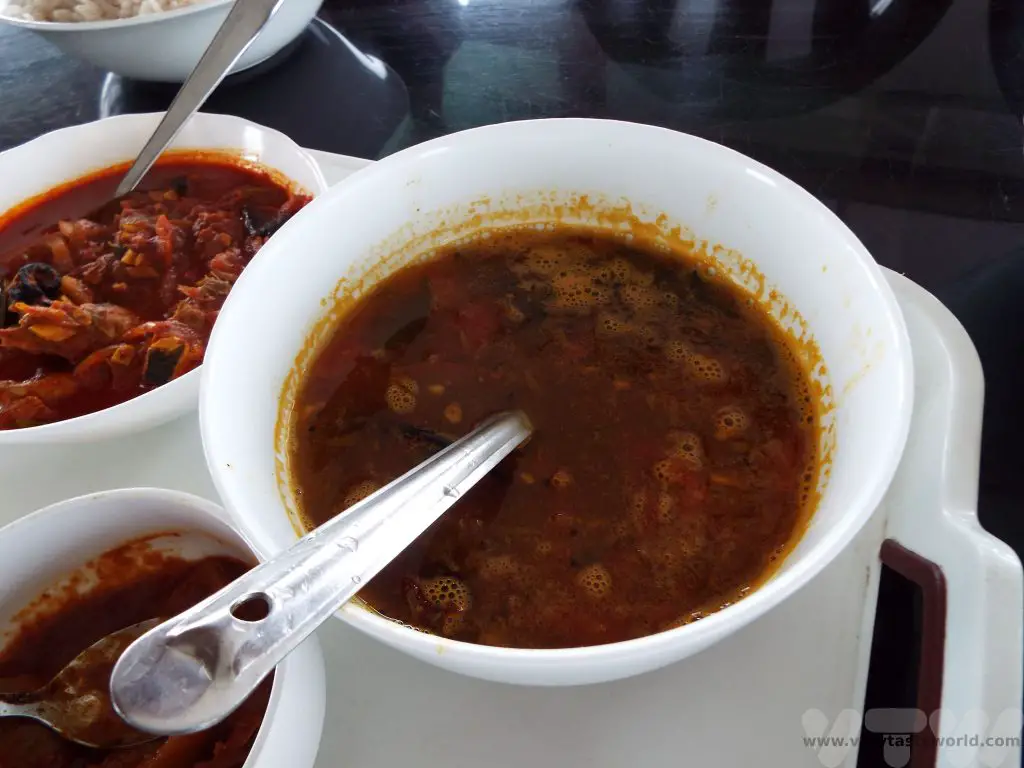
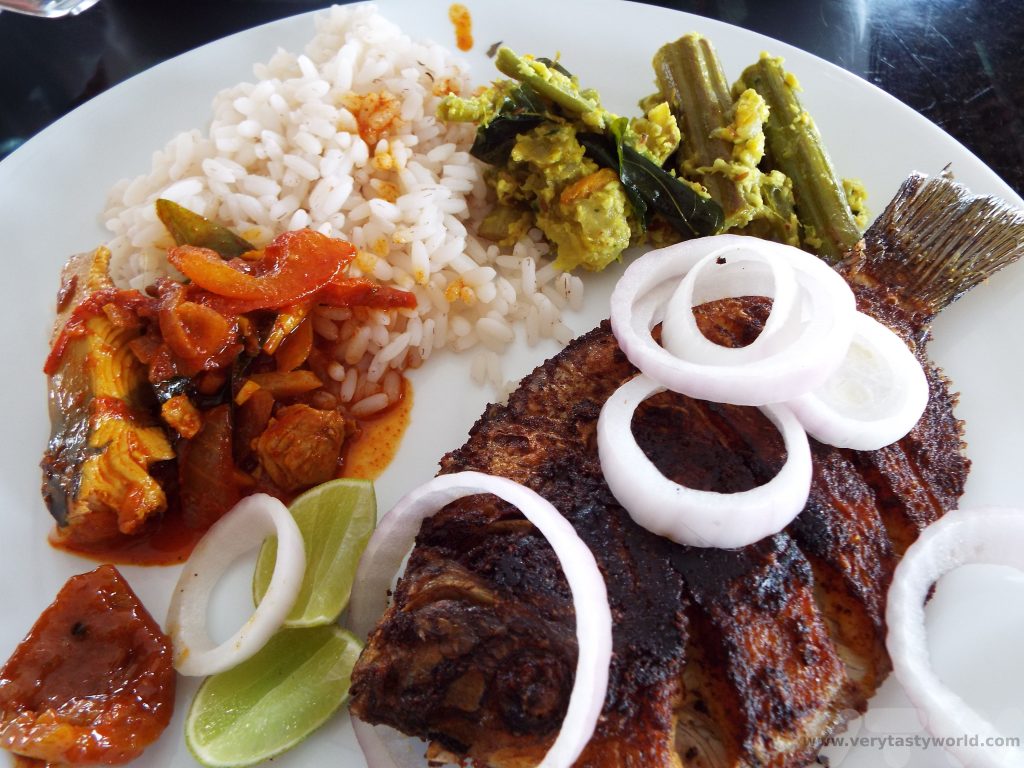
Munnar tea and a banana fritter were served for dessert.
We were visiting at the end of the Monsoon season so some rain was probably inevitable. But even a downpour couldn’t dampen spirits.
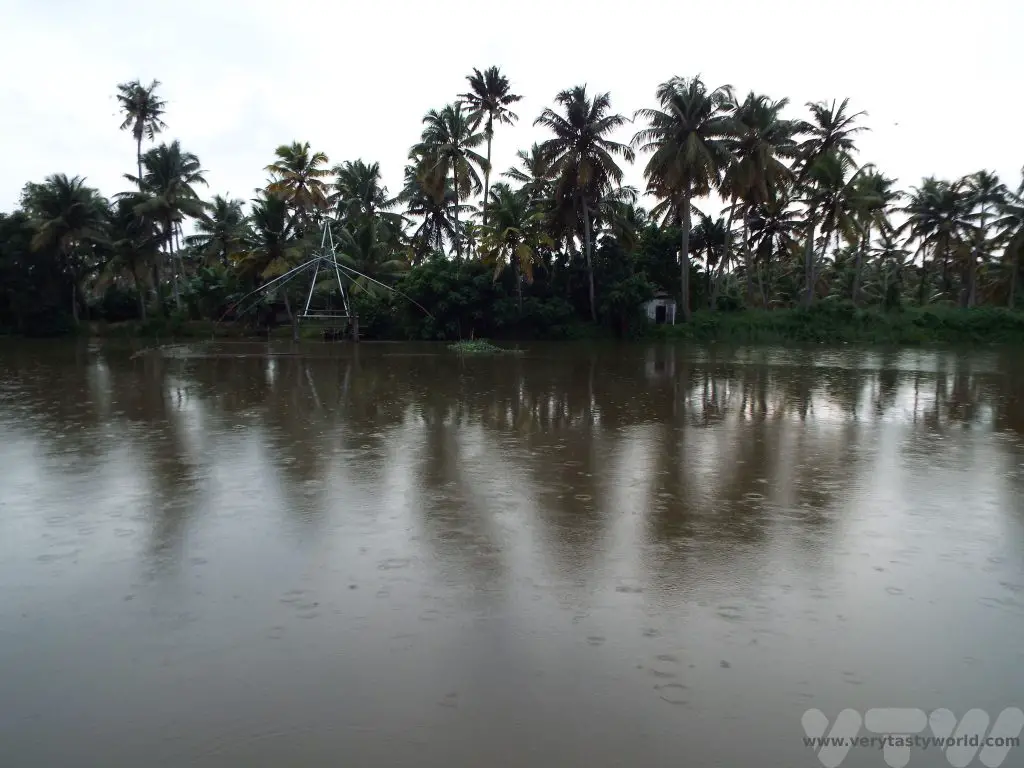
A lazy afternoon cruising the beautiful backwaters on a Kerala houseboat, with the addition of a delicious lunch, was a most refined way of spending an afternoon.
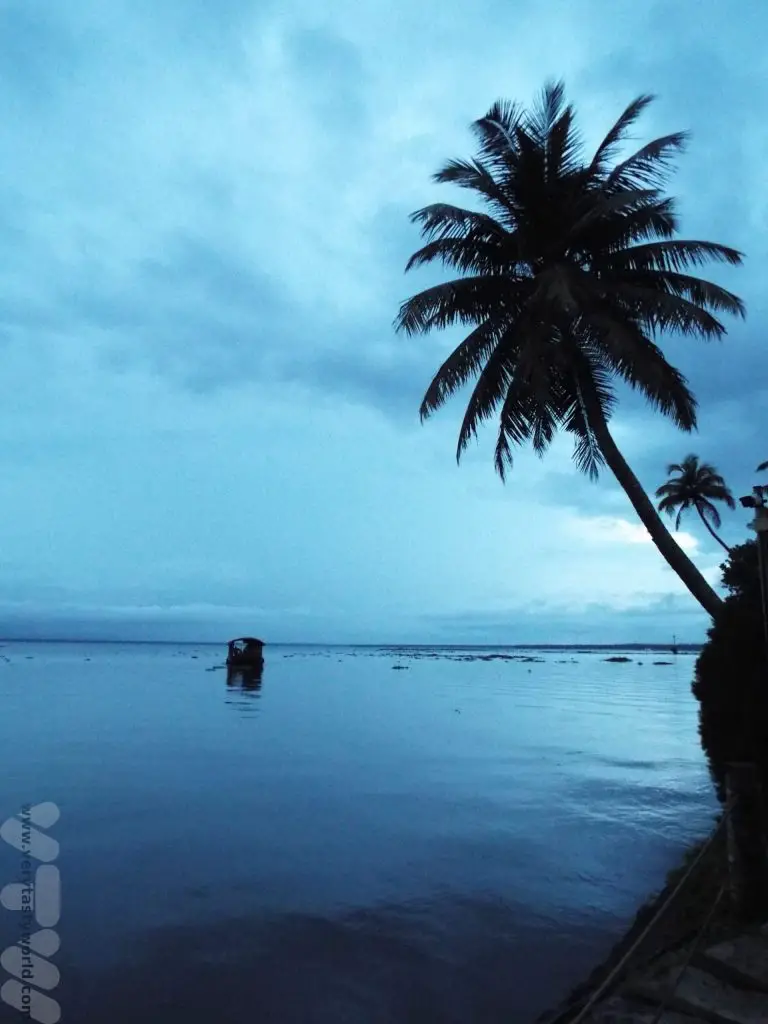
Related Posts You May Enjoy

Luang Prabang Lao PDR (Please Don’t Rush)
There’s a general assumption that the cuisines of many countries in South East Asia – Thailand, Lao, Cambodia and Vietnam – are pretty much the same but that would be doing them a great disservice. While they may share many ingredients and seasonings, each cuisine is different and it is a joy to be able to discover the nuances of the foods from each country. Lao, for example, being landlocked, relies on the river for its piscine bounties rather than the sea. Hence most of the fish served will be river fish. River weed, dried in in the sun and flavoured with seasonings, makes for a tasty snack. Luang Prabang, Lao’s former capital, located in the north of the country, lies on the Mekong river at its confluence with the Nam Khan.
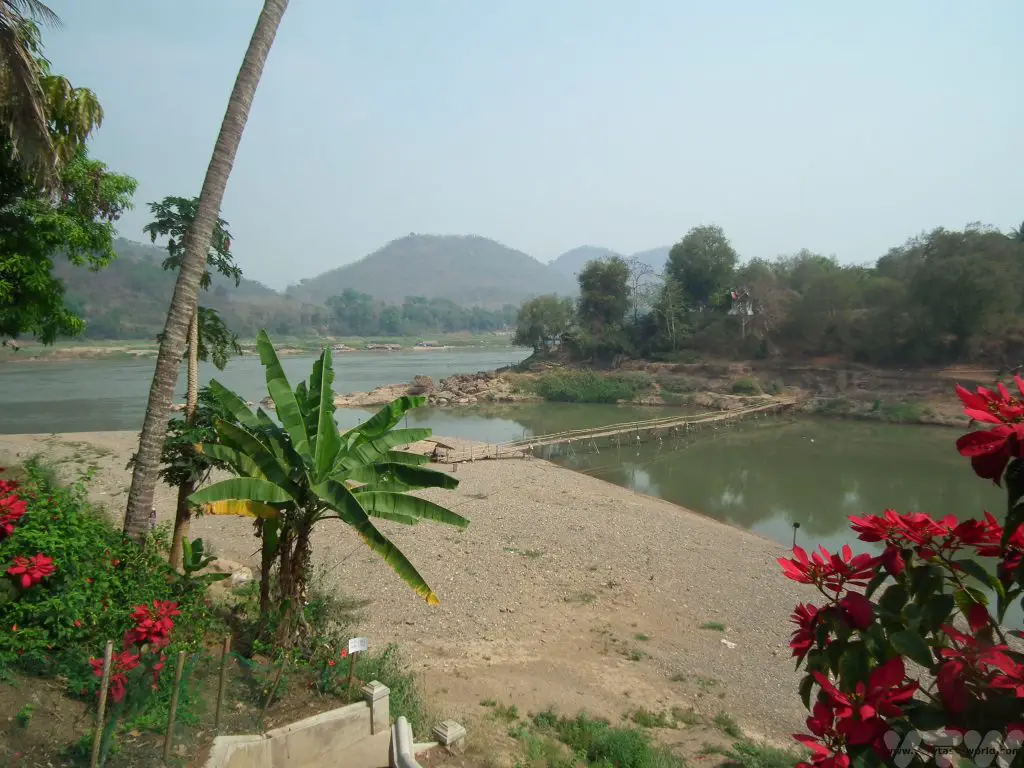
It’s a lovely, laid back town with plenty of temples and palaces to explore, which are largely within easy walking distance.
Wat Xieng Thong is the best known of the temples, located a short walk from the confluence. The main Wat has an intricate design and a beautiful tree of life mural.
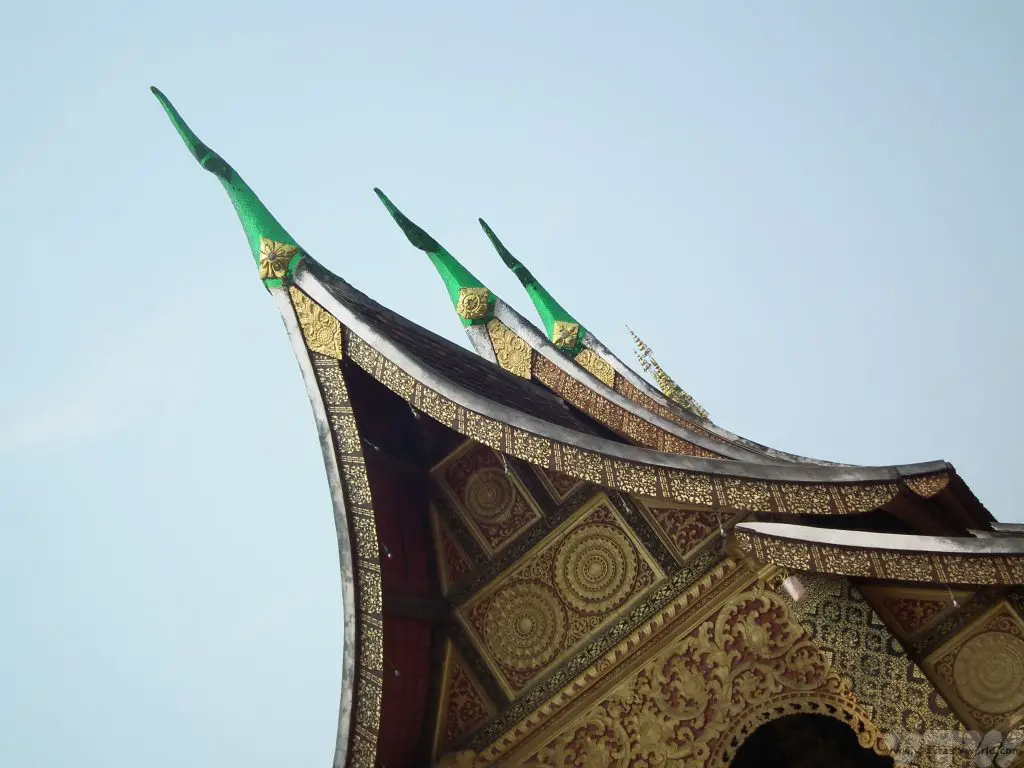
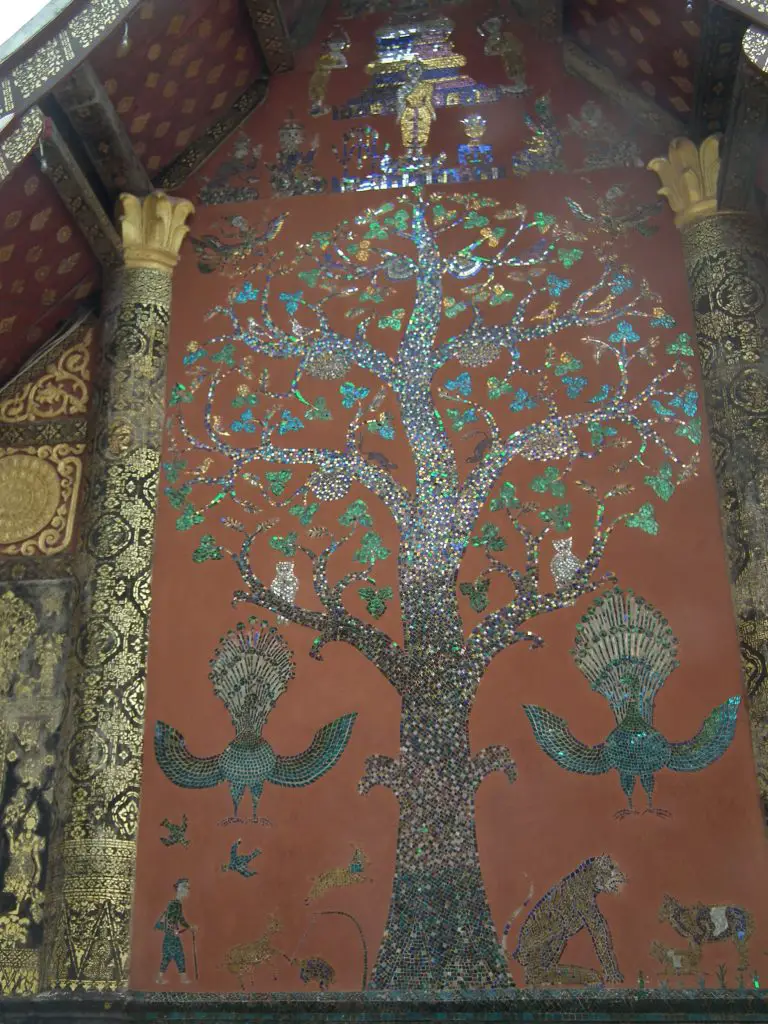
The Royal Palace was built in 1904 when Lao was under French occupation. The monarchy was overthrown by the communists in 1975 and the building converted into a museum.
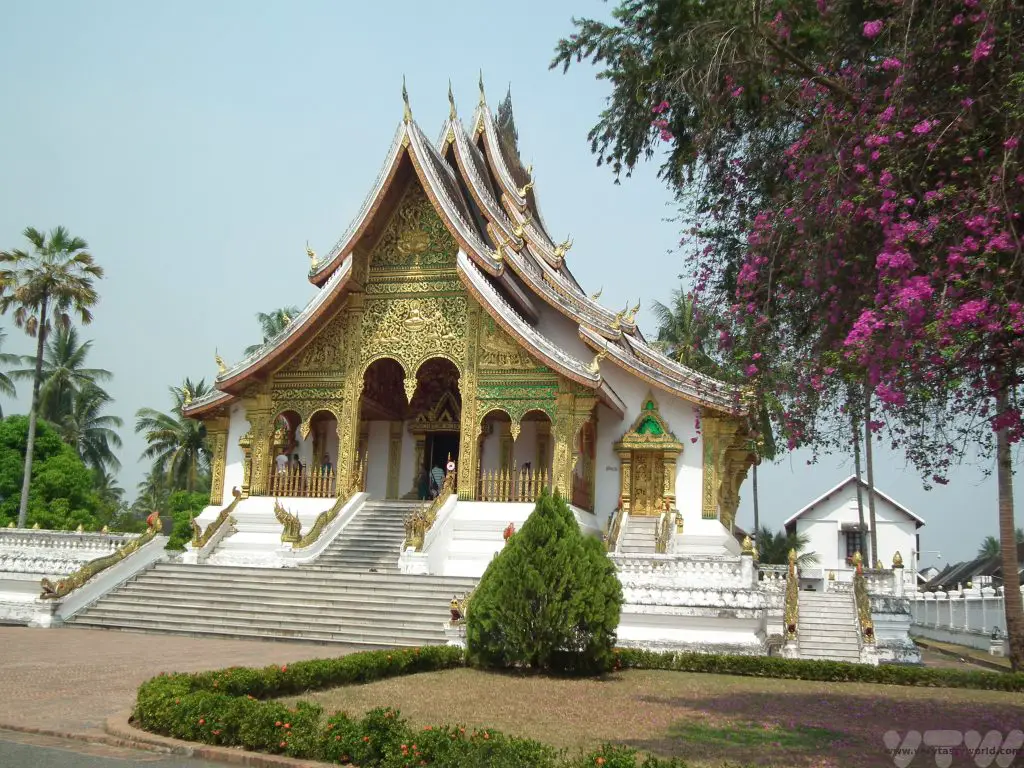
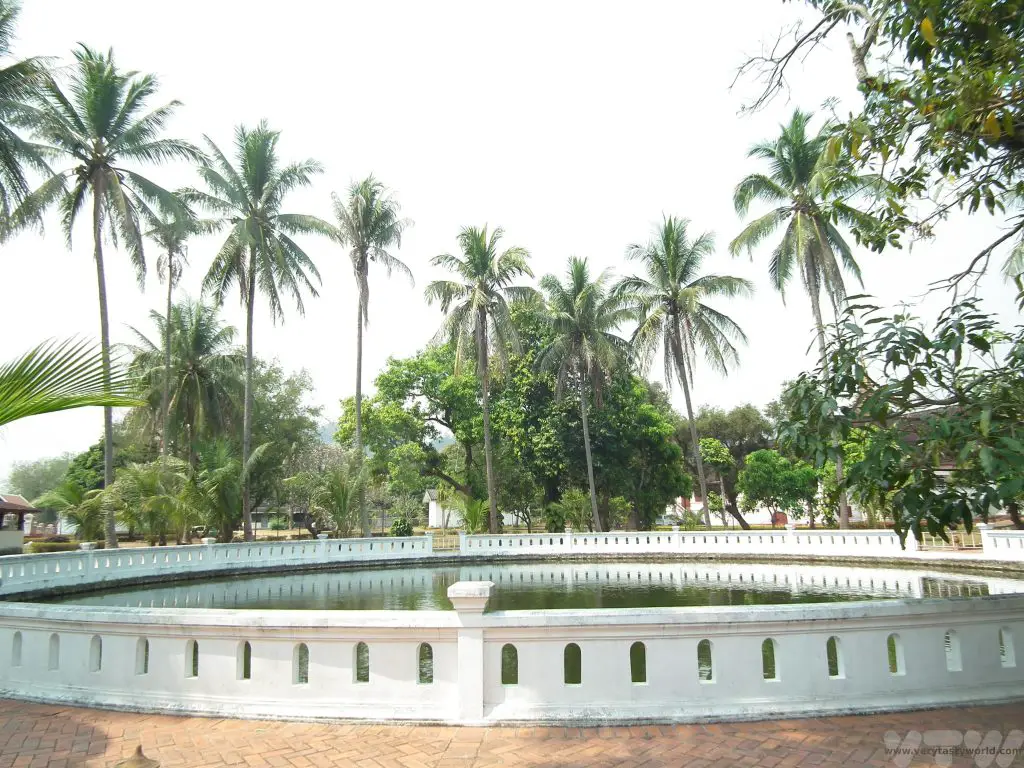
Crossing the Mekong and following a short hike up a hill you can reach the small temple of Wat Chomphet with its old stupa and Wat Long Khone. It’s more peaceful and less touristy on this side of the river.
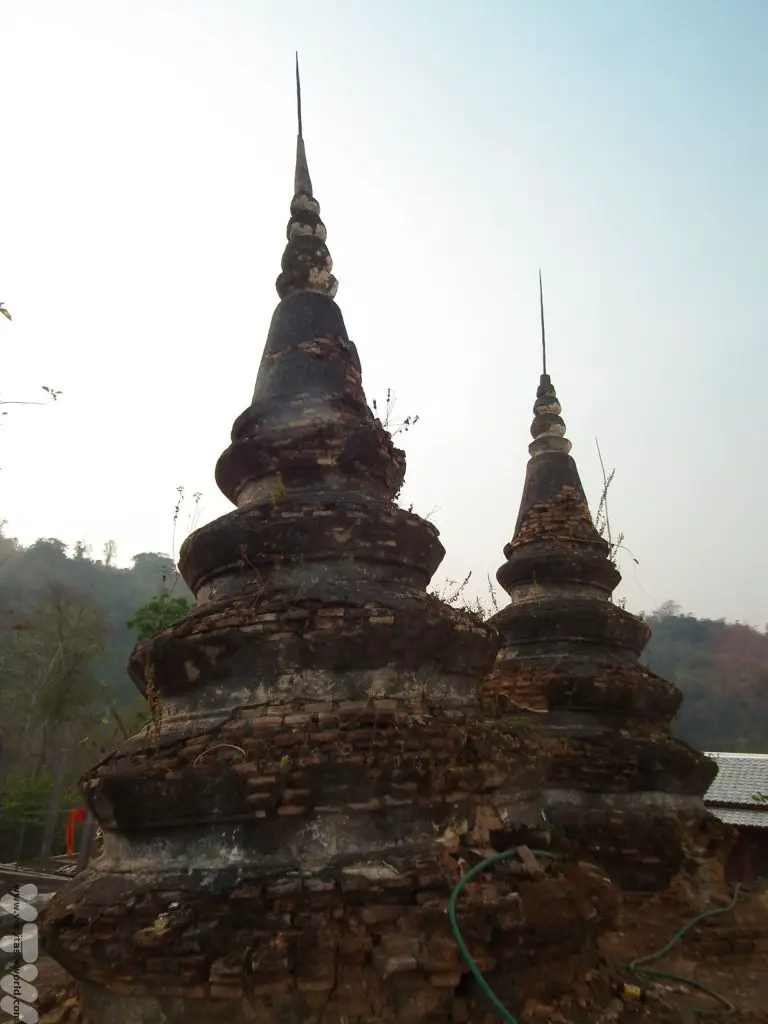

It’s also possible to hire a longboat and drift downriver at sunset, cool glass of beer in hand, enjoying the colours of the evening.
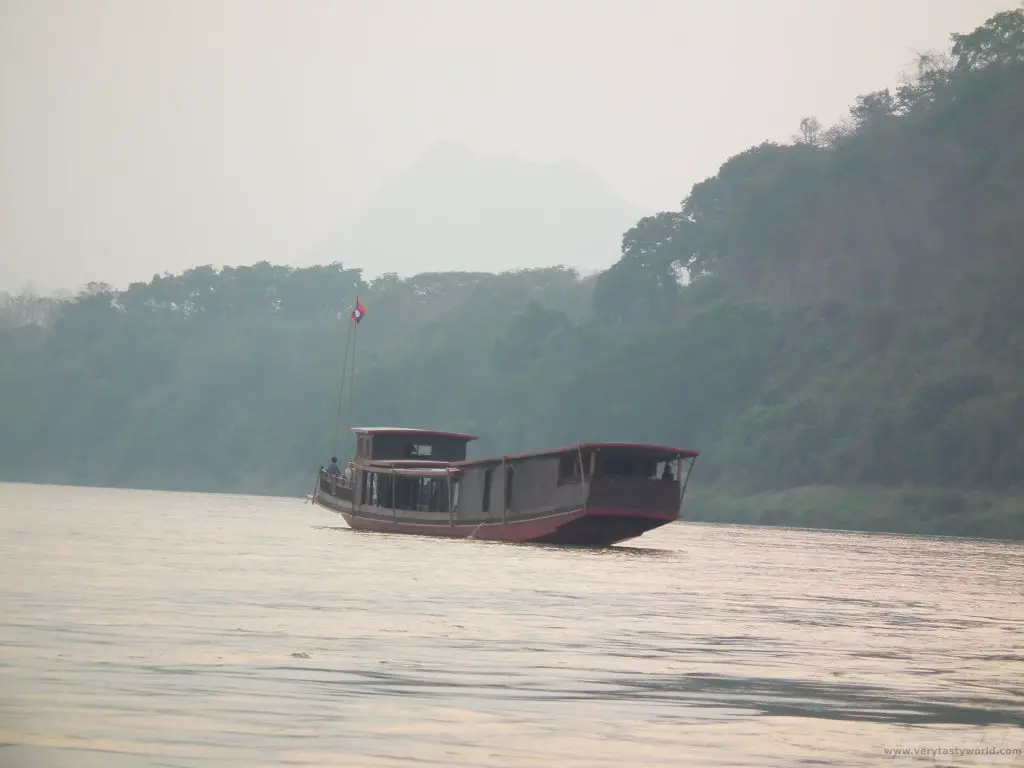
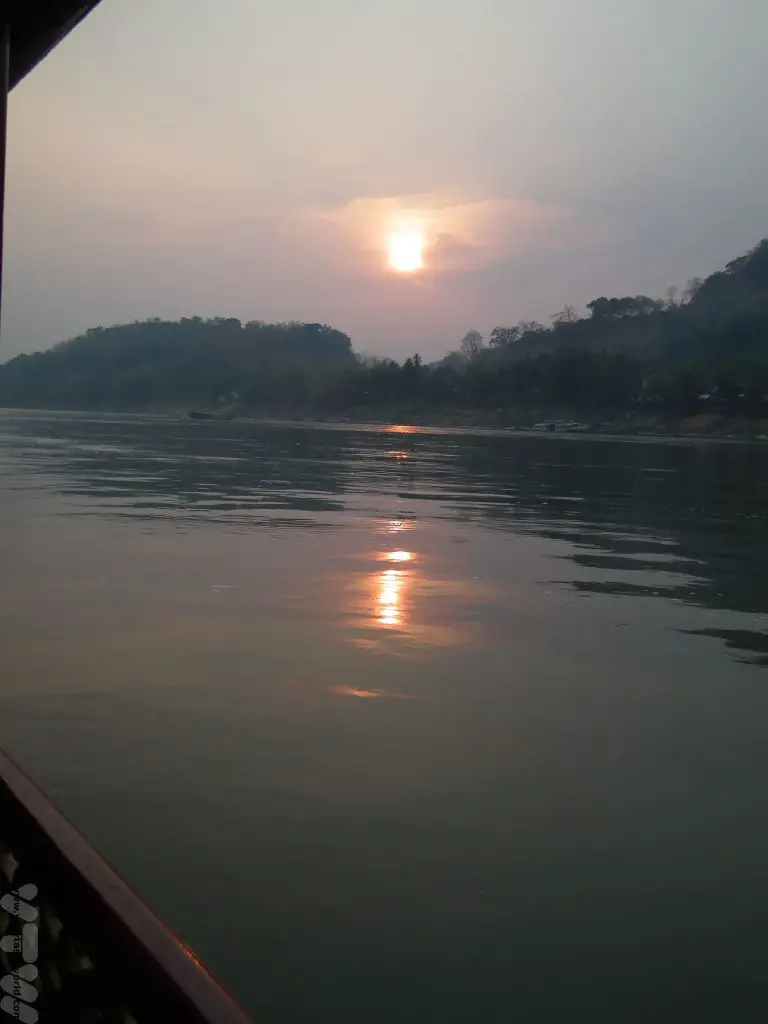
Lao’s formal name is Lao PDR – People’s Democratic Republic. Informally, locals will let you know that PDR stands for Please Don’t Rush – a wise philosophy which also means that you shouldn’t worry if service at restaurants is slow. (Actually, we didn’t notice particularly slow service anywhere we went.) But it’s a good reminder to relax and enjoy your time in this friendly country.
Luang Prabang Lao has a number of bars and restaurants which range from cheap eats to higher end offerings. Utopia is a short walk away from the town, set atop a cliff which overlooks the river. It’s a very laid-back place with a cool vibe and is located in a quirky garden setting.
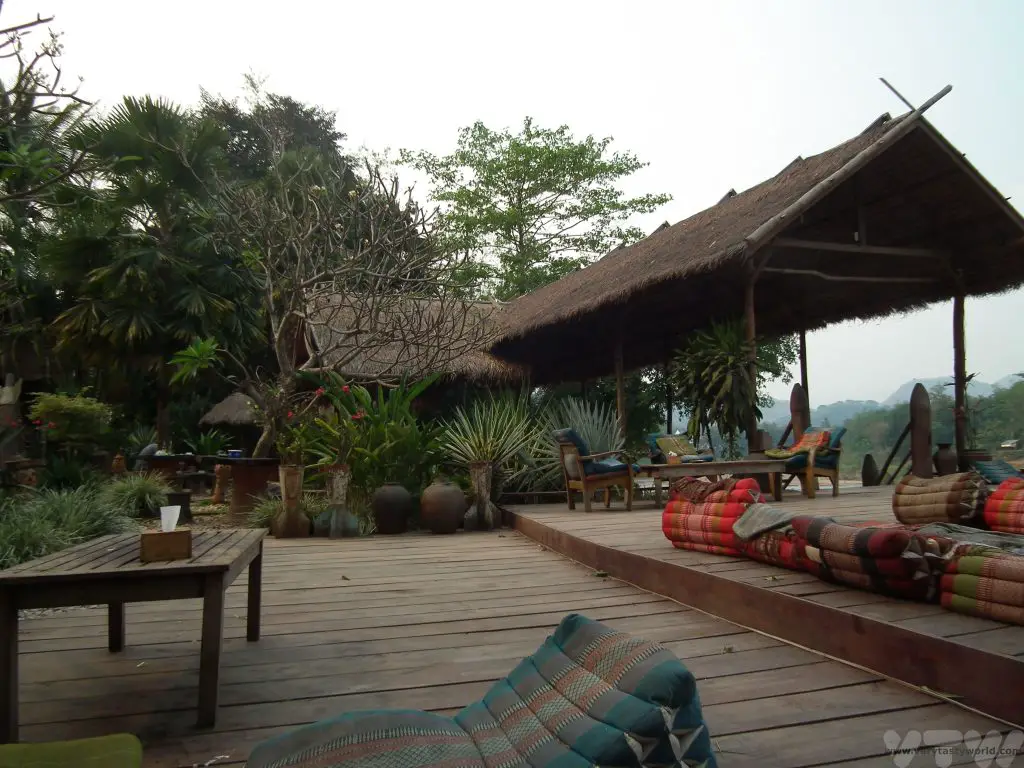
There is a sorrowful side to the garden design though. Many of the flower pots are actually bomb shells from the time of the Vietnam War when, over the course of nine years, the US dropped roughly two million tonnes of bombs on Lao in a secret attempt to support the royal Lao government against the communists led by Pathet Lao, as well as impact the Ho Chi Minh trail. The country remains the most bombed per head of the population in history. Worse still, a significant amount of the ordnance – about a third of the devices dropped – failed to detonate and, more than forty years later, there is still a huge problem with unexploded bombs that remain embedded in the ground, despite some international efforts to clear them.
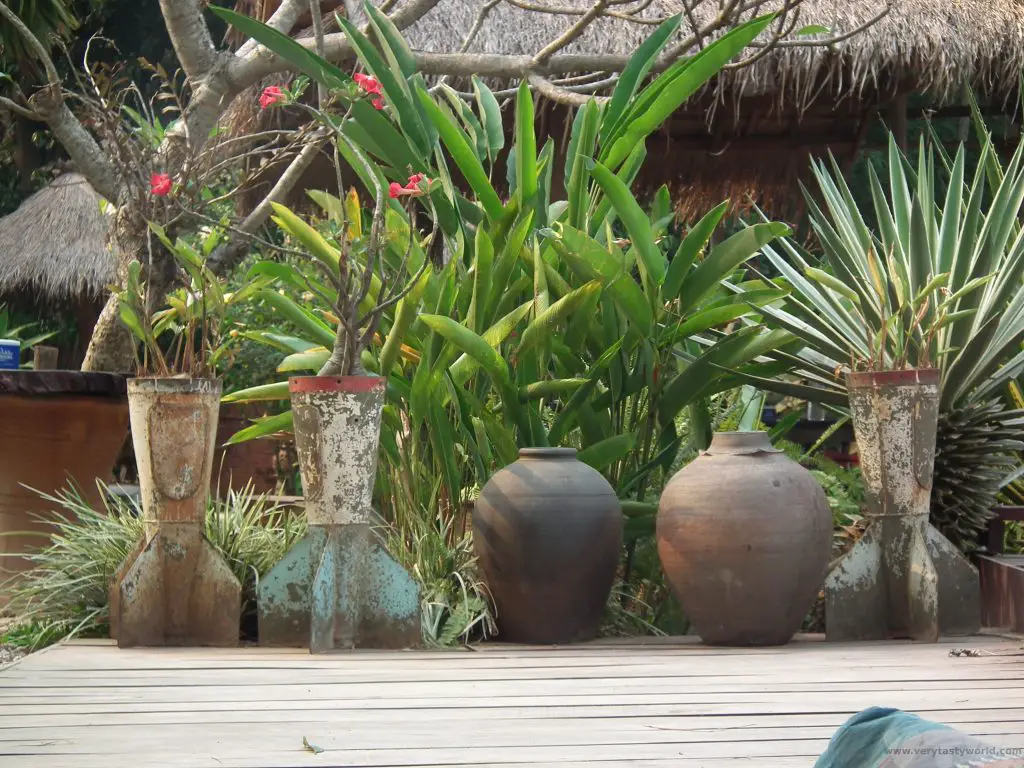
Utopia is popular amongst backpackers for its chilled atmosphere during the day (it has activities such as yoga lessons available) and livens up a lot at night, and it offers local and western food.
One of the best restaurants in Luang Prabang Lao for local food is Tamarind, on the Kingkitsarath Rd, and they specialise in local cuisine. They offer tasting menus which give visitors the chance to try various specialities. It’s a fantastic introduction to local fare. It’s a popular restaurant so it’s worth booking ahead if you can, although we got lucky with a walk-in for lunch.
We started with Lao-Lao shots as an aperitif. Lao-Lao is rice whiskey. Its name isn’t a cute term of endearment – the two words have different tones in pronunciation and hence different meanings. The first Lao means “alcohol” and the second means “from Lao”. The whiskey has a mild flavour but is pretty potent at round 40-45% alcohol.
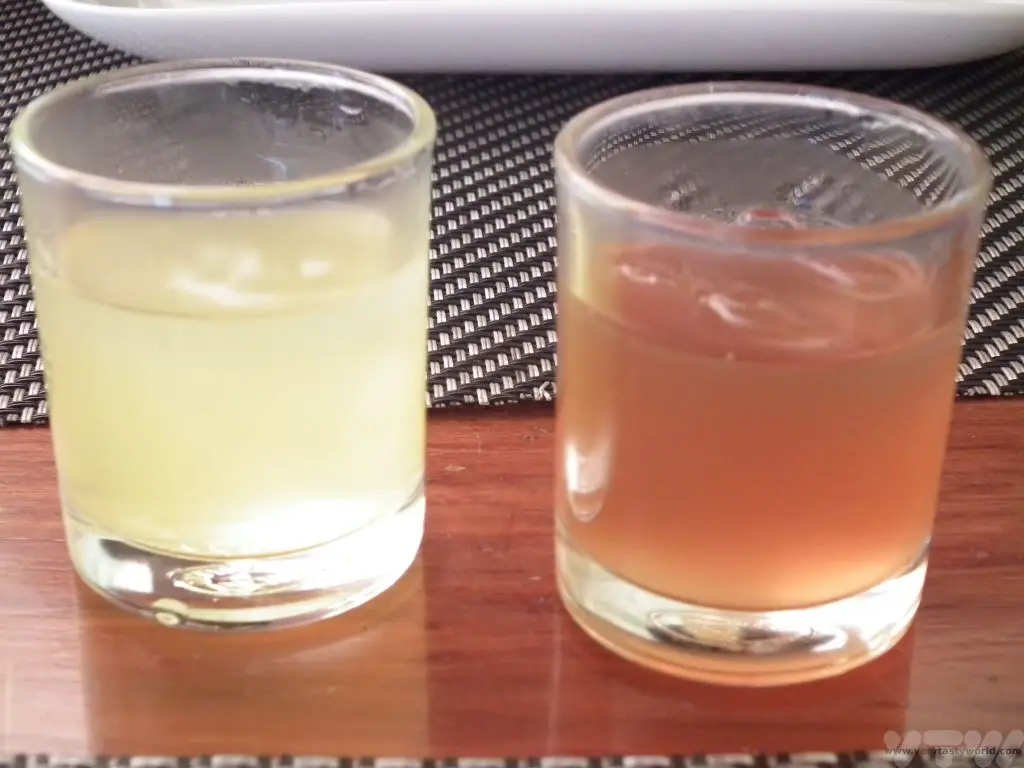
The starter was chunky bamboo and vegetable soup. A lot of Lao food can be searingly hot, with chilli often providing the heat, but this wasn’t; whilst still spicy, it had a piquancy in the seasoning that allowed the flavour of the vegetables and herbs to shine through.
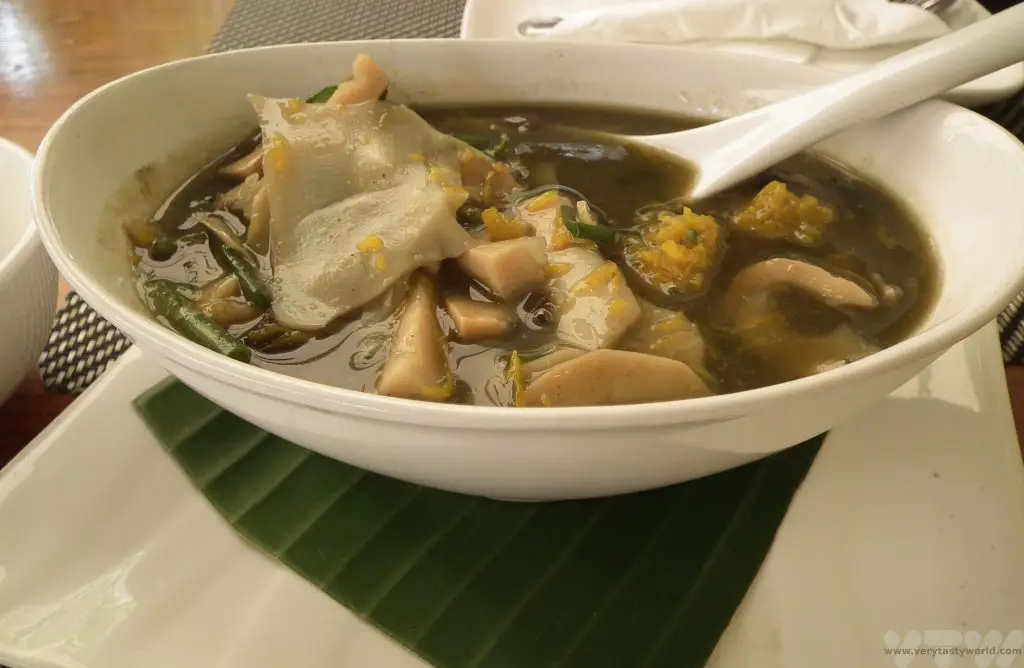
Then came a platter of Lao specialities. These included dinky little sausages with a variety of relishes, which varied in the amount of spice they delivered, as well as kaipen – crispy sun-dried river weed coated with sesame seeds.
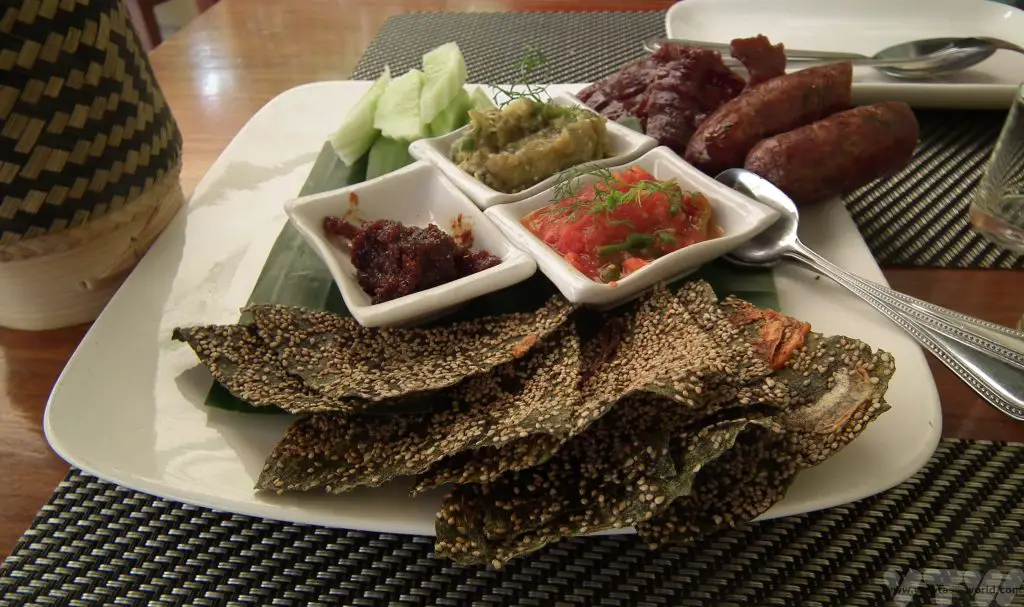
The next dish was fragrant lemongrass stuffed with chicken which felt like a bit of a contradiction. Usually you would expect lemongrass to flavour the meat but this was soft minced chicken, delicately spiced, placed into the bulbous part of the lemongrass stalk, then steamed and fried. The gentle scent of the lemongrass imparted a delicate citrus flavour. It was accompanied by herbed river fish steamed in a banana leaf along with local vegetables.
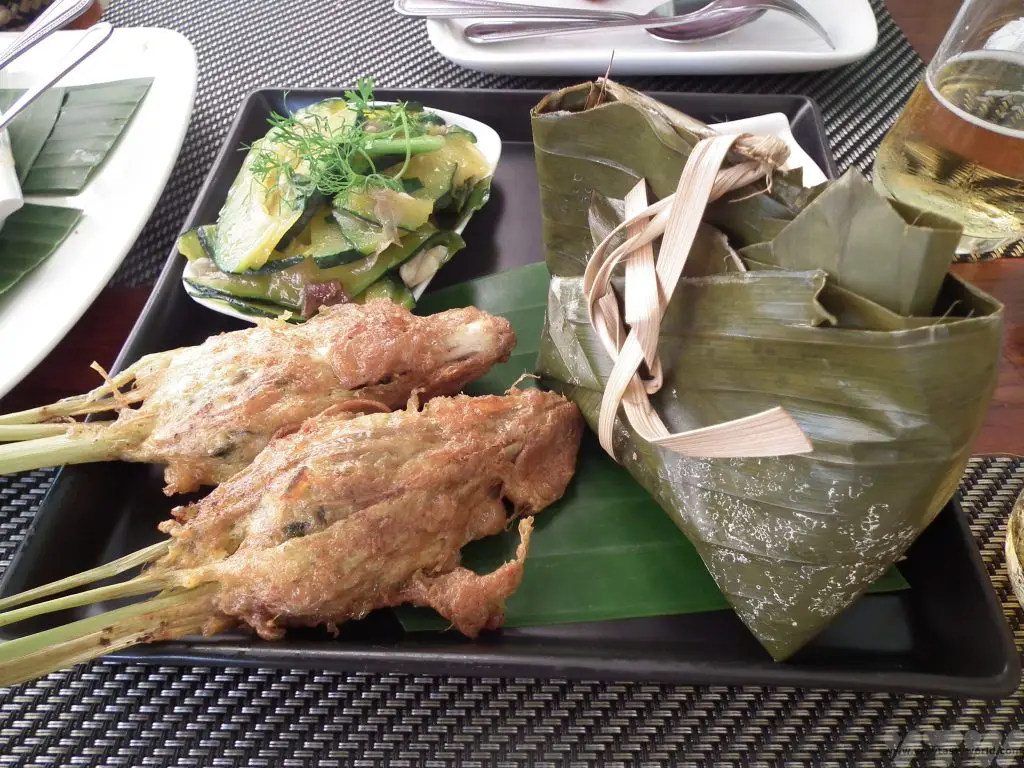
Finally, purple sticky rice cooked in coconut milk with tamarind sauce – which was sweet and slightly sour as well as delightfully sticky – rounded off a splendid meal.
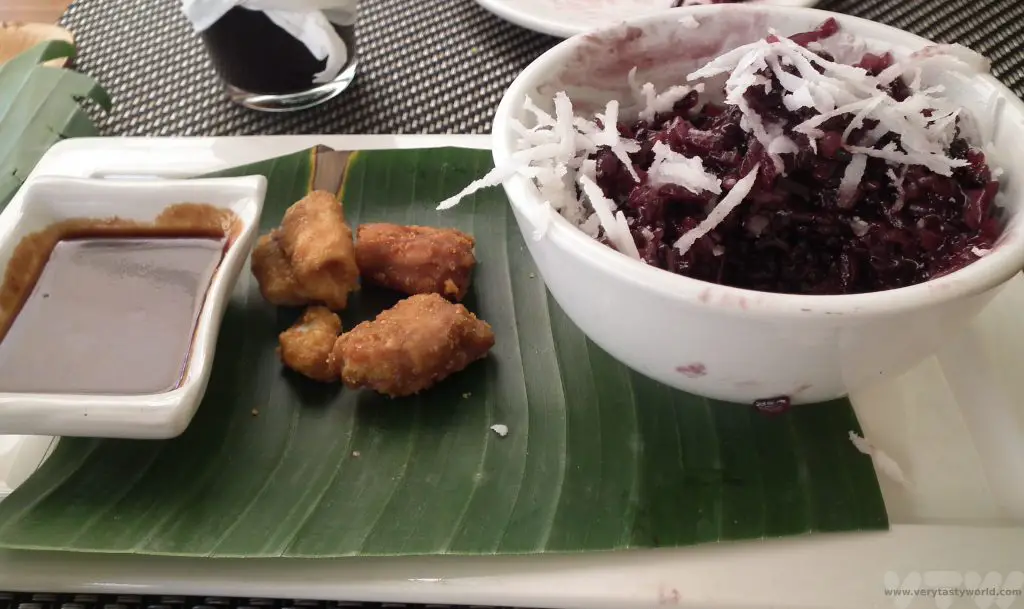

Recipe: Miso Soup
Miso soup is a traditional Japanese broth made with miso (fermented soy bean paste), dashi (a simple but delicious stock) and a variety of other ingredients of your choice. It’s the perfect accompaniment to so many Japanese dishes. Here’s our miso soup recipe.
Ingredients
3 sheets of kelp seaweed (kombu)
1 packet of bonito flakes (40g)
1 litre water
1 tbs miso paste (home made or shop-bought)
Optional:
spring onions
block of silken tofu
wakame seaweed
enoki mushrooms
Method
It should be possible to buy kombu (kelp) and bonito flakes from Asian supermarkets. The dashi really adds to the deliciousness of the soup but if you can’t get hold of the ingredients, you can make a vegetable/fish stock and skip to the step where you add the miso paste.
Make the dashi: Put kombu and bonito flakes into a saucepan of water.
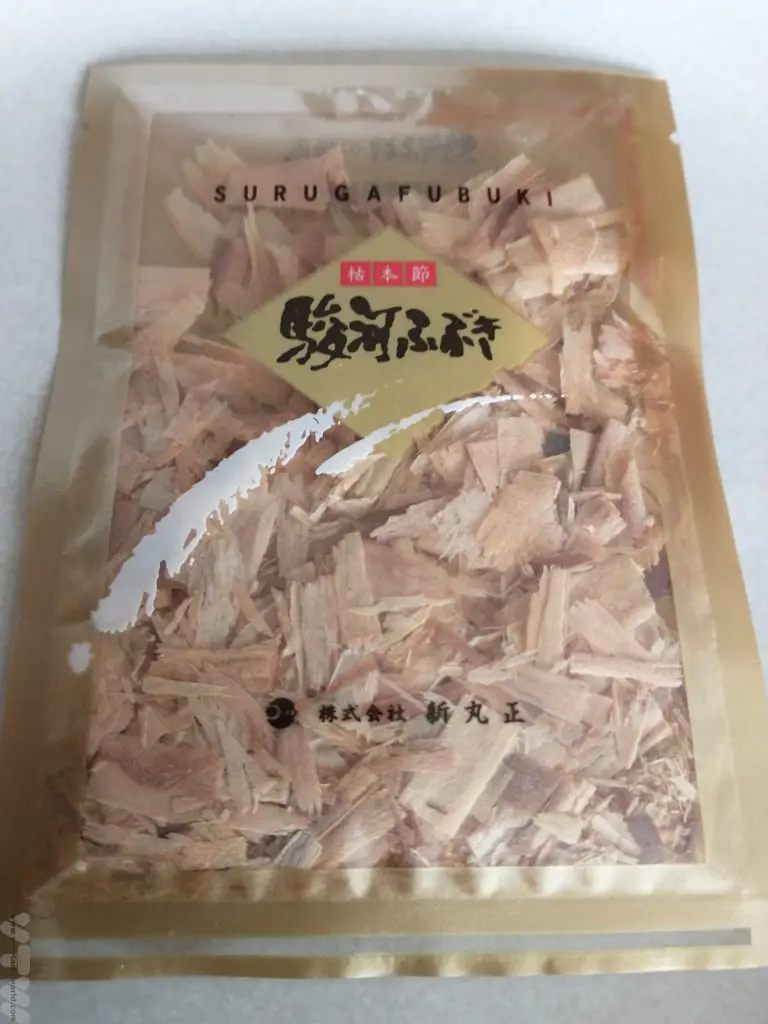
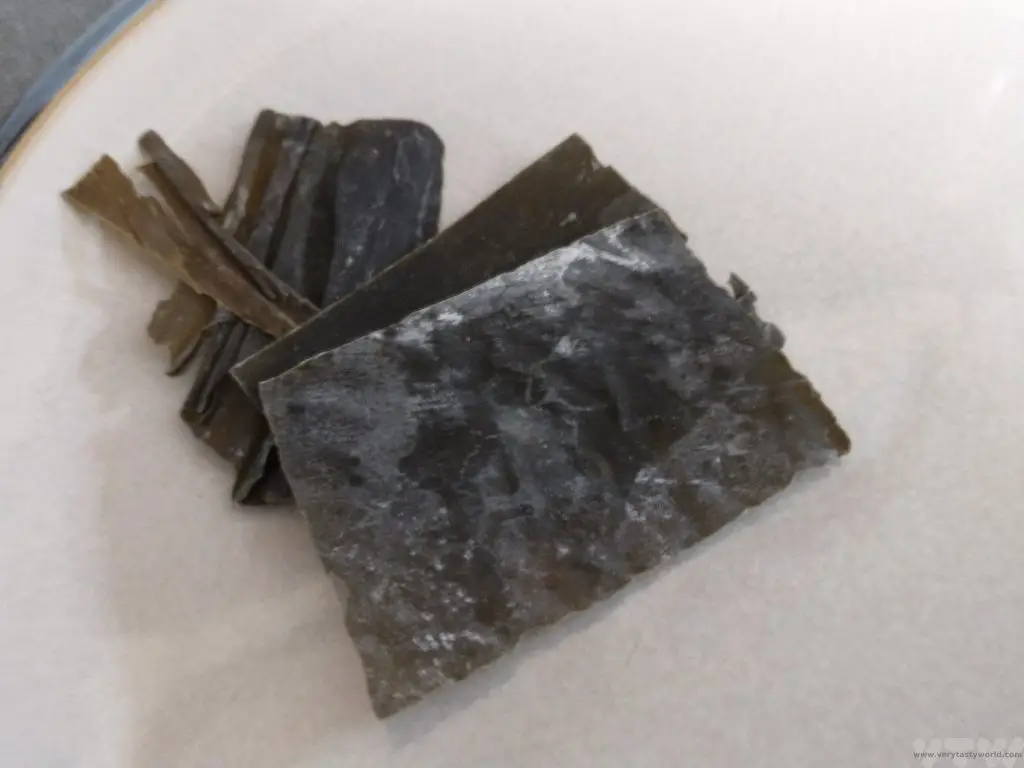
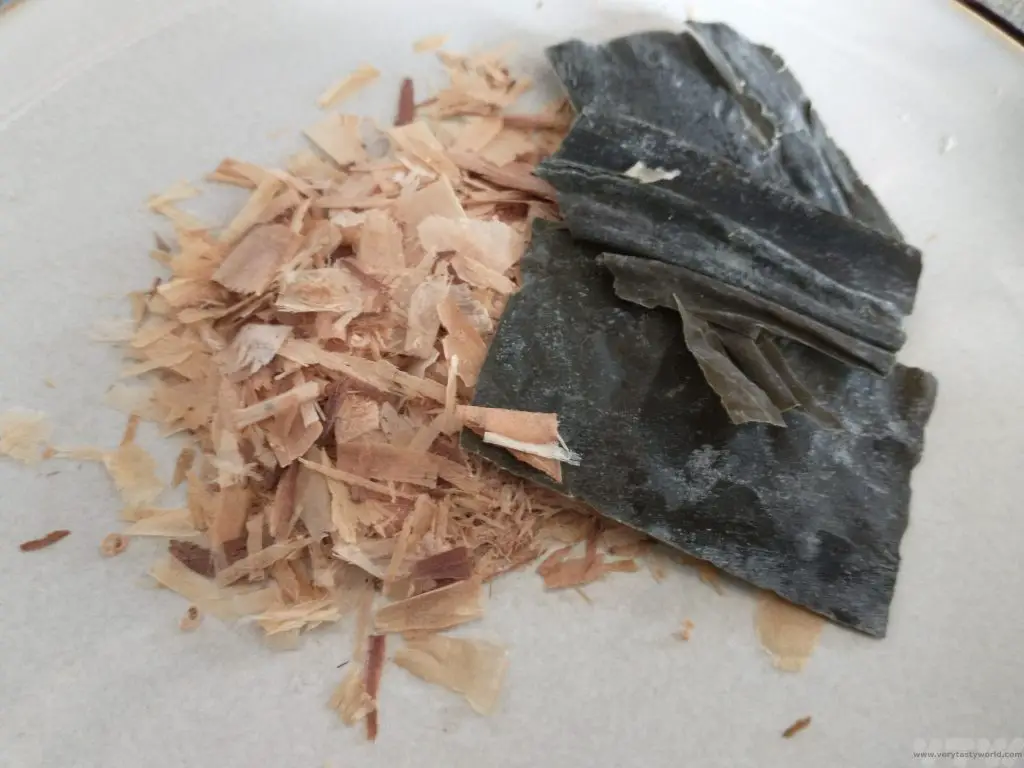
Bring to a simmer. Skim off any froth.
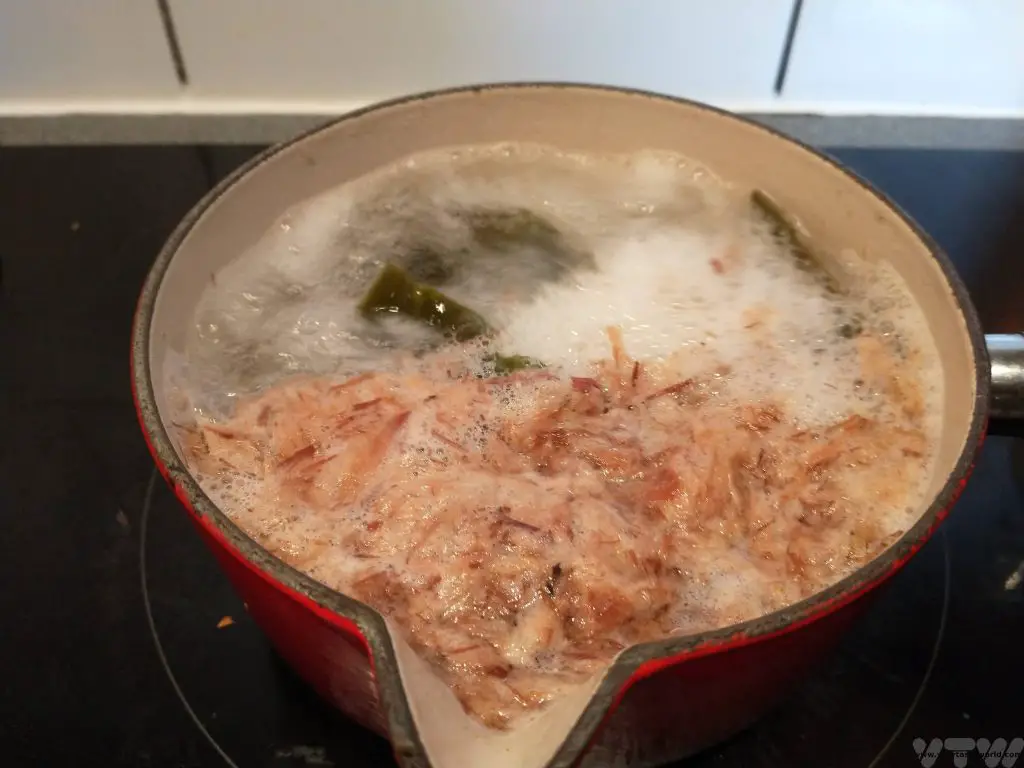
After 20 minutes, you should have a clear broth
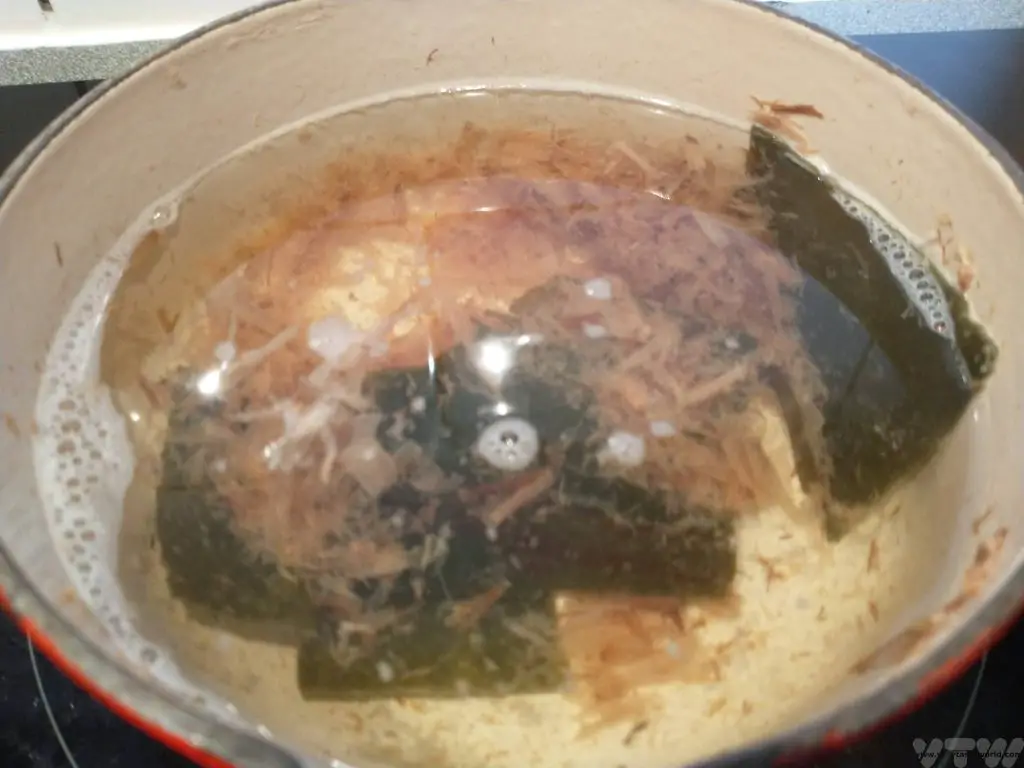
Sieve the solids from the broth. Keep the solid ingredients. You can dry these out and use them again to make a secondary dashi.
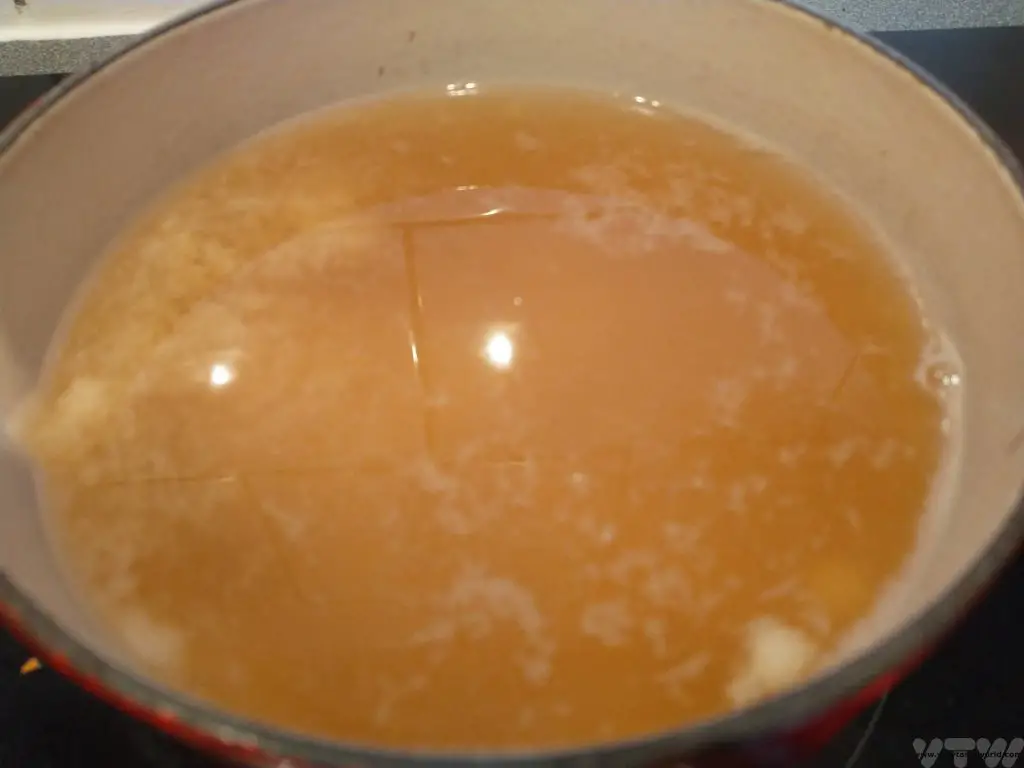
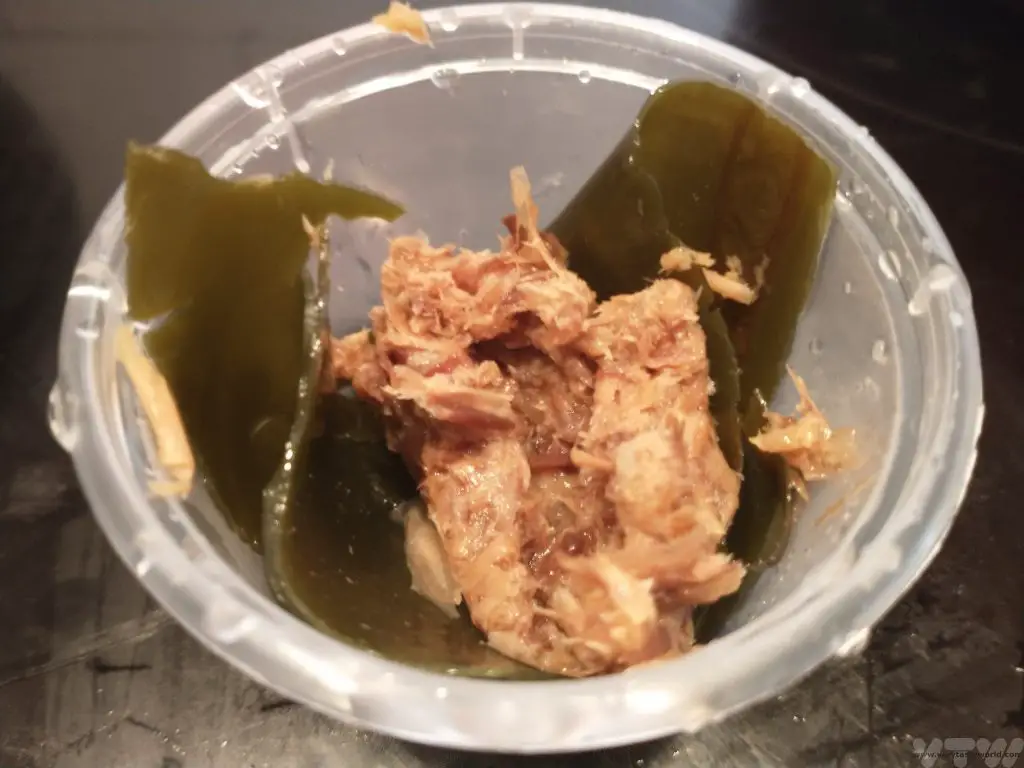
Add the miso paste to the dashi in the saucepan. You can buy miso in most supermarkets but you can also make your own. Warm through gently.
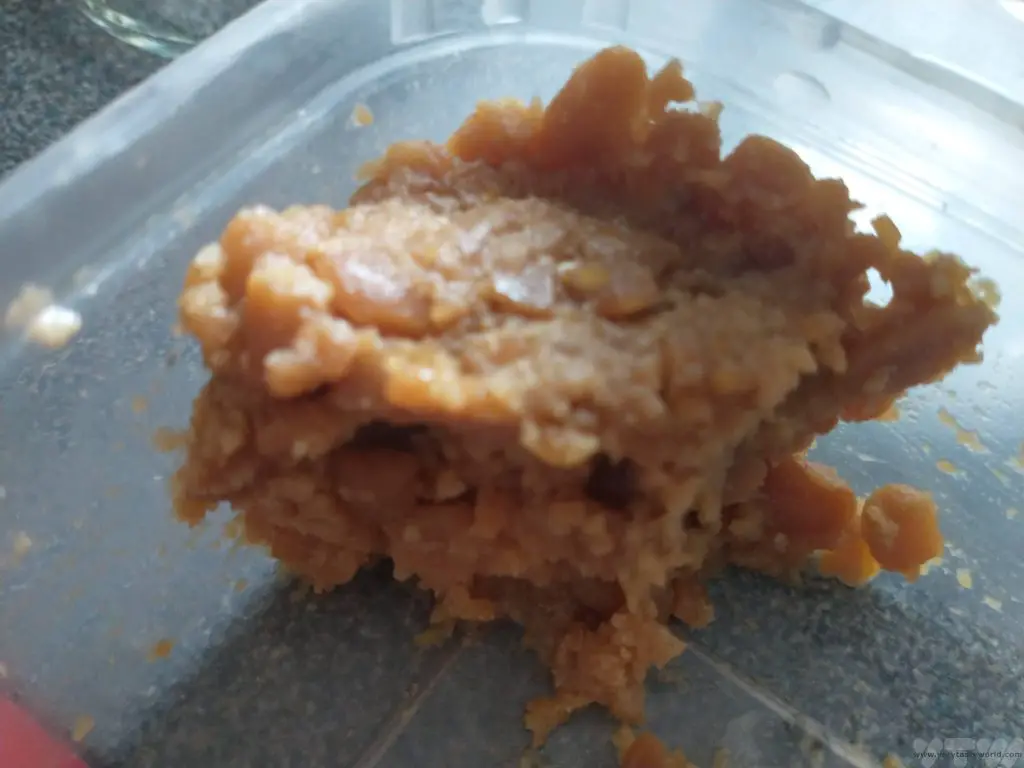
This is the soup base. In this miso soup recipe there are a number of ways to embellish the finished soup. Optional ingredients include such delights as negi (Japanese onions, they are a cross in size between a spring onion and a leek – UK spring onion will be perfect), silken tofu cut into very small cubes, wakame seaweed (a type of kelp that you can buy dehydrated from Asian supermarkets) or small mushrooms (enoki style – the teeny bunches of mushrooms are perfect, but finely chopped ordinary mushrooms will work well).
In this instance we had some spring onions to hand. So they were finely sliced and placed in a serving bowl.
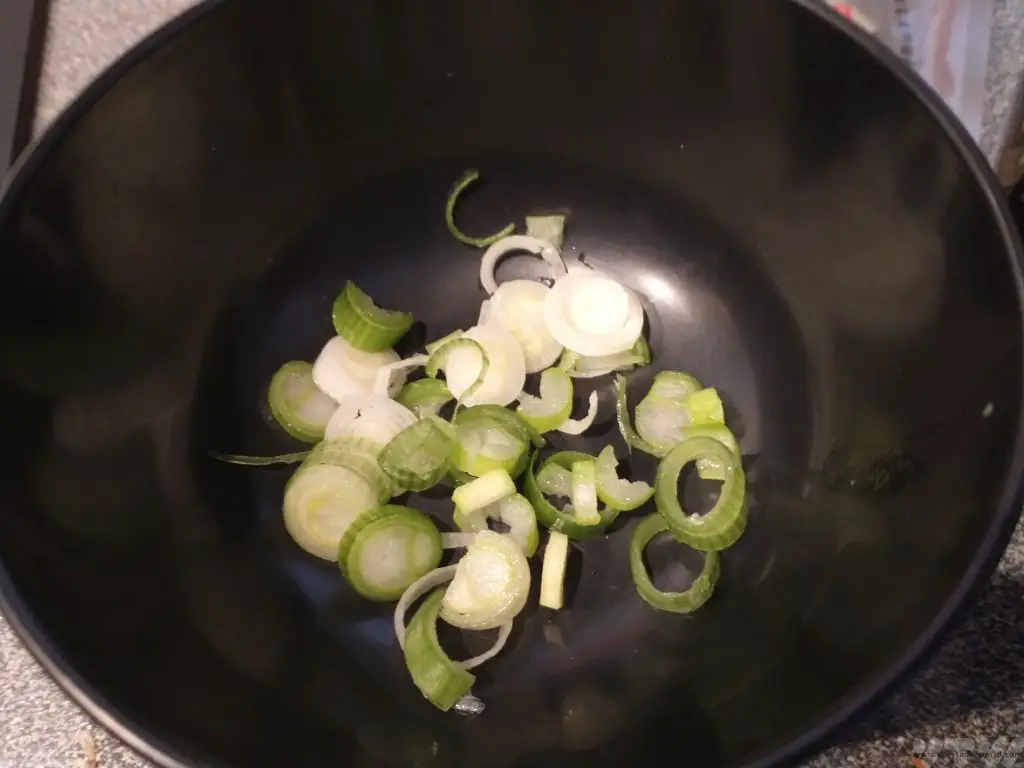
Pour the miso broth on top. Enjoy while hot.
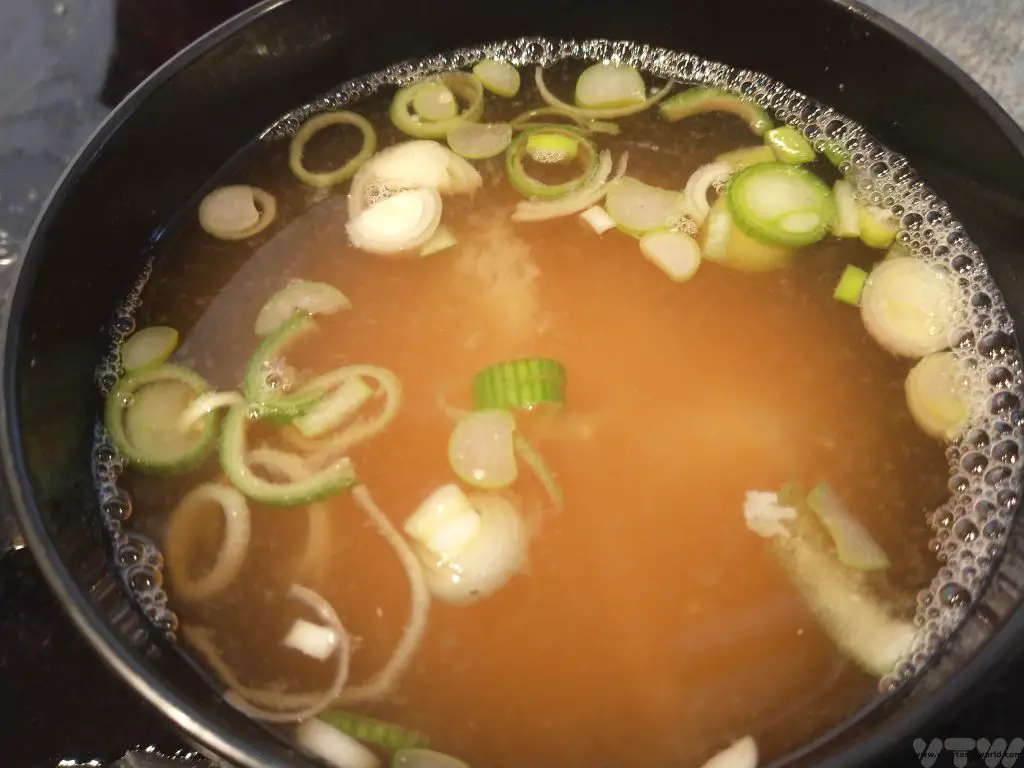
It is absolutely fine to drink the miso soup using a spoon or to drink directly from the bowl. In Japan, it’s also okay to slurp – this helps cool the hot liquid as you drink it. Make sure you stir it (you can use chopsticks to do this) before consuming so that the ingredients that settle at the bottom are agitated – the miso never dissolves completely into the broth – and produce an even flavour throughout the drinking.
Related Posts You May Enjoy

- RECIPE Oyakodon Donburi
- Zero Waste Recipes Before Your Holiday
- RECIPE: Vegetable Biryani Tamil Nadu Style
- RECIPE: Vegan Wild Garlic Pesto
- Recipe: Venetian Pasta Sauce
- RECIPE: Biryani Raita Recipe
- RECIPE: How to Make Costa Rica’s Gallo Pinto
- Recipe: Japanese Simmered Pork Belly – Buta no Kakuni
- RECIPE: How to Make Umeboshi
How To Make Coconut Milk From Coconut
Rabbits in Thailand
Coconut is one of the fundamental ingredients in Thai cookery. Coconut milk adds a luscious silkiness to curries and can also be used as a base ingredient in desserts; the flesh can be used in sweets and salads and the juice from a green coconut can be drunk straight from the pod for a really refreshing thirst-quencher. There is a difference between coconut cream and coconut milk.
At the Bai Pai Cookery School in Bangkok we learned how to extract coconut cream and coconut milk from an mature coconut, you know, the sort you get at coconut shies. This isn’t the same as the water you get from a green coconut (which is utterly delicious and wonderful to drink on a hot, humid day) but the liquid is extracted from the freshly grated flesh of an ordinary coconut.
After splitting the coconut in half (with a machete or something equally sharp and brutal) you need to use what’s known as a ‘rabbit’ to obtain the white flesh. The rabbit is a serrated grater often located on the end of a wooden bench (sometimes it’s even a cute rabbit shape!) which is used to shave the inside of the coconut to produce wisps of flesh.
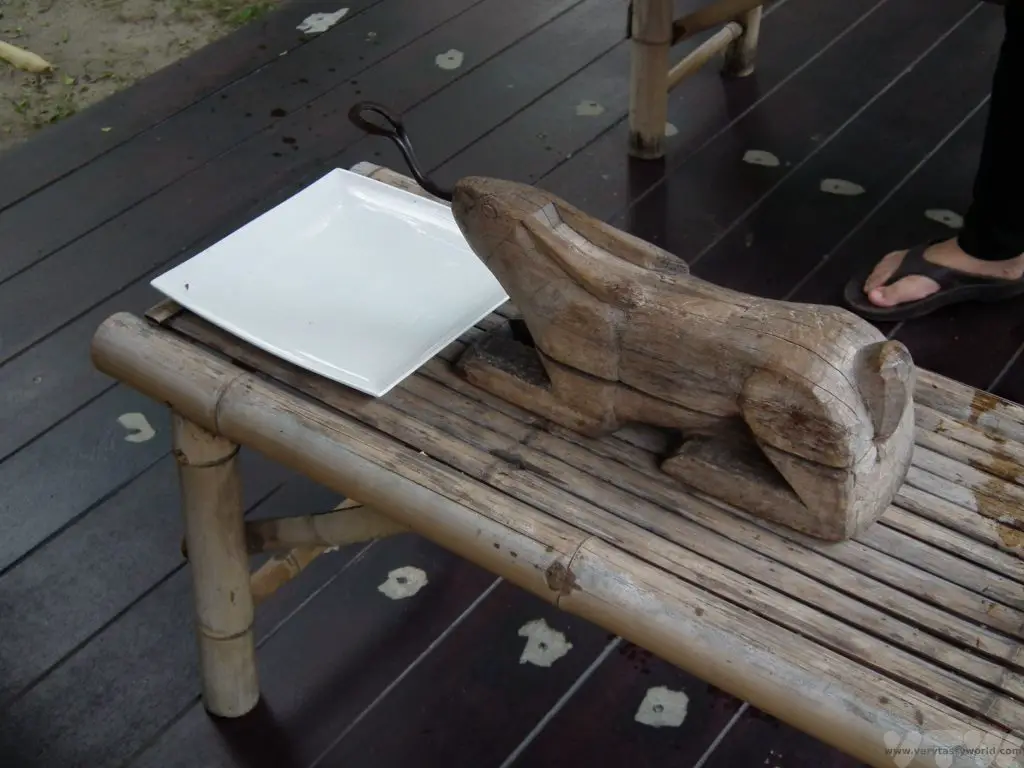
There’s definitely a technique to using the rabbit. You sit on the bench and use a reciprocal back and forward motion to shave away the coconut flesh. You need to make sure that the brown, hard shell of the coconut protects your hands as you really don’t want your fingers to come into contact with the sharp grater. Also, blood does have a tendency to turn the pure white coconut cream a startling shade of pink and you really don’t want that.
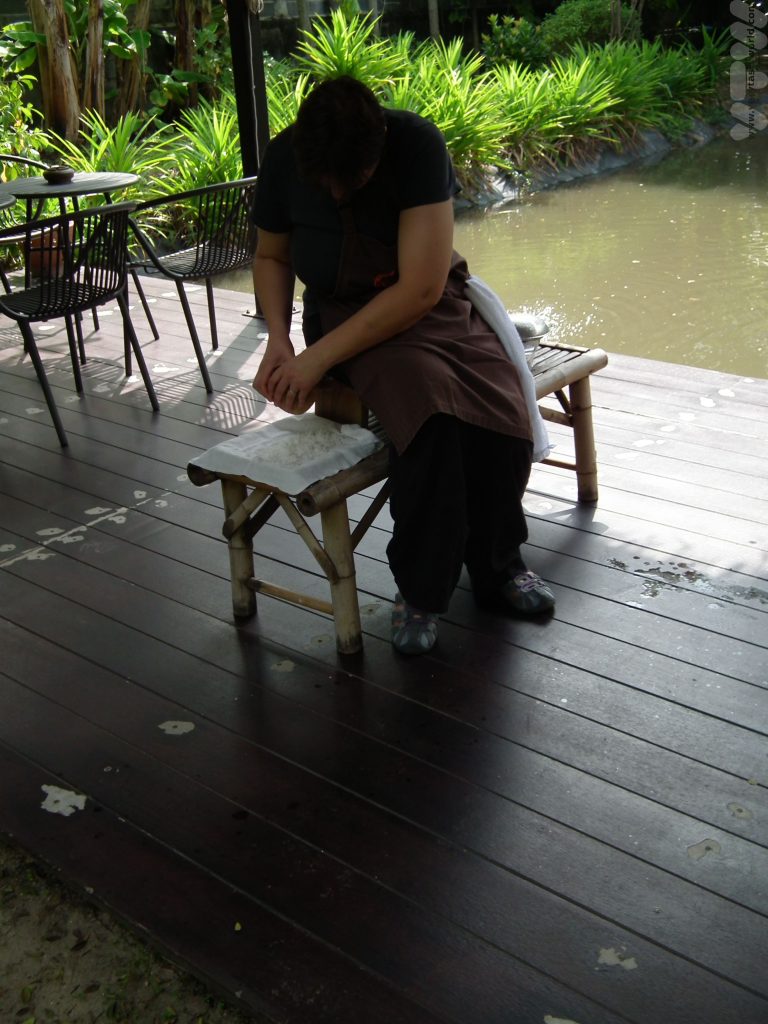
How To Make Coconut Milk and Coconut Cream
Once you have a lovely pile of freshly grated coconut it gets put in a bowl and water is added. The shavings are mixed with the water, rubbing them together. Then they are sieved through muslin. A squeeze will release the coconut cream – this is the first press and it is rich, silky and smooth.
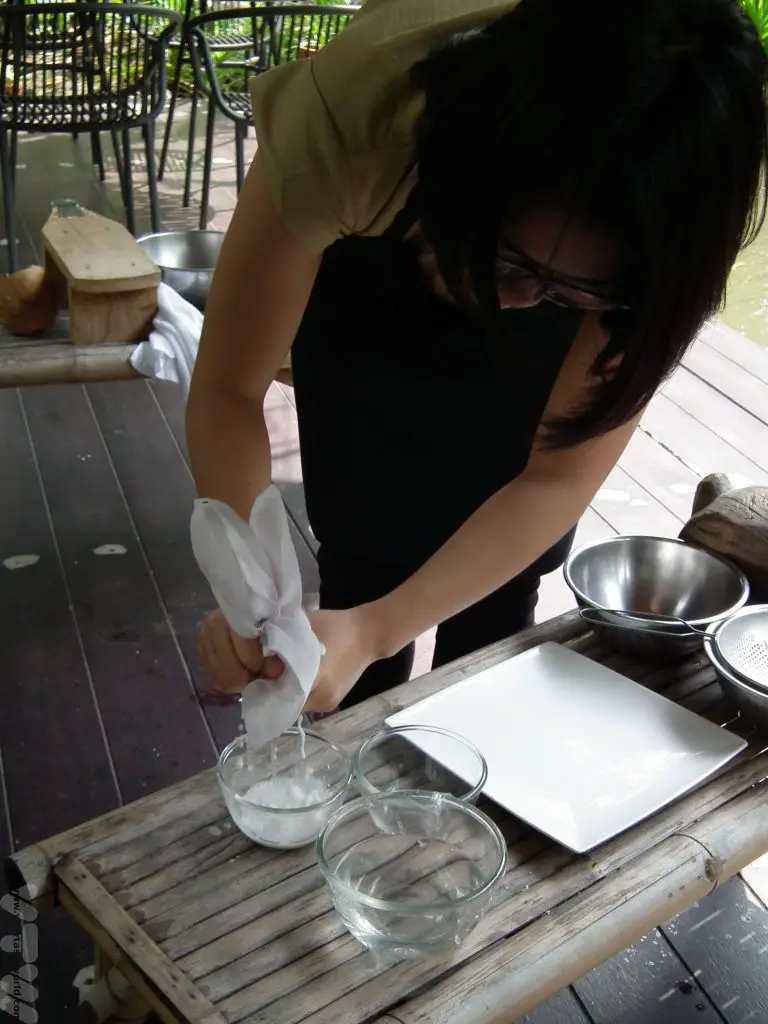
Adding a further amount of water with another mix and squeeze releases a more dilute liquid – this is the second press which produces the coconut milk.
Coconuts are quite easy to find in the UK, rabbits less so. Knives are not recommended for grating coconut, you really need an implement that will extract – and shred – the flesh safely from the inside of a hemisphere without shredding your hands. It’s probably safer to buy coconut milk in tins. If you want milk, shake the tin. If you want cream you may well find that – on opening – it has solidified and a rich, luscious blob will simply plop out of the tin.
Coconut milk is a fundamental ingredient in Thailand’s famous curries. Kaeng khiao wan is a sweet green curry (you can find our recipe here), kaeng phet is a hot red curry. Both are easy to make (recipes another time). Another, less well known, dish that uses both coconut milk and coconut cream is tom kah gai – chicken and galangal in a coconut milk soup. Galangal is similar to ginger in that it is a rhizome – but they are quite different, notably in the textures and flavours. Ginger is lively, sweet and warming. Galangal is sharper with citrusy overtones. Whereas you can easily grate ginger and incorporate it into dishes, galangal is more woody. As a result it’s difficult to substitute one for the other. Where we live, ginger is easy to buy, but we have to search for galangal.
Tom kah gai is a subtle dish. Chicken pieces are cooked in a coconut milk soup that is infused with galangal, lemongrass and kafir lime leaves. Then coconut cream is added to provide a richness to the soup. Finally, as with many Thai dishes, sweet, sour, salt and heat flavourings in the form of sugar, lime juice, fish sauce and chilli are added – at the last moment,just before serving. This ensures that the flavourings are at their freshest; lime, particularly, can taste bitter if cooked for too long. The result is a wonderful, warming, creamy soup which has a touch of spice and zing.
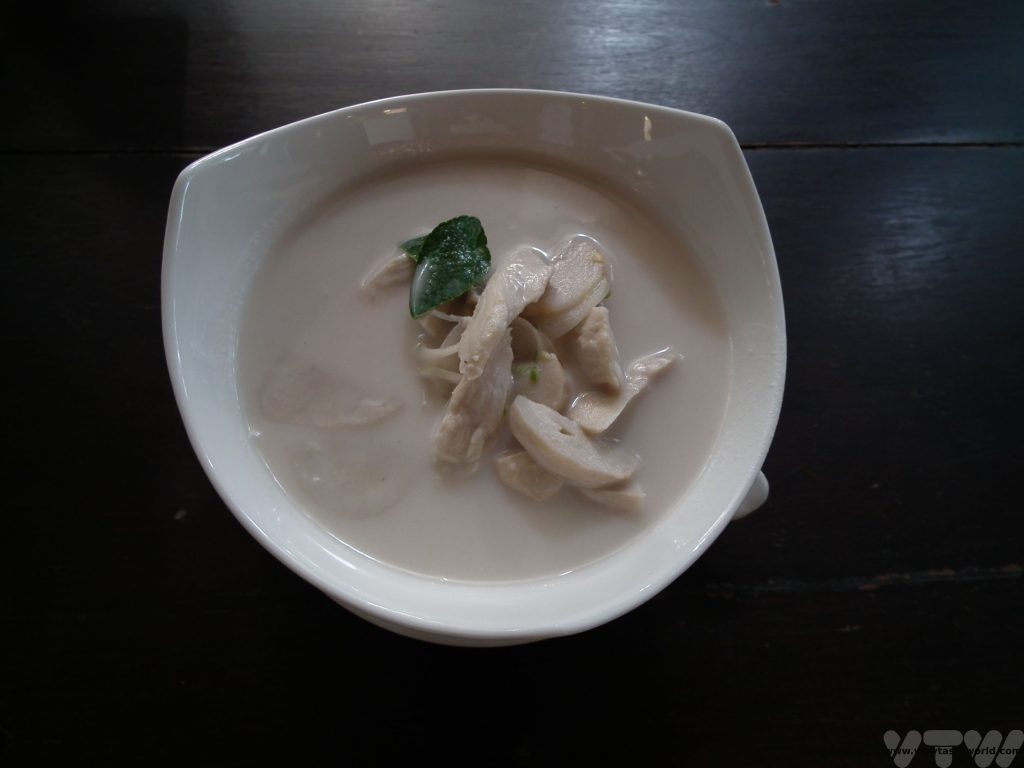
Related Posts You May Enjoy

Argentina Asado – High Steaks
Central Argentina may not be at the very top on an itinerary when visiting the country, but it does offer some interesting places to visit. The cities are easy to fly to direct from Buenos Aires and, for lower budget travellers, the bus network is very good. Overnight buses, in particular, have a variety of services available, including a double decker first class option that offers a reclining bed, TV and food. It’s about a 5 hour journey from BA to Córdoba which is often used as a transit city when travelling from the coast to the mountains.
We were based in Córdoba, the second largest city in Argentina by population. It’s a pleasant city and it’s possible to undertake a number of day trips to interesting places from there – all an easy bus journey within an hour or two of the centre.
Alta Gracia is a small and pretty town in the Sierras Chicas. A former Jesuit residence has now been converted to the Museo Nacional Estancia Jesuitica Alta Gracia museum which has an interesting history of Jesuits in the area.
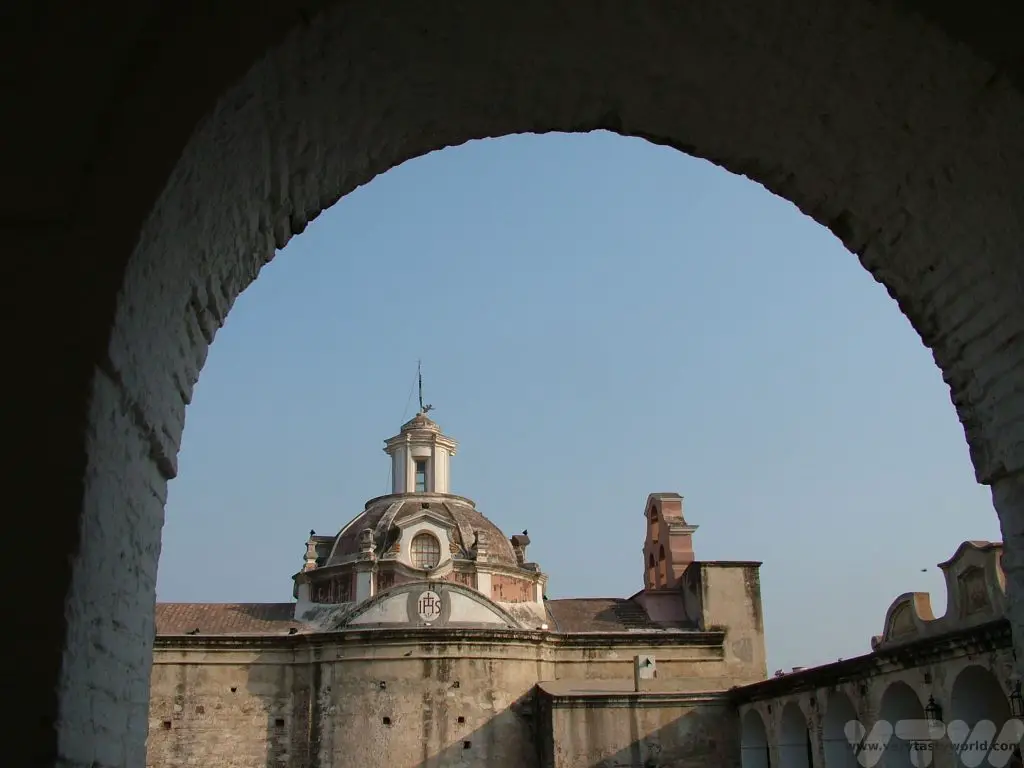
The Jesuits built El Tajamar, a lake which forms a focal point for the town. It’s worth hanging out by the clocktower at one end of the lake; it not only offers tourist information but is also a focal point for entertainment in the area – music and dance shows are regular events.
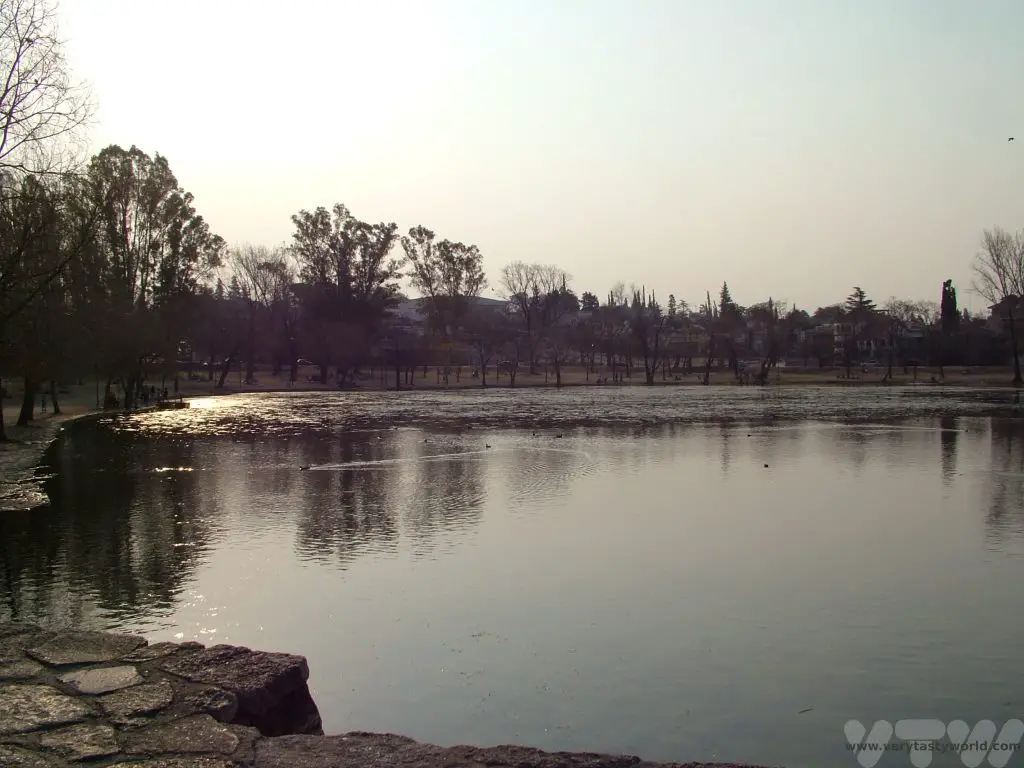

Che Guevara spent twelve years of his childhood in Alta Gracia until he moved to Buenos Aires in 1944 to study medicine and thereafter become one of the world’s most famous revolutionaries. His story is told in the fabulous film, The Motorcycle Diaries based on his book of the same name. The house he lived in has been converted into an interesting museum.
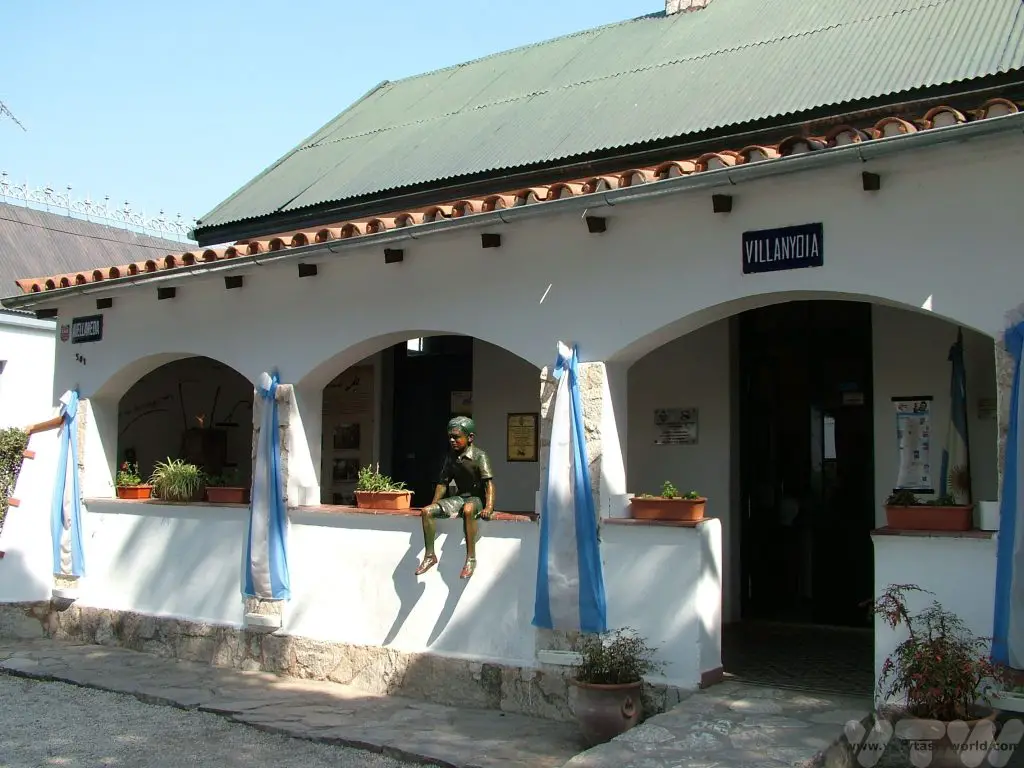
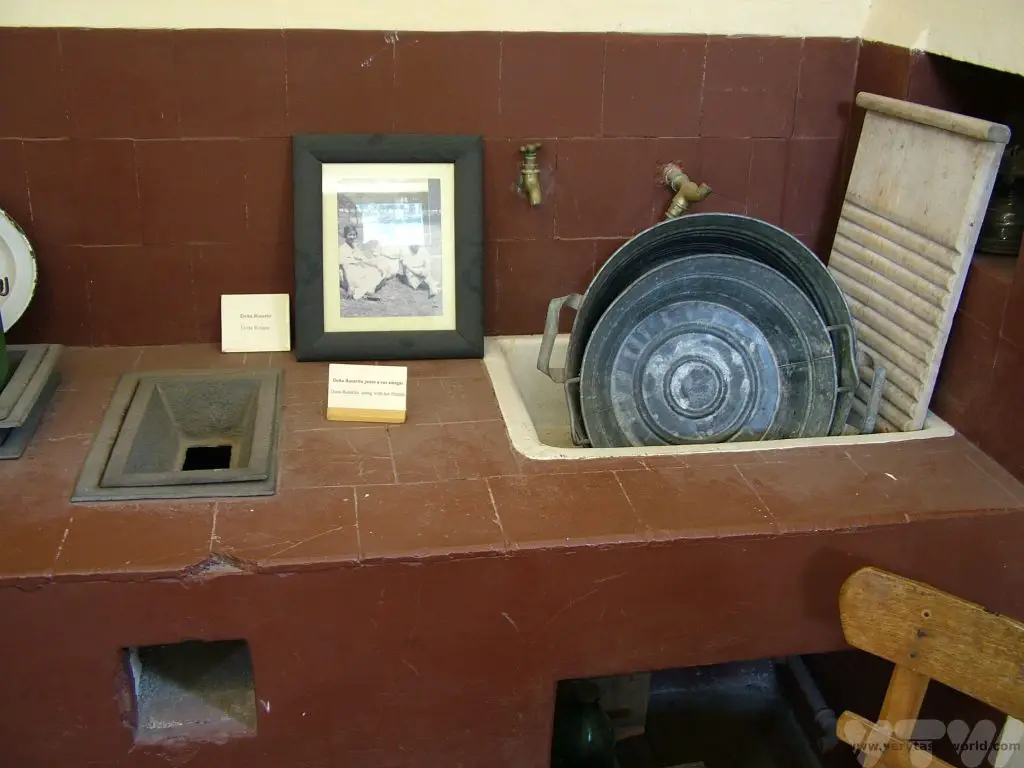
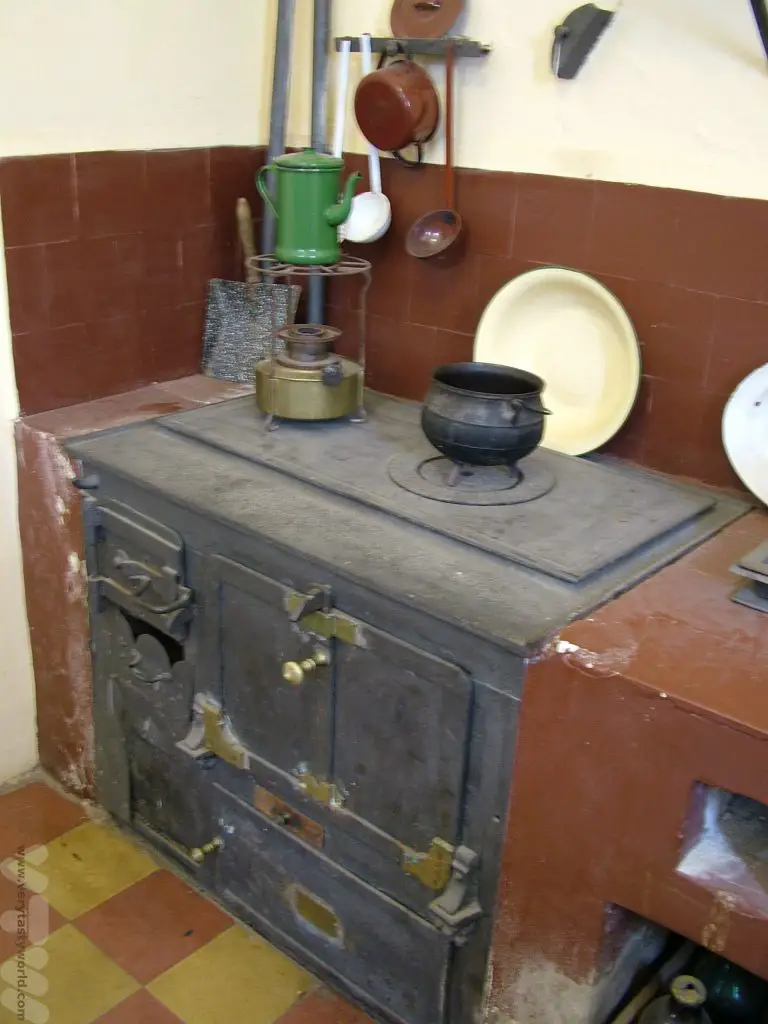
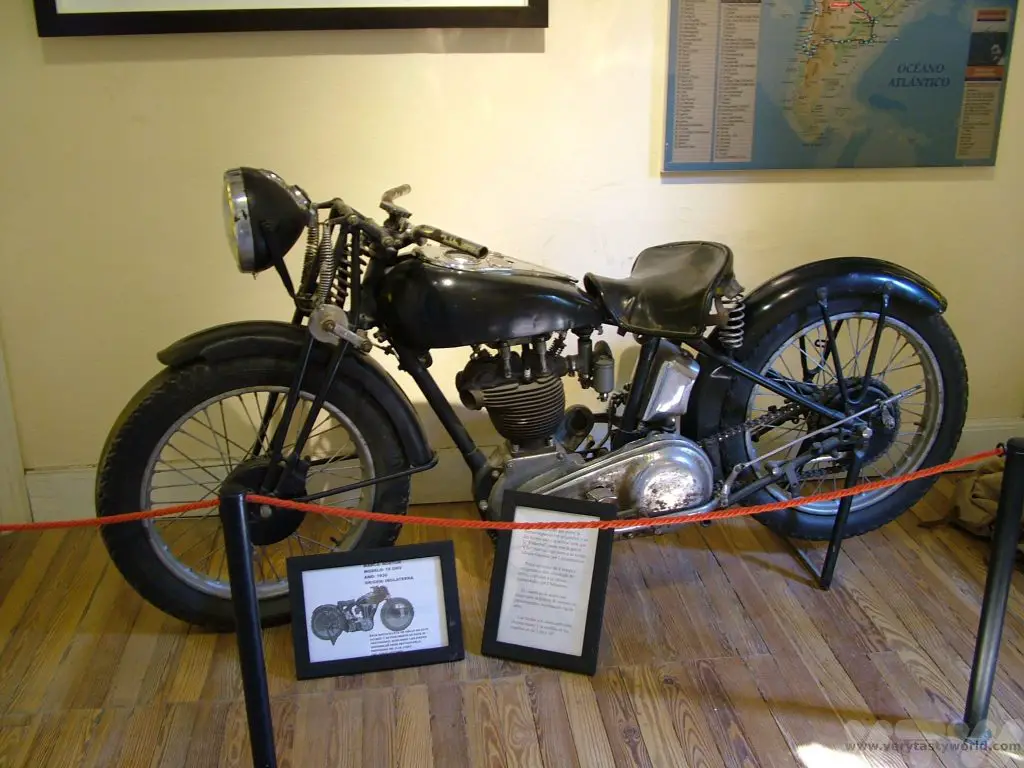
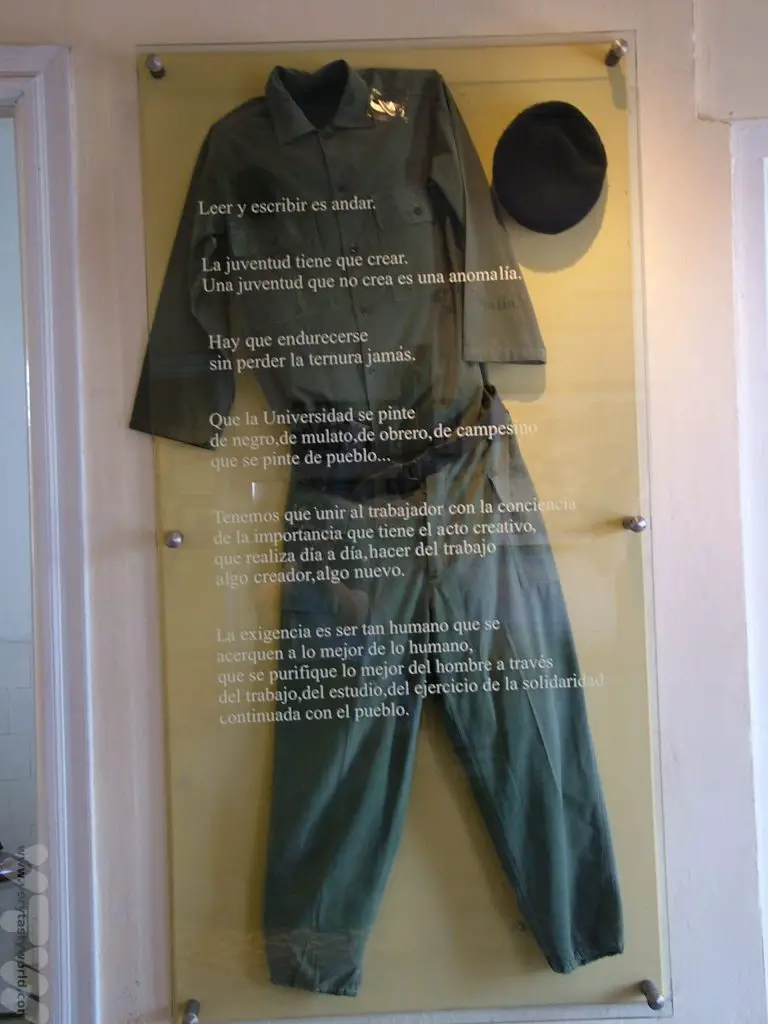
Villa General Belgrano, to the south-west of Cordoba, somewhat bizarrely, offers a little slice of Germany right in the middle of Argentina. It was established in 1930 and is a distinctly alpine town with traditional Bavarian architecture.
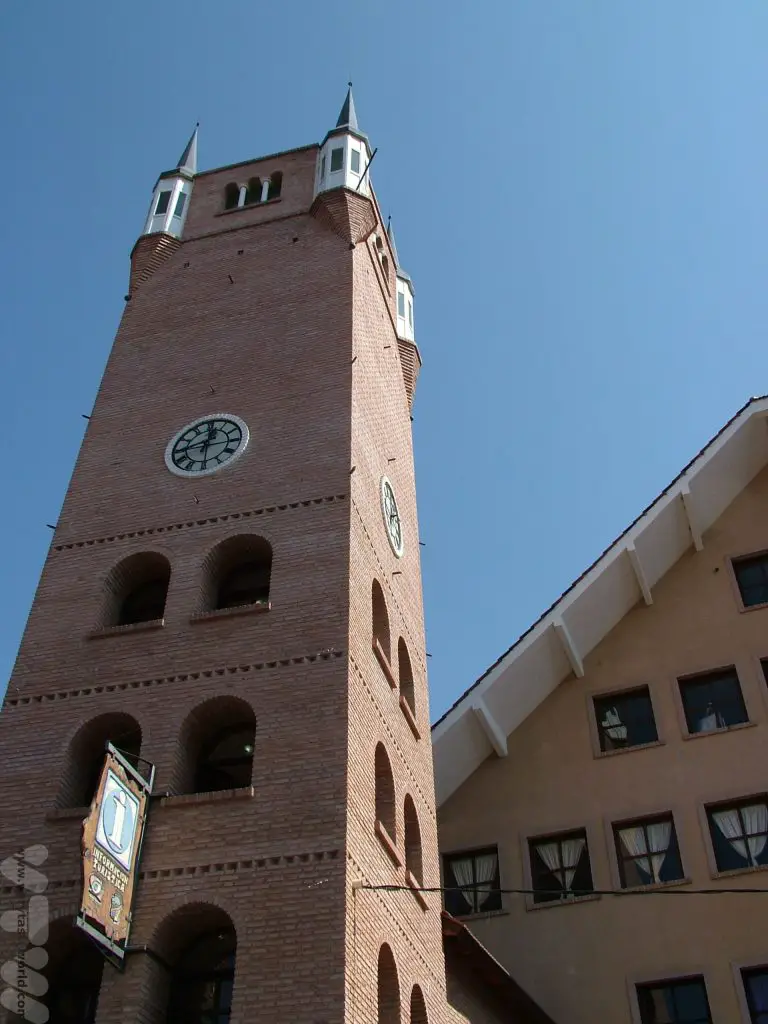

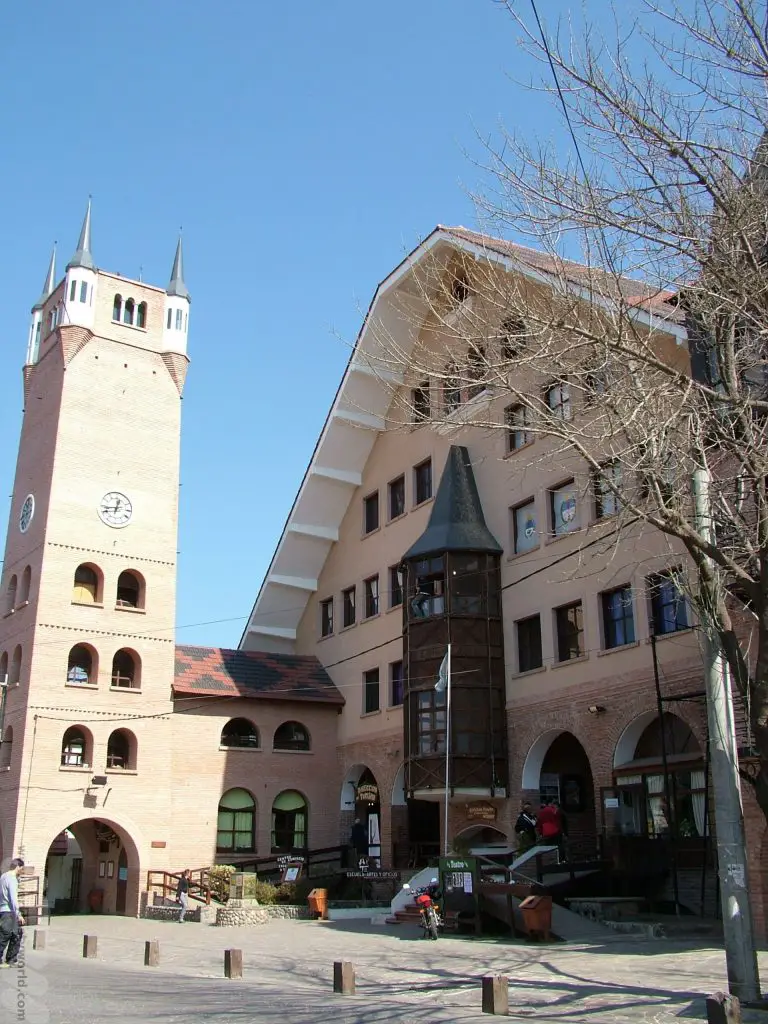
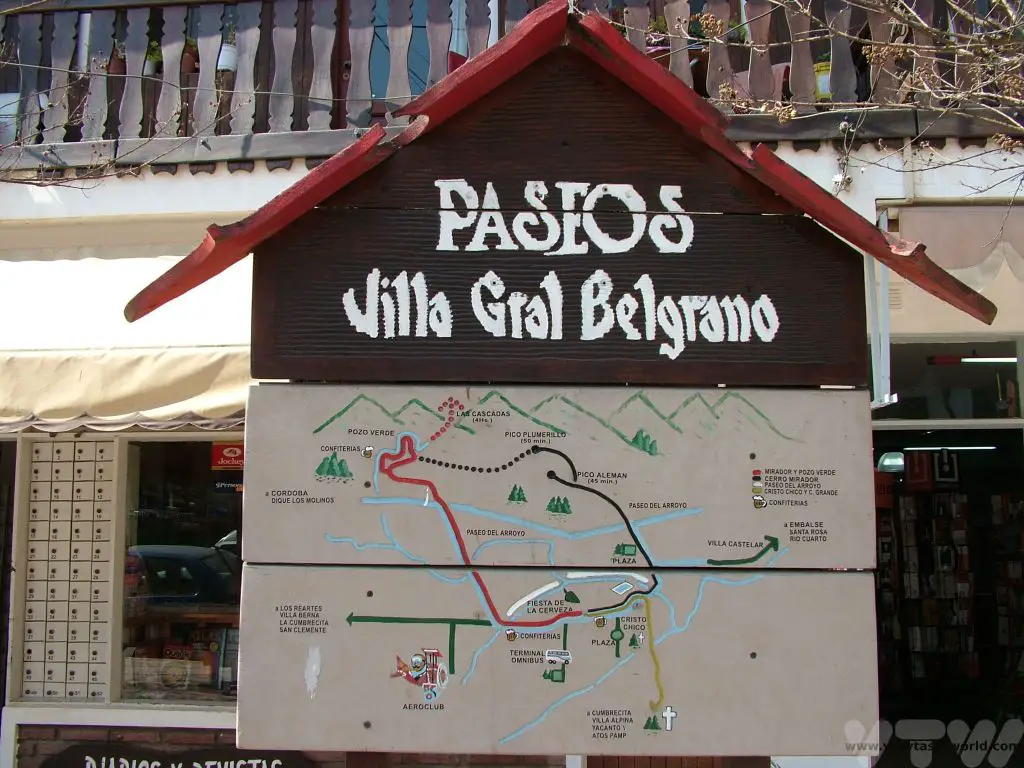
Food-wise, you can enjoy local versions of sausages, Spätzle and strudel amongst many traditional German delicacies, all of which can be washed down with a stein or two of beer. The town has an Oktoberfest event – an annual beer festival – held each October which, after Munich in Germany and Blumenau in Brazil, is considered to be one of the most important in the world.
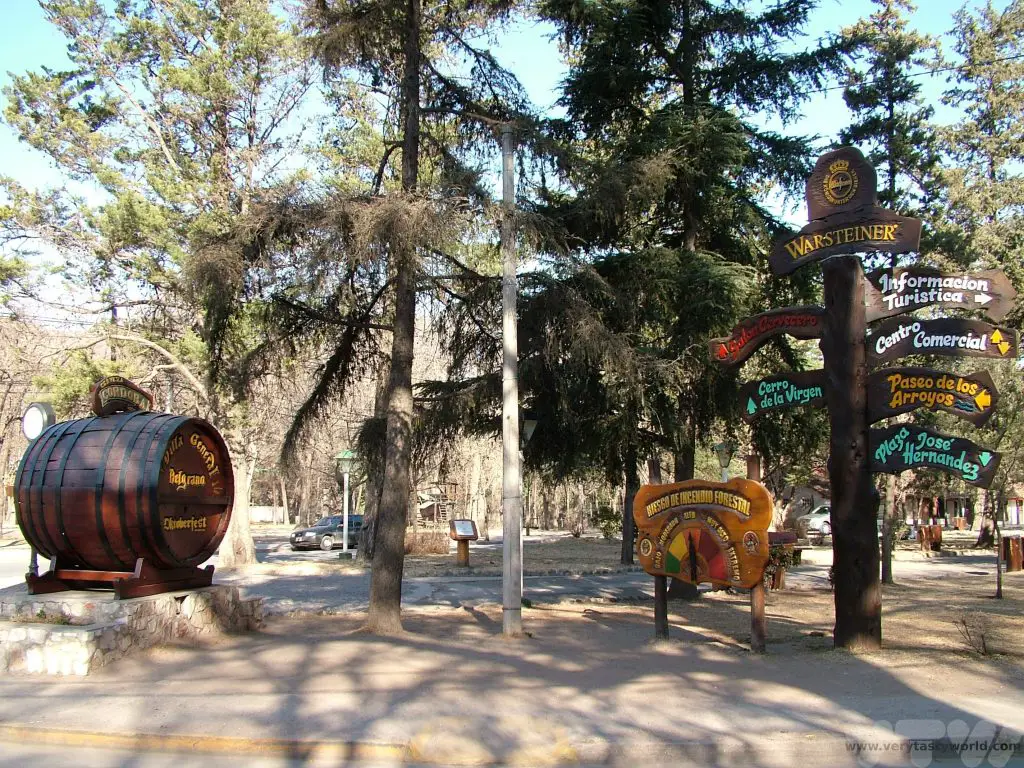
Argentina Asado
When visiting any towns and cities in central Argentina one of biggest impressions that strikes you as you walk around the area, particularly the suburbs, is the aroma, which is predominantly that of meat cooking. It is a mouth-watering scent. Argentinians are well known for their love of meat, especially beef. Asados in Argentina is the equivalent of a barbeque and is massively popular, particularly at weekends.
The word asado refers to both the cooking technique and the event. Most apartment buildings in the city have an asados area where residents can book space and enjoy family time cooking and eating good food together. The area will include a parilla (pronounced ‘parisha’ in Argentine Spanish as the ‘ll’ takes a ‘sh’ rather than a ‘y’ sound), a small kitchen area and benches to prepare and eat your food. You are responsible for clearing up afterwards and leaving the area clean and tidy for other residents to enjoy their asado at another time. We were delighted to be invited to a family asado in Cordoba.
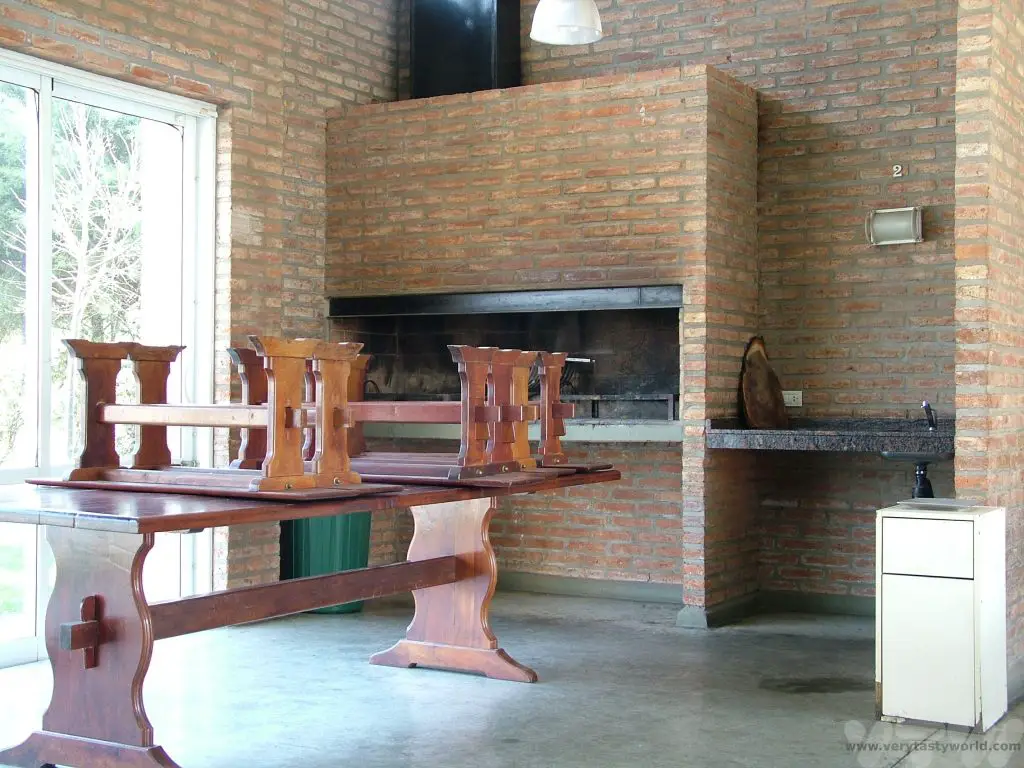
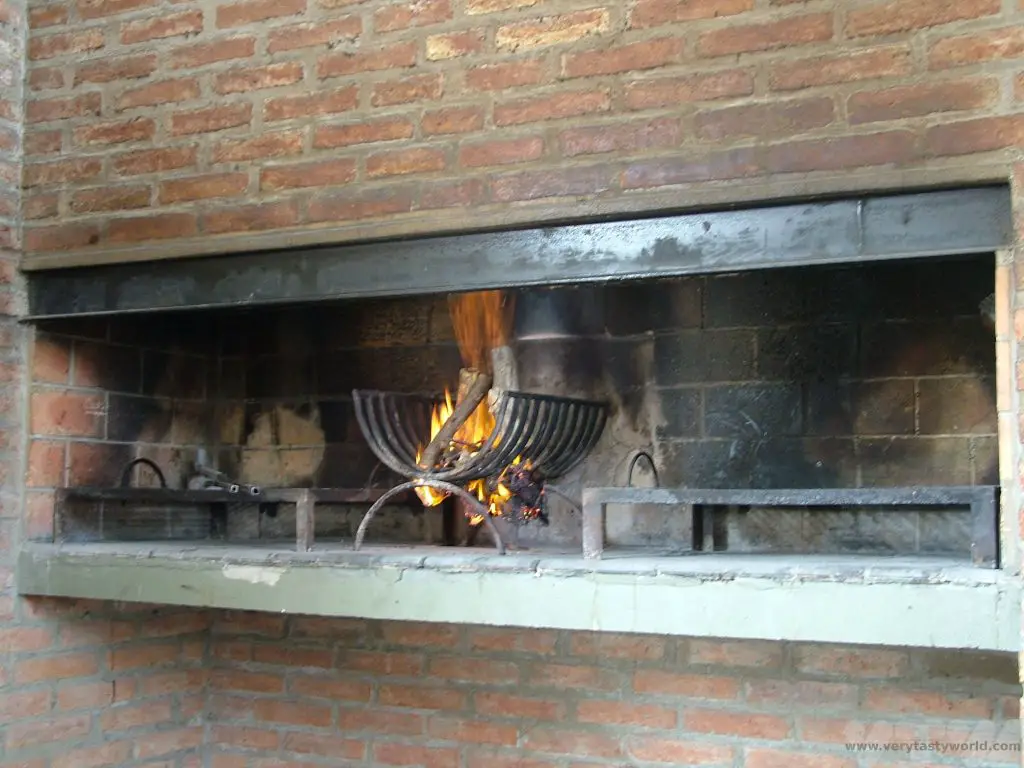
With asados in Argentina there are two parts to the parilla – the v-shaped firebox and the grill. You need to make sure you have fuel. It’s quite common to scour the local area for wood/grasses to burn on the fire. First the fire needs to be started. Wood or charcoal are the most common fuels. Apparently it is not the done thing to use lighter fluid or briquettes – pine cones are sometimes used if the fire is not being very co-operative when starting up.
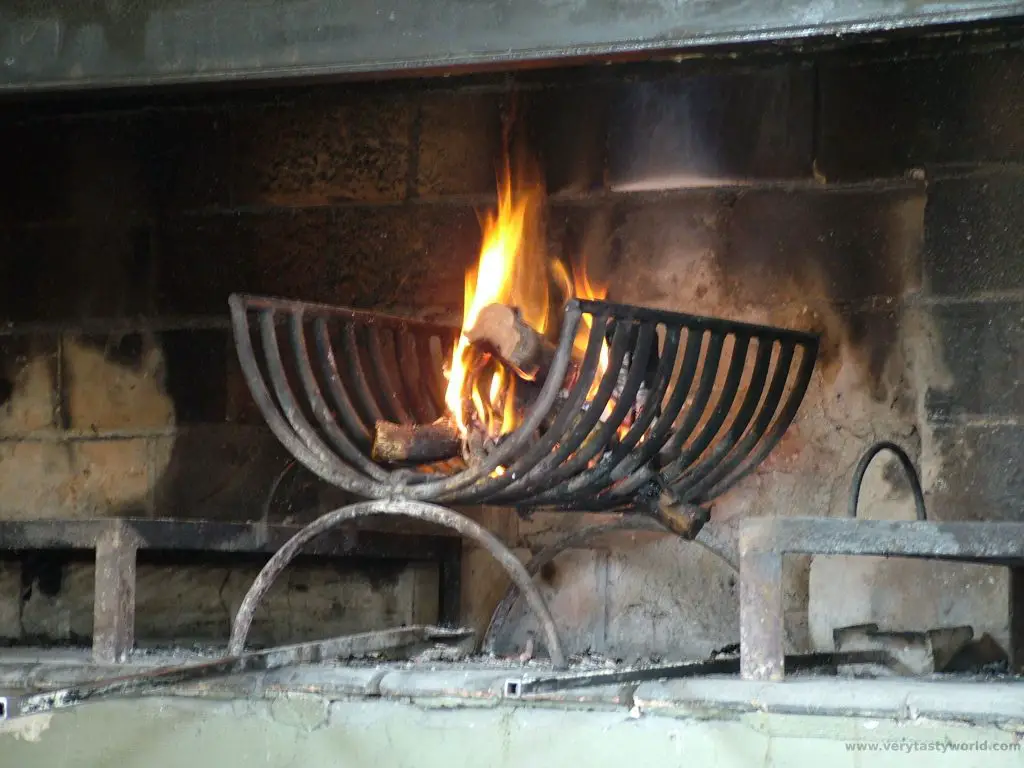
These flames burn too fiercely to cook the meat directly, so the firebox gets really hot then coals from the embers are transferred to the grill and spread around the cooking area. The meat is then placed on the grill above these coals. Traditionally the cook is the asador, invariably male, who takes on responsibility of watching over the feast.
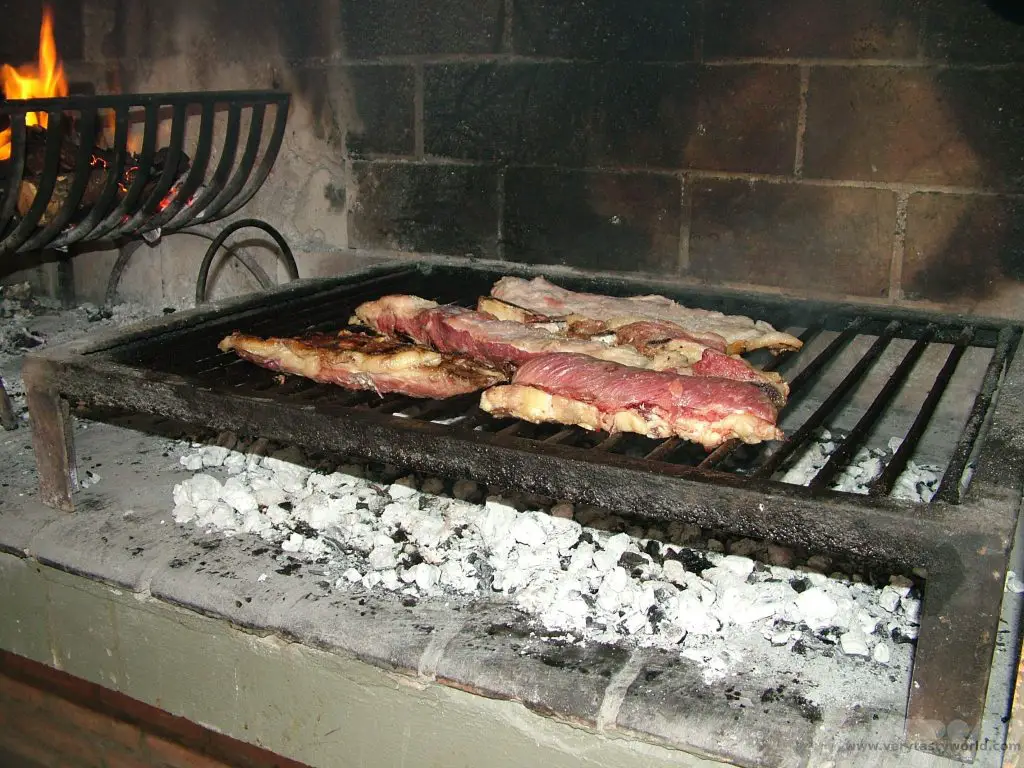
Argentine meat is superb quality and very good value. Bife de chorizo (not to be confused with chorizo sausage) is a thick cut sirloin steak, which usually comes with a generous layer of fat – and remember, fat is flavour.
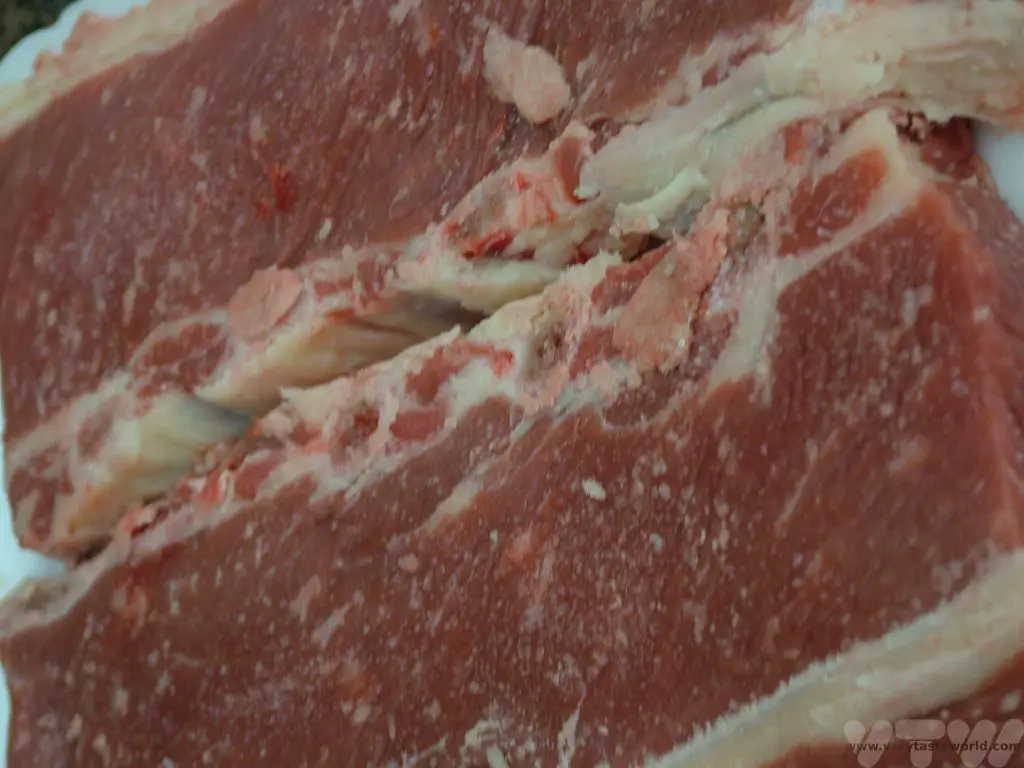
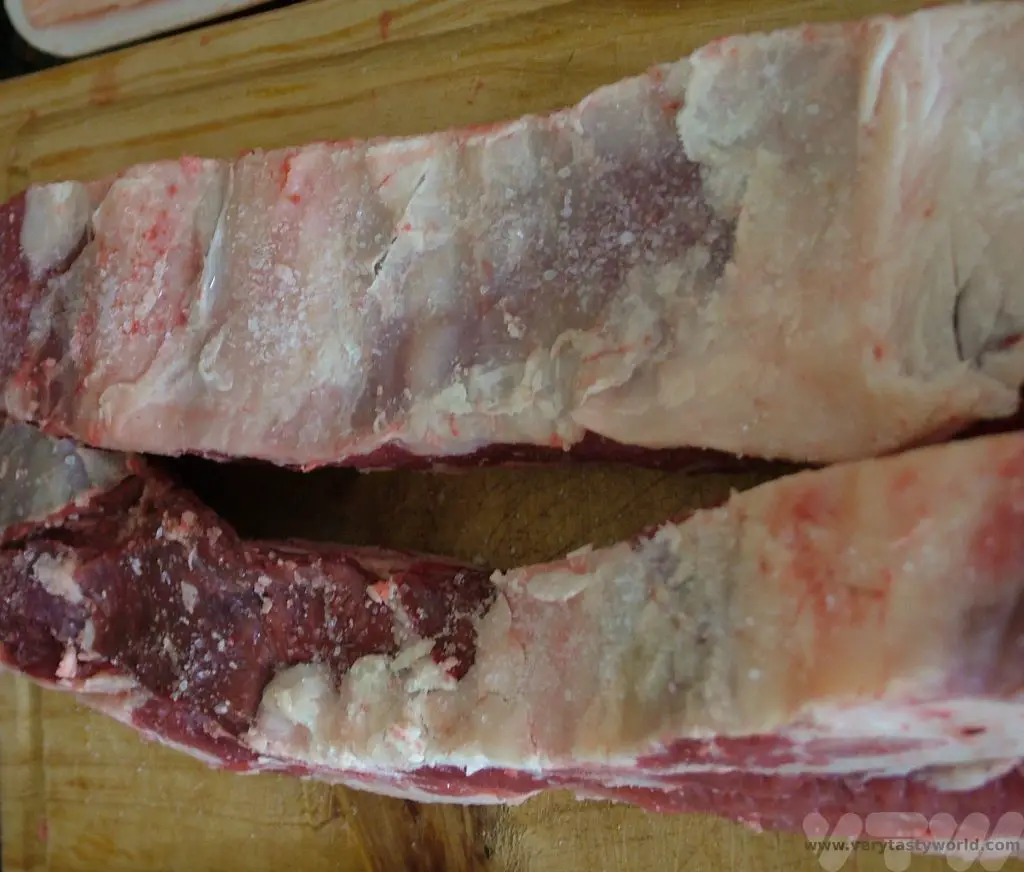
Meat is most definitely the main attraction of the meal. Everything else is secondary. The steak is served with just a hat-tip to carbs – usually bread -which is ideal to mop up the delicious juices – and some token salad so that the meal appears to have a semblance of nutritional balance. Sauces aren’t very common in Argentina either, although the heavenly piquant and gorgeously green chimichurri, which is usually comprised of chopped parsley and oregano, minced garlic, olive oil and red wine vinegar, all blended together, would be a good accompaniment.
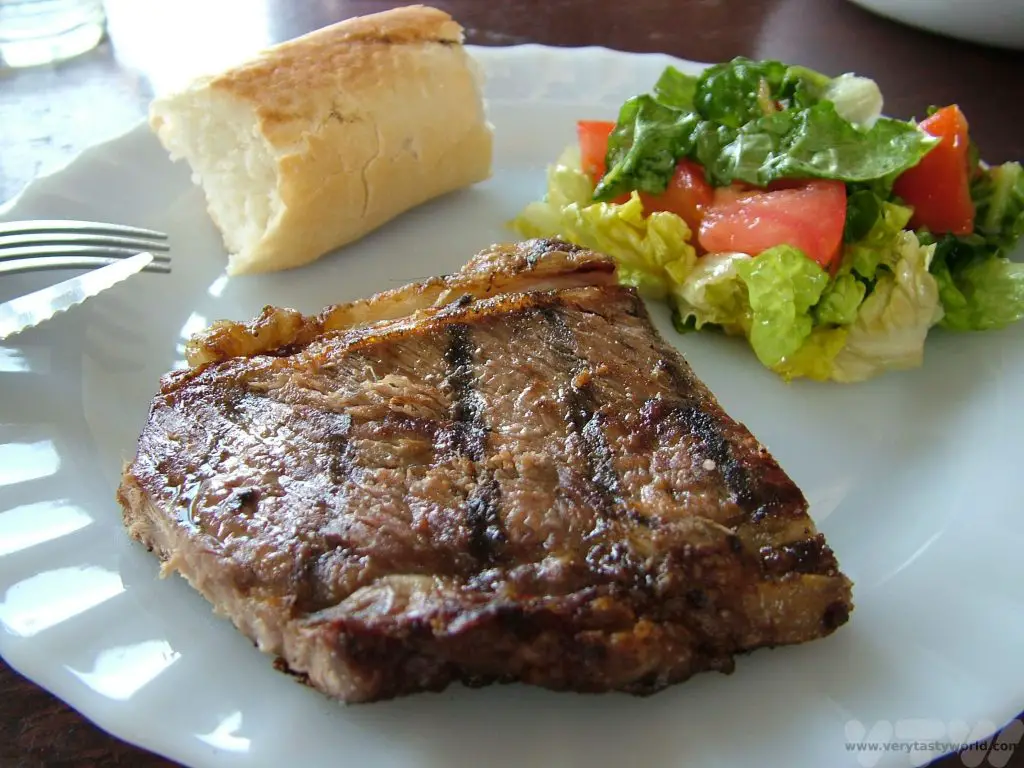
Wine, often a rich, fruity red Malbec, accompanies the food, but beers are also popular. The whole process of cooking, eating and socialising together makes the asados in Argentina a pleasant and relaxing way of spending the afternoon, which can then turn into a very enjoyable evening as well.
Related Posts You May Enjoy

- Best Time To Visit Machu Picchu 2024 Update
- A 2 Week Patagonia Itinerary
- Day of the Dead in Campeche
- A Galapagos Land Based Itinerary
- RECIPE: How to Make Costa Rica’s Gallo Pinto
- A Tasty Puebla Food Tour
- Costa Rica Wildlife Sanctuary – Caño Negro
- Visit Torres del Paine National Park in Patagonia
- Atacama Desert Itinerary
Chinese Spring Festival – Happy New Year!
Lunar New Year is the most important date in the Chinese calendar. It is celebrated not only in China but many other South East Asian countries. Although it is usually known as Chinese New Year in Western countries it is more commonly known as Chinese Spring Festival at home.
Like many festivals all over the world, such as Diwali, Eid and Easter, Chinese New Year is derived from the lunar calendar and is celebrated with food, family reunions and festivities.
It’s a really busy time of year when people travel across the country to visit their families in their home towns and it’s worth noting that flights and trains are likely to be booked up and very crowded. But it’s a joyous time and everyone in the country views it as a cause for celebration. Displays featuring the animals of the zodiac can be found all over town.
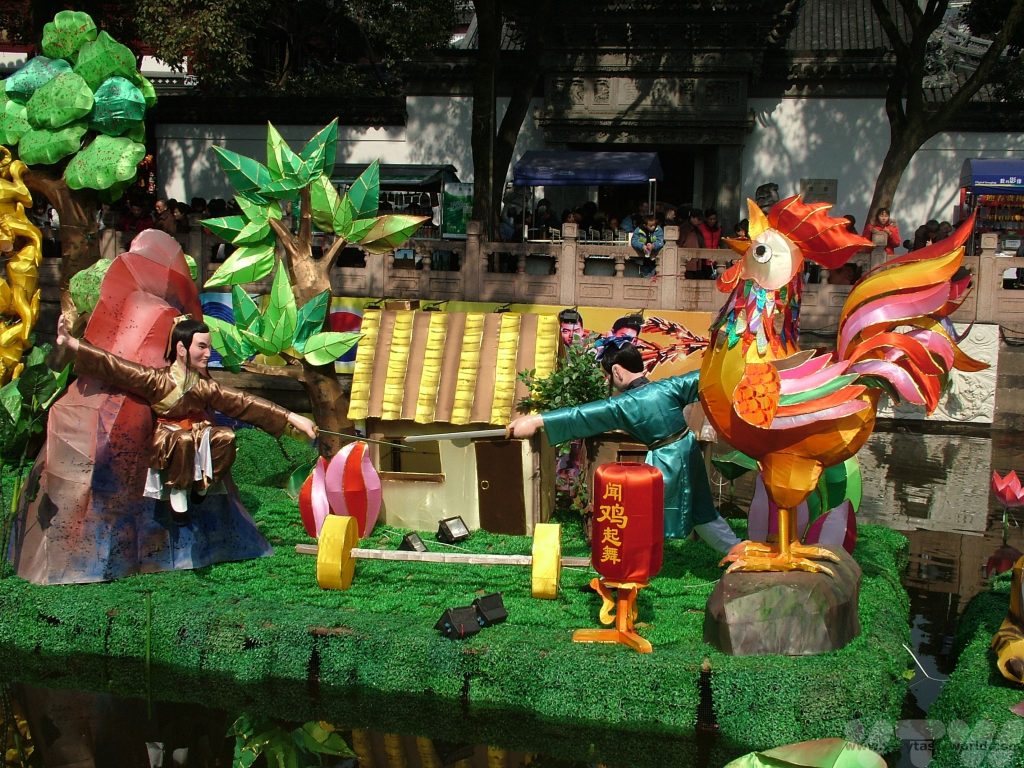
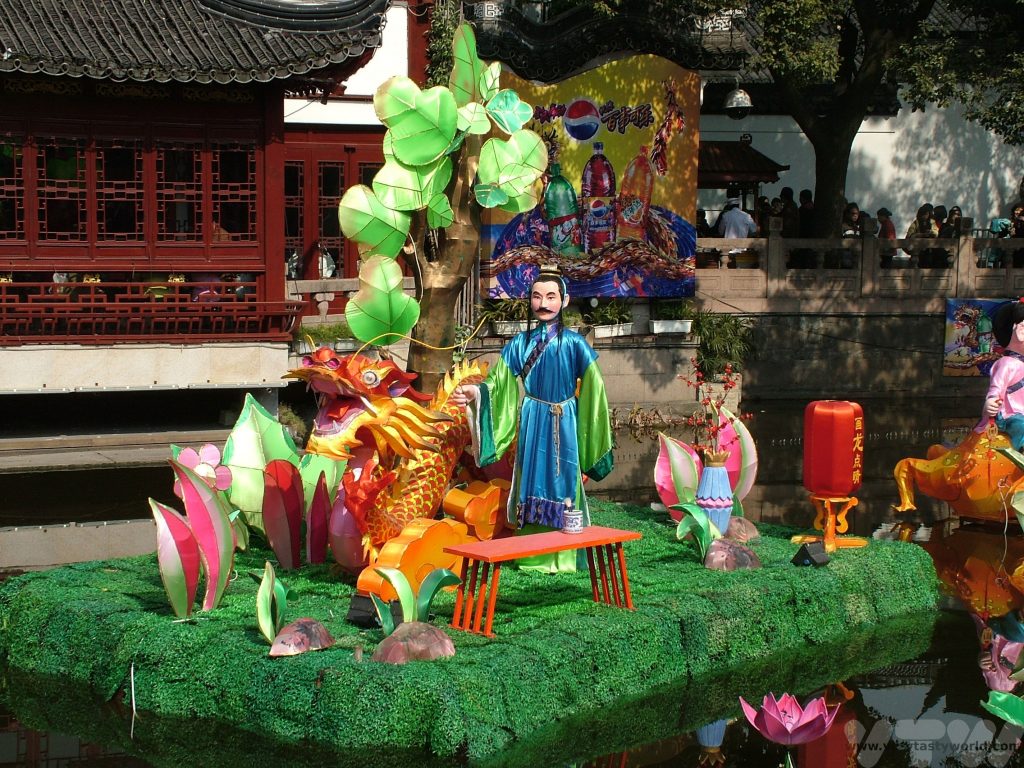
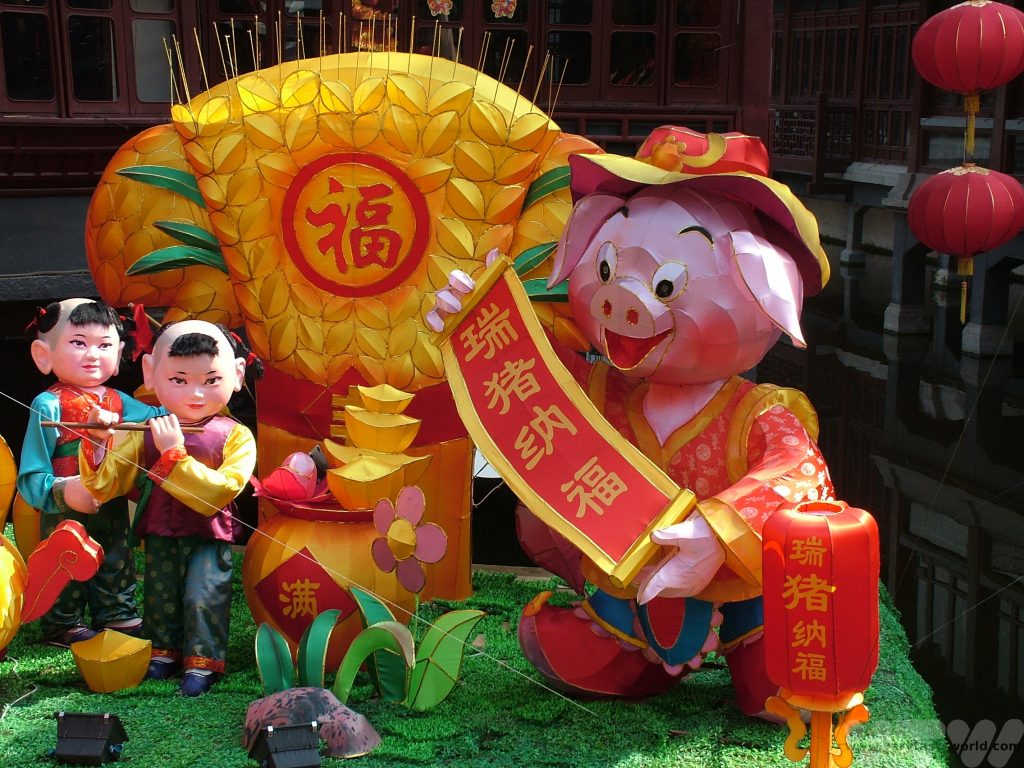
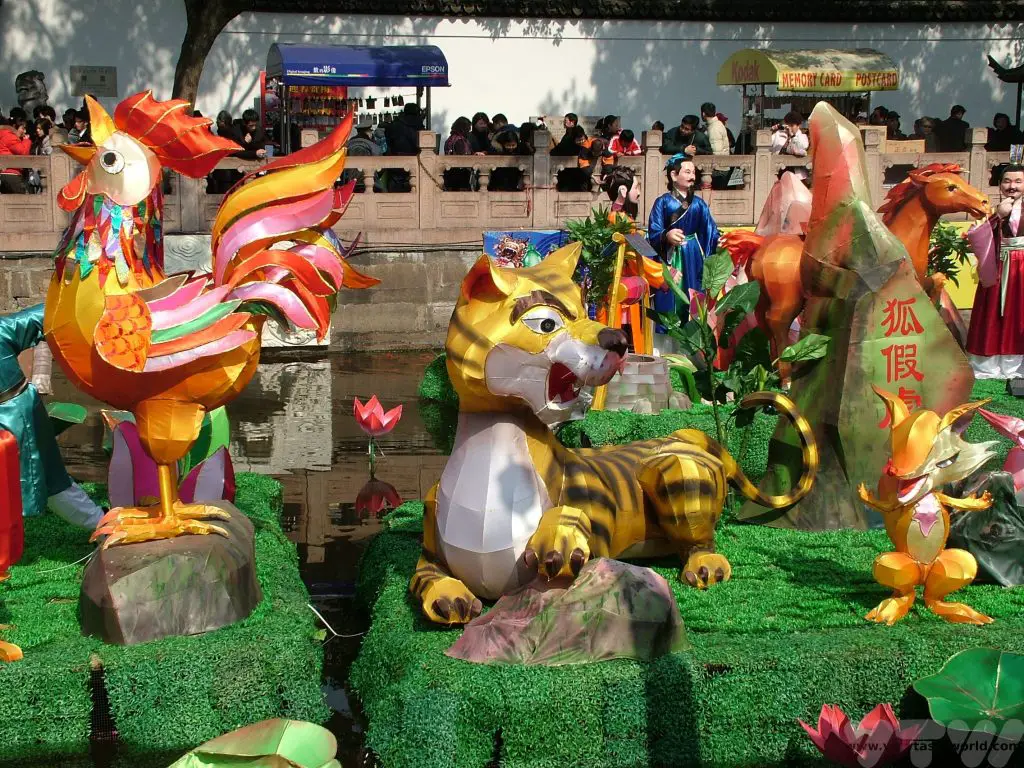
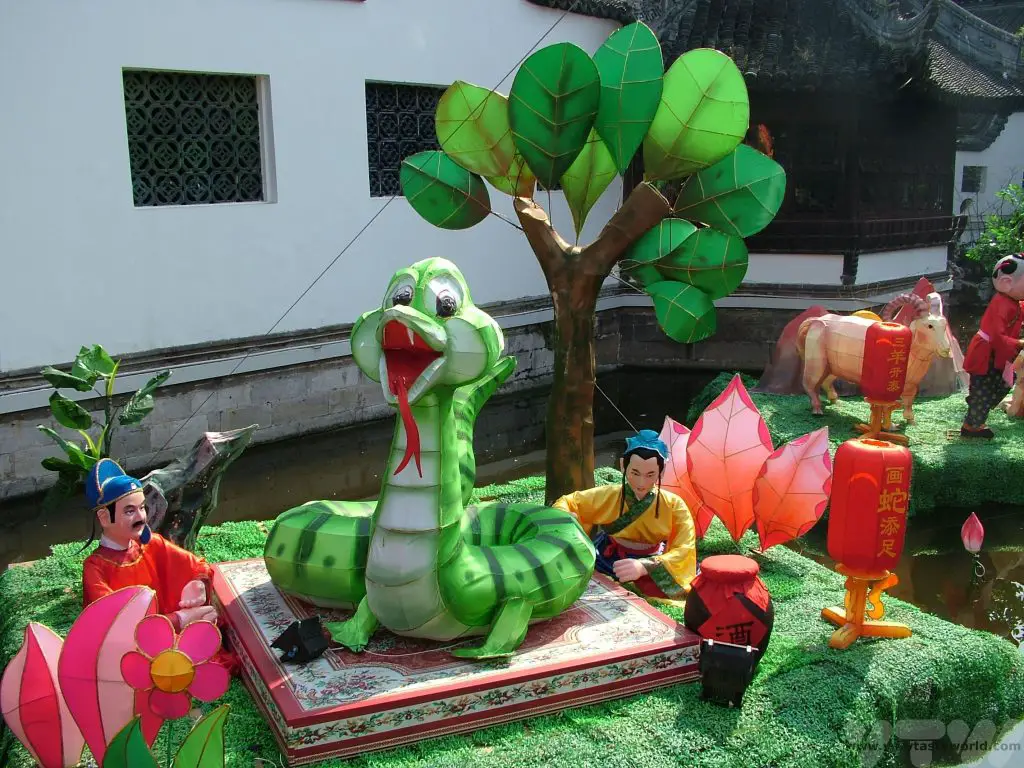
It’s also a lovely time of year because spring blossoms are often coming into bloom, especially in the southern part of the country.
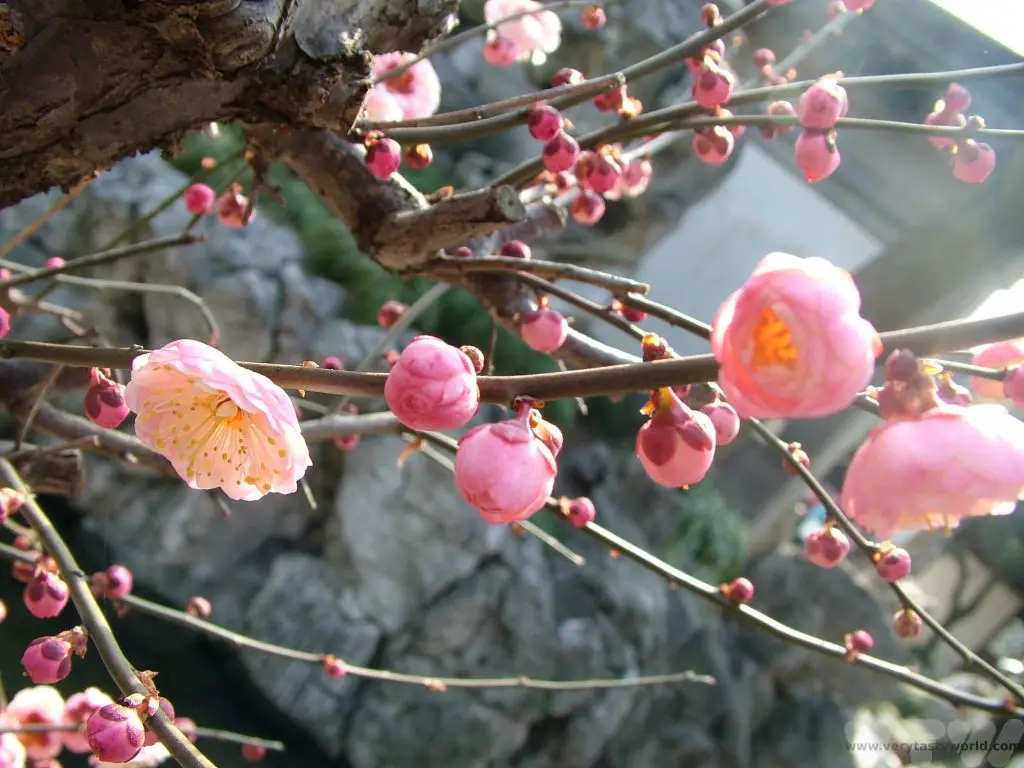
Food is an important part of Chinese New Year when families come together and enjoy the celebrations. We have spent new year with Chinese friends in the UK who served us a feast. Traditional dishes include a whole fish, this one cooked with ginger, garlic and spring onion. It’s important that the fish is served whole – head to tail represents the start and end of the year and it also represents plentiful food and good luck.
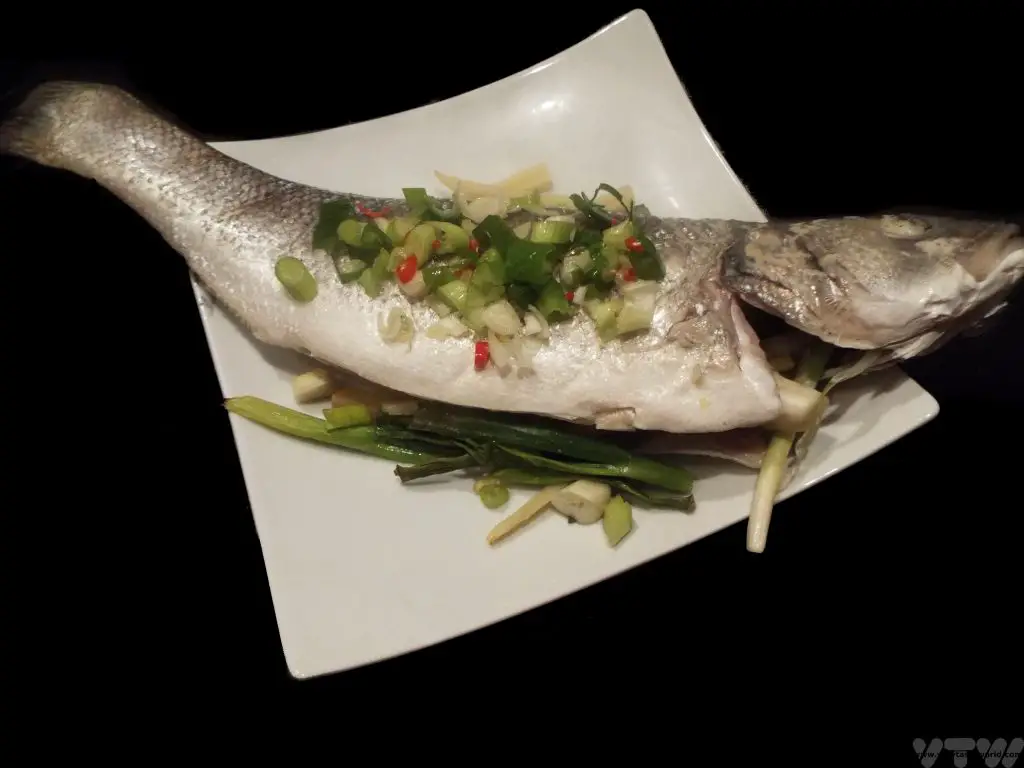
This fish dish is easy to cook and tastes delicious. There’s a recipe here. Catfish and carp are popular fish.
We also sat around the table and made jiaozi (dumplings). These represent old-style Chinese coins which symbolise prosperity throughout the year. It’s great fun to sit around a table together drinking beer and chatting as you fill the dumplings, which are later boiled, steamed and/or fried and then enjoyed at midnight. Sometimes a gold coin is put inside one of the dumplings for a lucky recipient.
The dumplings can be filled using a variety of ingredients: minced pork and cabbage or chive (or cabbage and chive), chicken, mutton, prawns or fish are popular, as are vegetable fillings, such as mushrooms, cabbage, leek, spinach, and spring onions. Any of these ingredients can be combined. The dumplings are usually served with a dipping sauce. Soy sauce with vinegar and sesame oil is popular and gives a salt, sour, smoky flavour to accompany the dumplings. You can make it to taste but it’s worth noting that you only need a tiny amount of sesame oil – just a few drops – as it has an incredibly intense flavour. Some dipping sauces add a dash of chilli oil to provide heat.
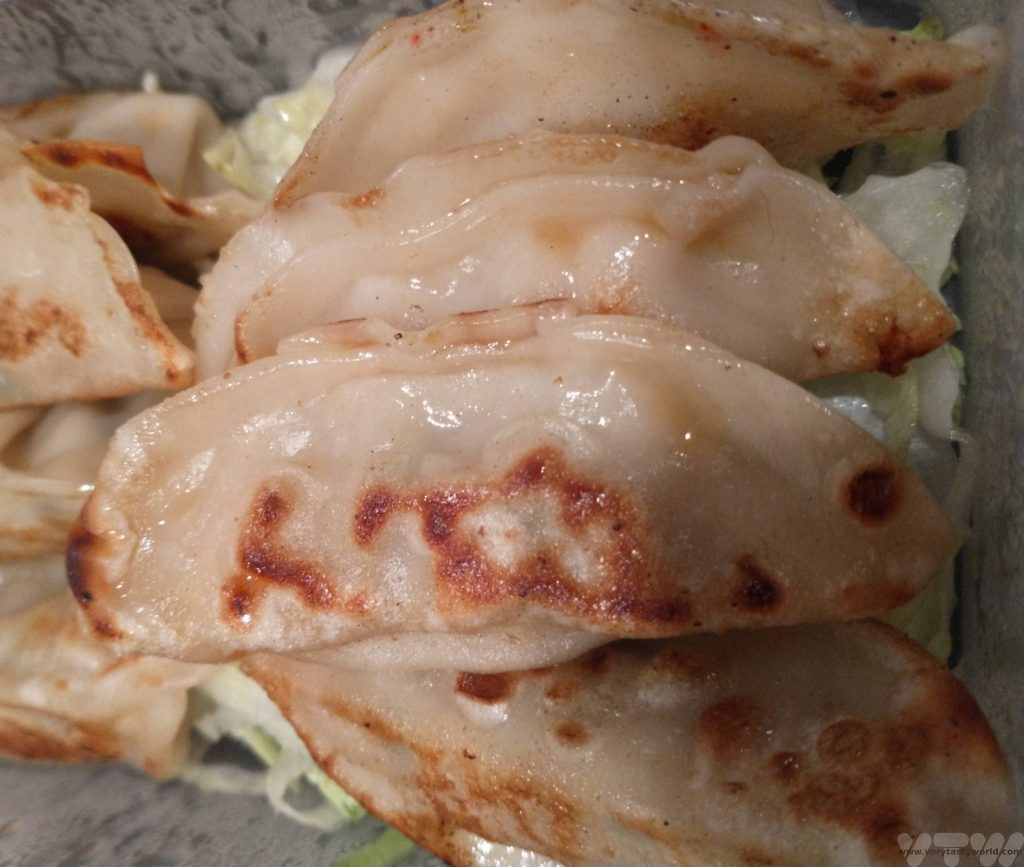
Other traditional foods include noodles, which represent longevity (due to the length of the noodles) and happiness as well as spring rolls which represent wealth. Sweet dishes include glutinous rice cake which apparently ensure you can aim for a higher position in life/work (and hence the prospect of a better income) and sweet rice balls which represent family harmony. These, particularly, are eaten throughout spring festival.
Although the highlight of the celebrations revolve around the lunar new year, Spring Festival actually lasts for a fortnight. It begins on the new moon and ends 15 days later on the full moon. The last night is known as the Lantern Festival. Red lanterns can be seen everywhere towards the end of the celebrations. This can be a bit confusing as during the rest of the year red lanterns will often indicate that the establishment is a restaurant.
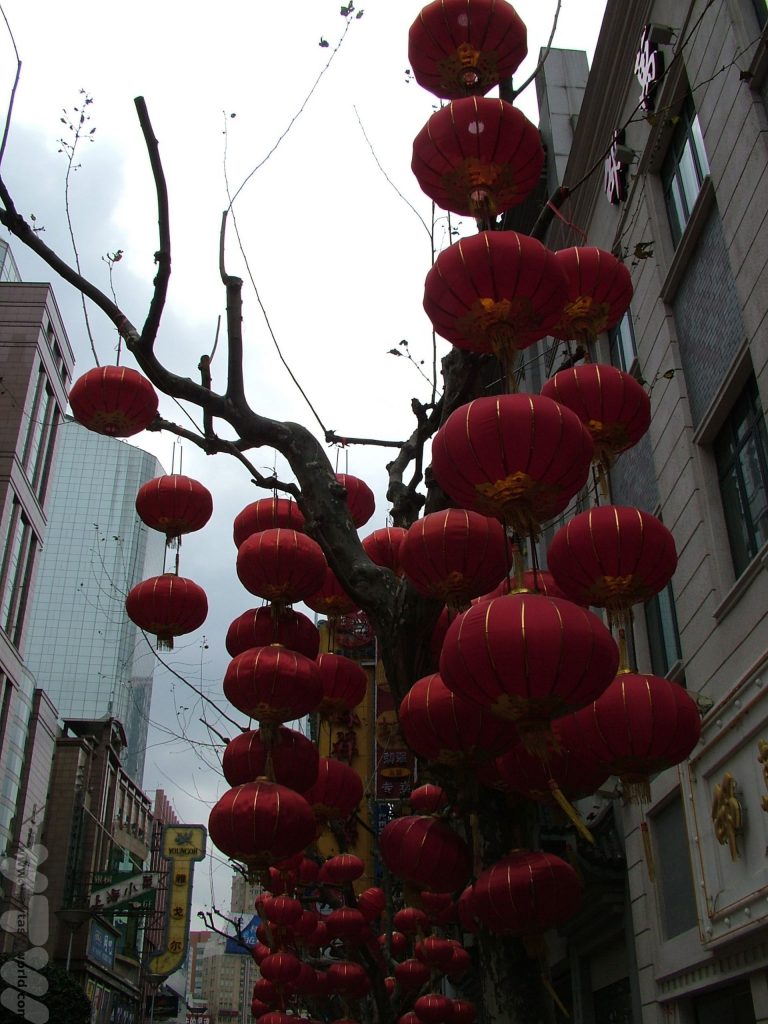
We were lucky enough to be in Xi’an on the last night of Spring Festival some years ago and went along to the Big Wild Goose Pagoda to join in the celebrations. We had never seen so many fireworks – they started at 6pm and went on till midnight – you could see fireworks in every direction you looked – and hear firecrackers. (In recent years, use of fireworks has been reduced or banned for environmental reasons.) The atmosphere was terrific – everyone was incredibly friendly on this happy occasion – and it was very much a family event.
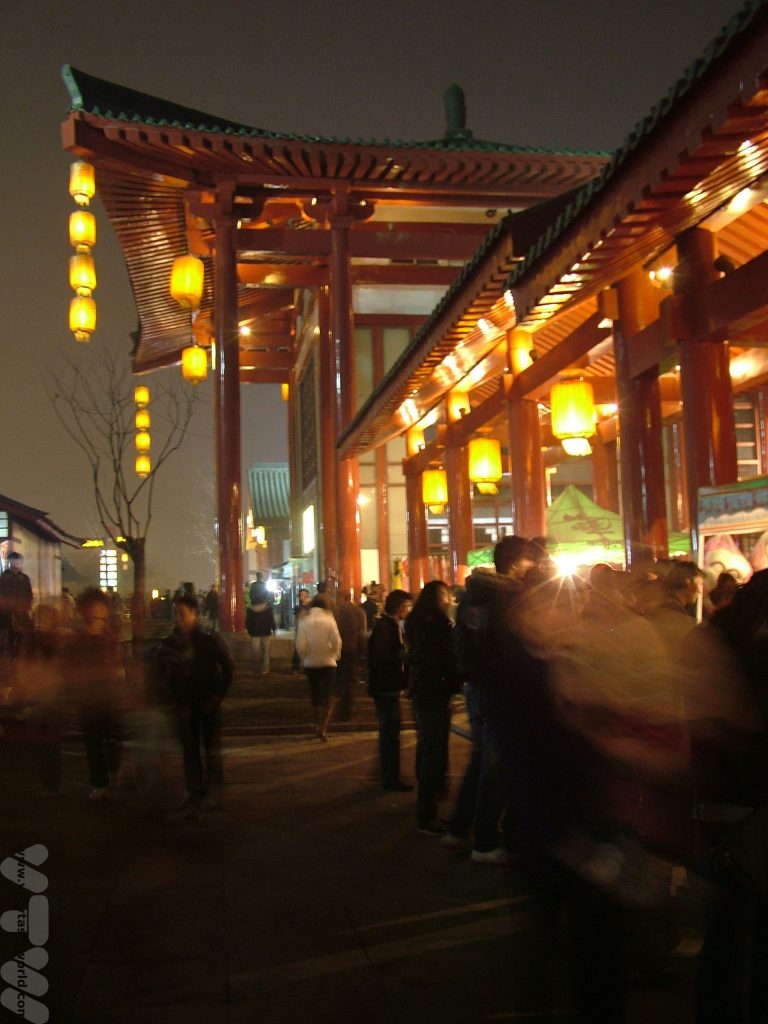

Xi’an has a dancing fountain – it has the form of a T shape that is about 50m across and 100m long. It’s located on the north square of the Big Wild Goose Pagoda. Every night a variety of music that ranges from traditional Chinese to Western classical and Cantopop plays – and the fountain dances along, forming a colourful waterscape. All the water drains away immediately into a reservoir to be stored for the next show. The timing of the show varies depending on the season so, if you are visiting the area, it’s worth checking out the timetable so as to be sure to catch it.

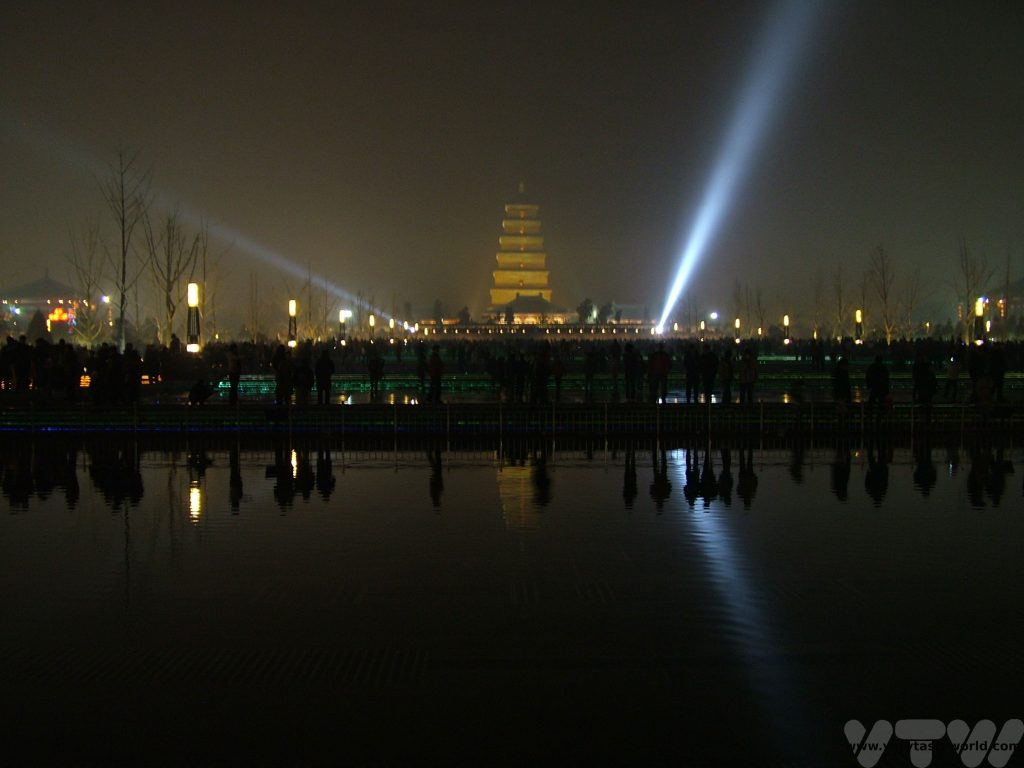
2924 is Year of the Dragon and begins on February 10th. Celebrations will ensue culminating on February 24th with the Lantern Festival.
The animals associated with the years are based upon the Chinese horoscope. All twelve signs of the Chinese zodiac have different symbols and it is thought that people’s character traits can be reflected in those born in a particular year.
The personality traits for someone born in the Year of the Dragon could be deemed to be strong and independent but maybe seeking love and support – impulsive adventurers. The characteristics of Very Tasty World’s founders could be reflected in their zodiac animals because VTW has a compassionate, generous and diligent Pig associating with a sharp, smart, recondite cheeky Monkey.
Gong Xi Fa Cai! Or Gong Hei Fat Choy!


Haggis with Neeps and Tatties
Scotland’s National Dish
There are many reasons to visit Scotland. The landscape is nothing short of spectacular whether you are visiting the highlands, the lowlands or the coast.
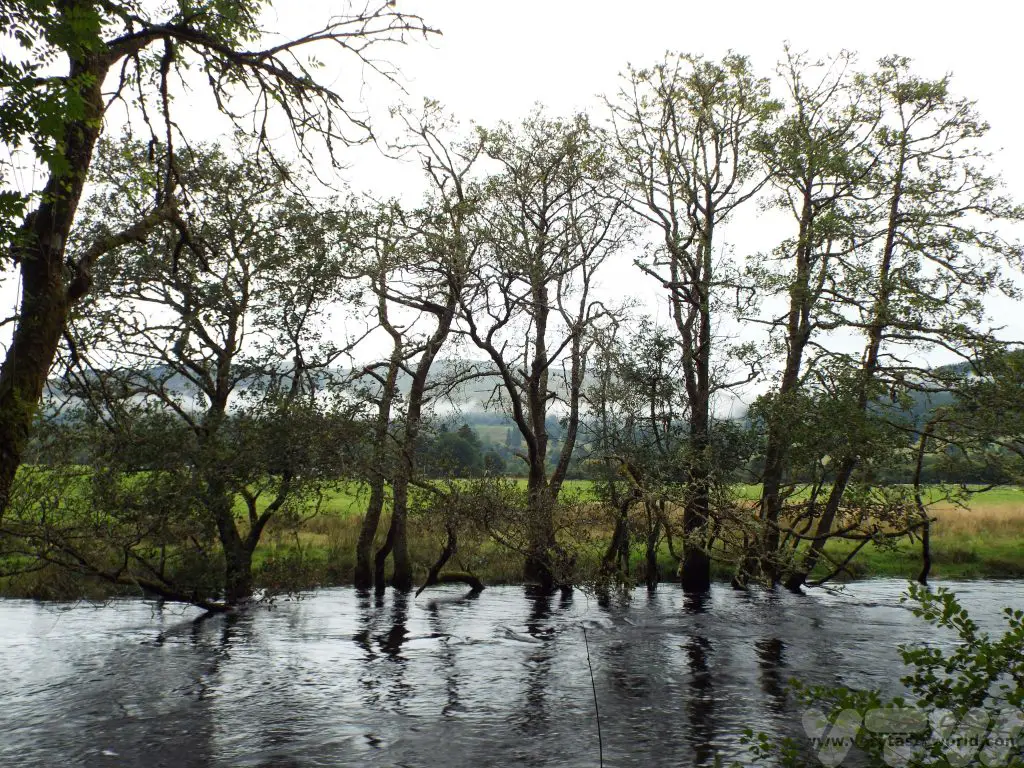

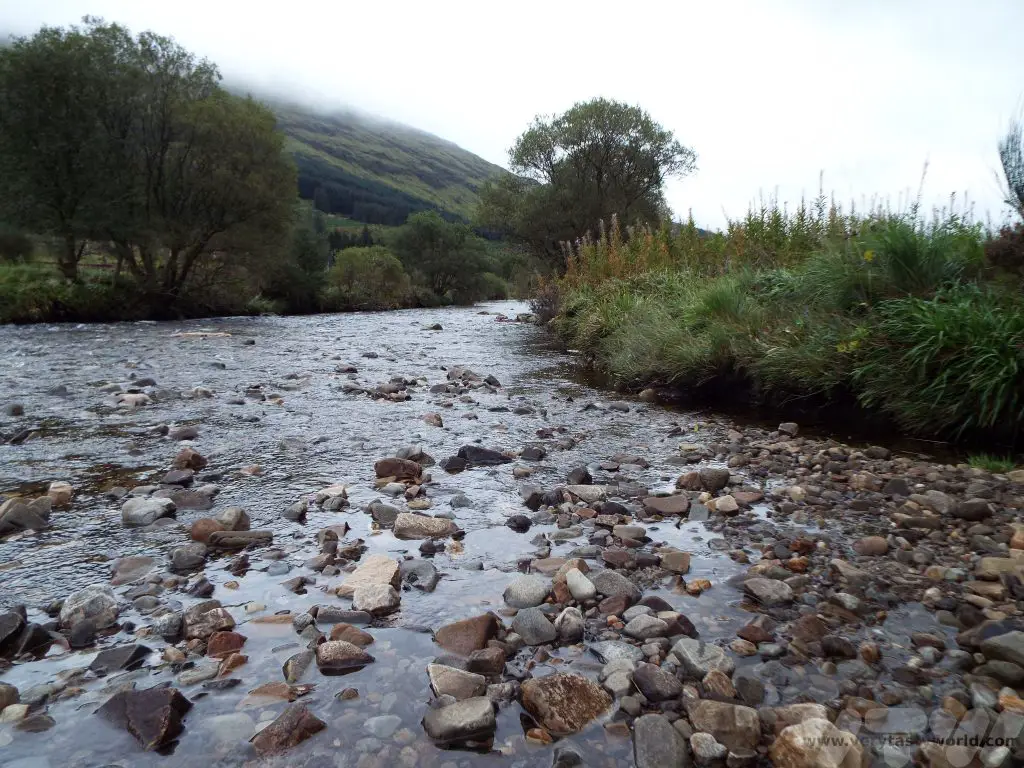
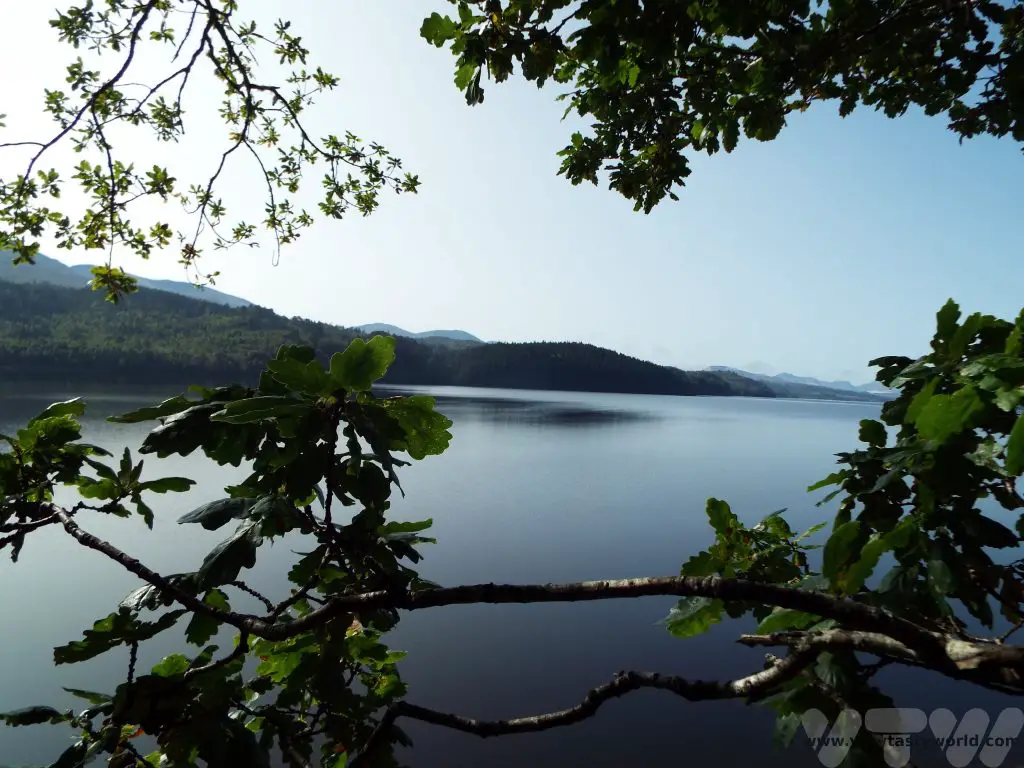
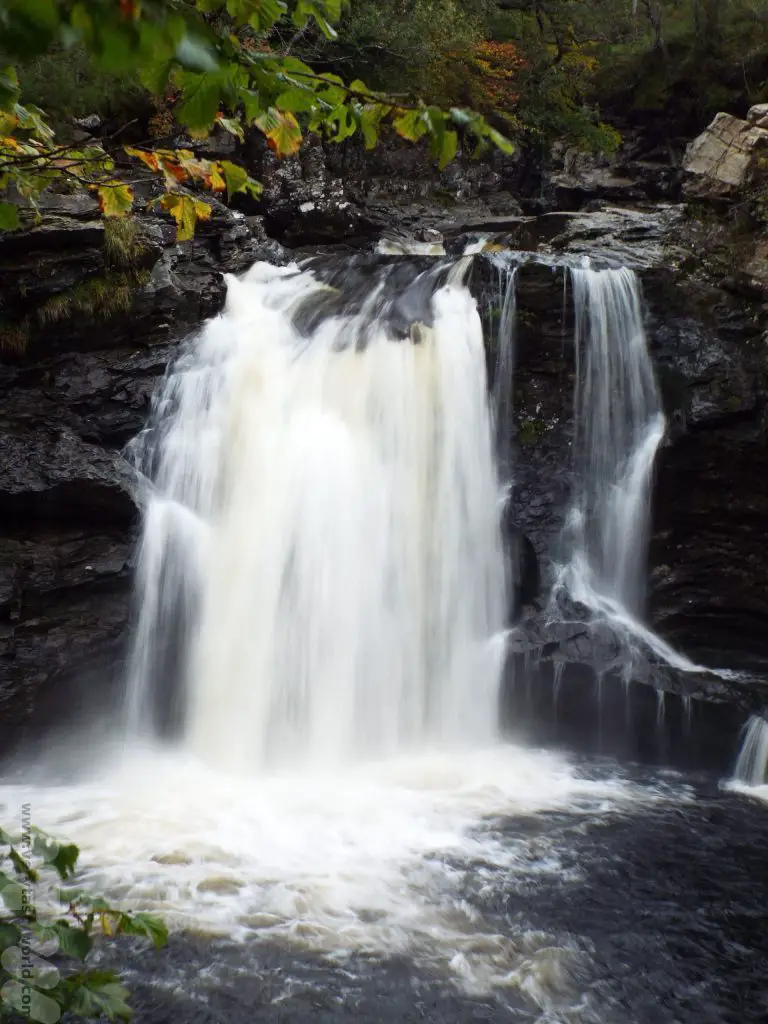
The country has a long and fascinating history and the towns and cities, particularly Glasgow and Edinburgh, have an enormously rich cultural heritage. It even boasts a famously elusive monster that apparently dwells in its biggest lake, Loch Ness.
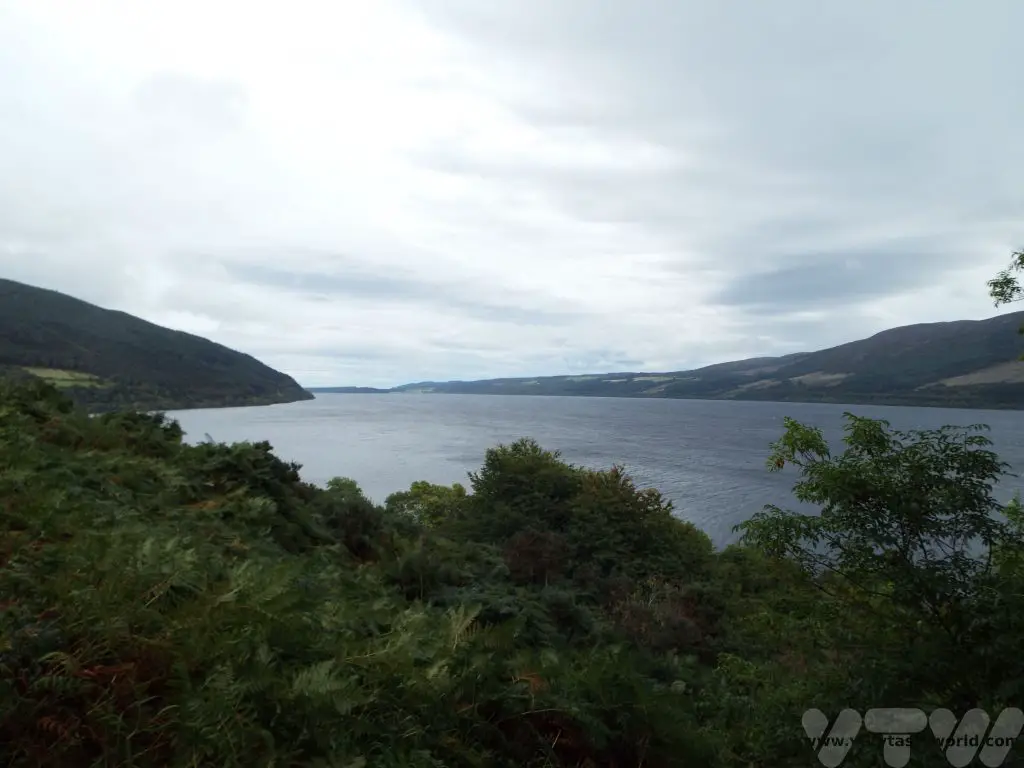
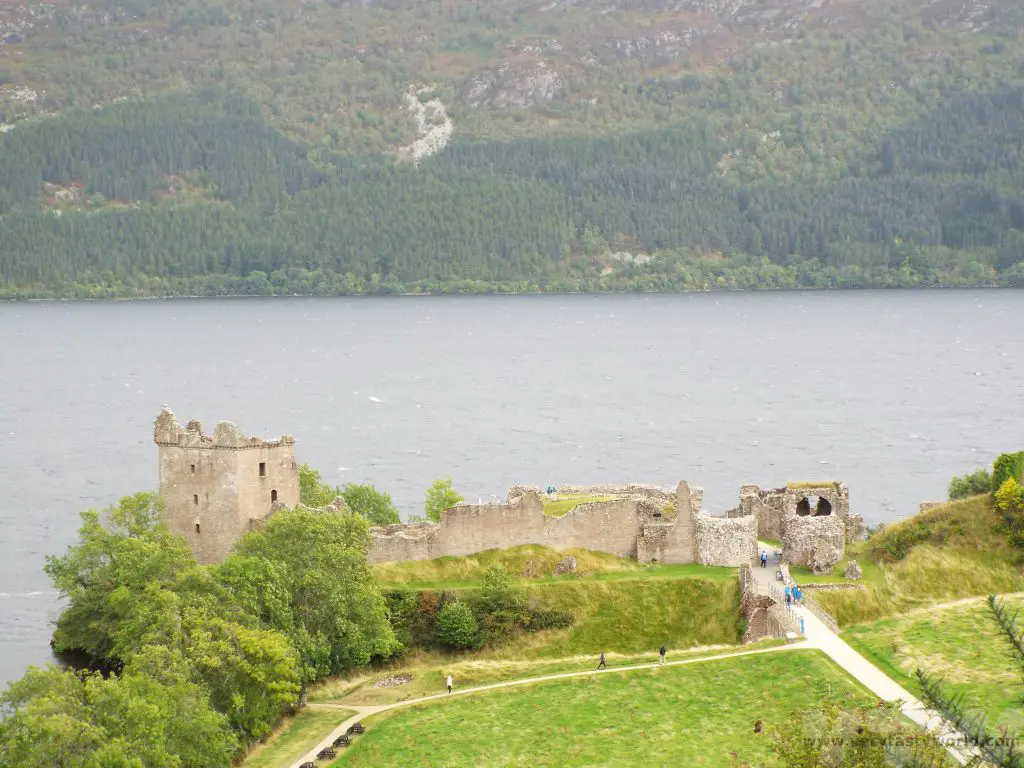
Food-wise, Scotland has so much to offer. With a long, beautiful and often dramatic coastline, the seafood is top quality. With plenty of grazing land Scottish meats are also fantastic – notably the beef, pork and lamb. And then, of course, there’s the whisky (always spelt whisky, not whiskey) – with distilleries scattered all over the country.
Haggis with Neeps and Tatties
Scotland’s national dish is haggis.
The first rule of haggis is: do not think about haggis.
The second rule of haggis is: do not think about haggis.
Haggis is comprised of the heart, lungs and liver of a sheep, all ground up together, mixed with oats and spices, and then boiled inside the stomach of a sheep. Yes, it is basically boiled offal. And anyone who has ever tasted nasty grey liver which had been boiled until it could bounce for their school dinners are likely to have been put off offal for life. Offal does have a strong flavour and, when cooked badly, a horrible texture. Haggis is great because it uses all parts of the animal to the full – nothing is wasted – which is as it should be. And having tasted it (while trying very hard not to think about it)… it is genuinely delicious. Maybe it has an additional ingredient of magic because those components shouldn’t work and yet they really do.
Vegetarian haggis is also available for vegetarians/vegans or those who really can’t stomach the idea of stomach-boiled-offal. Vegetarian haggis uses the same oats and spices combination but replaces the meat with nuts and seeds. It tastes the same as conventional haggis but has a different texture that is really nutty and also absolutely delicious.
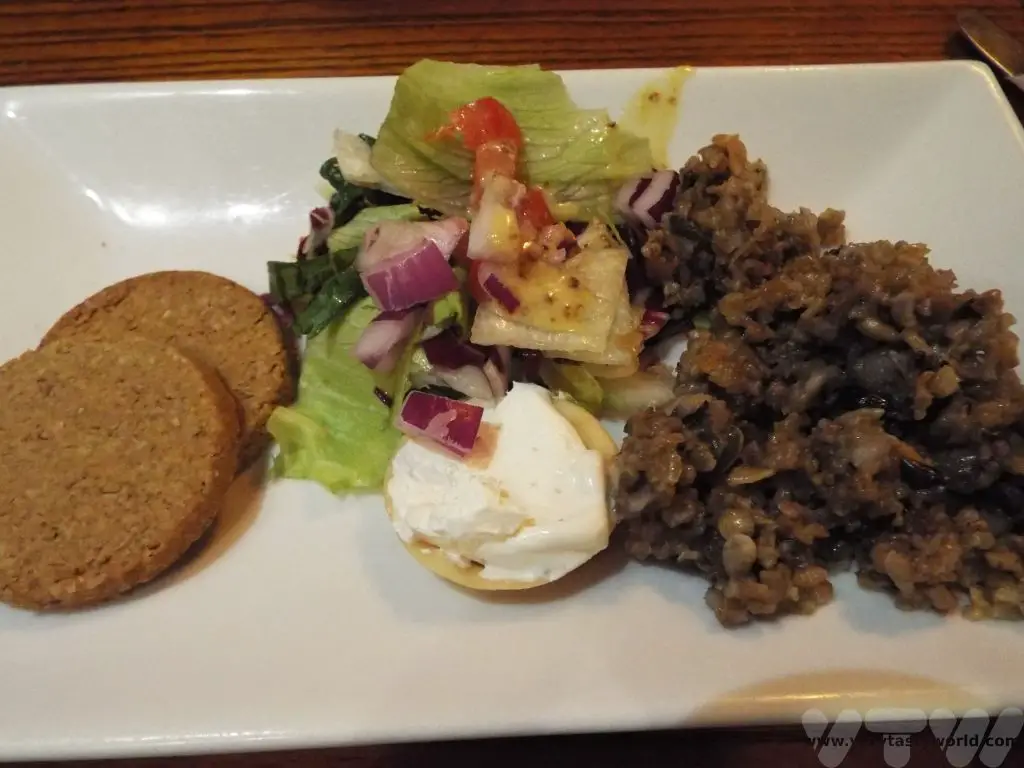
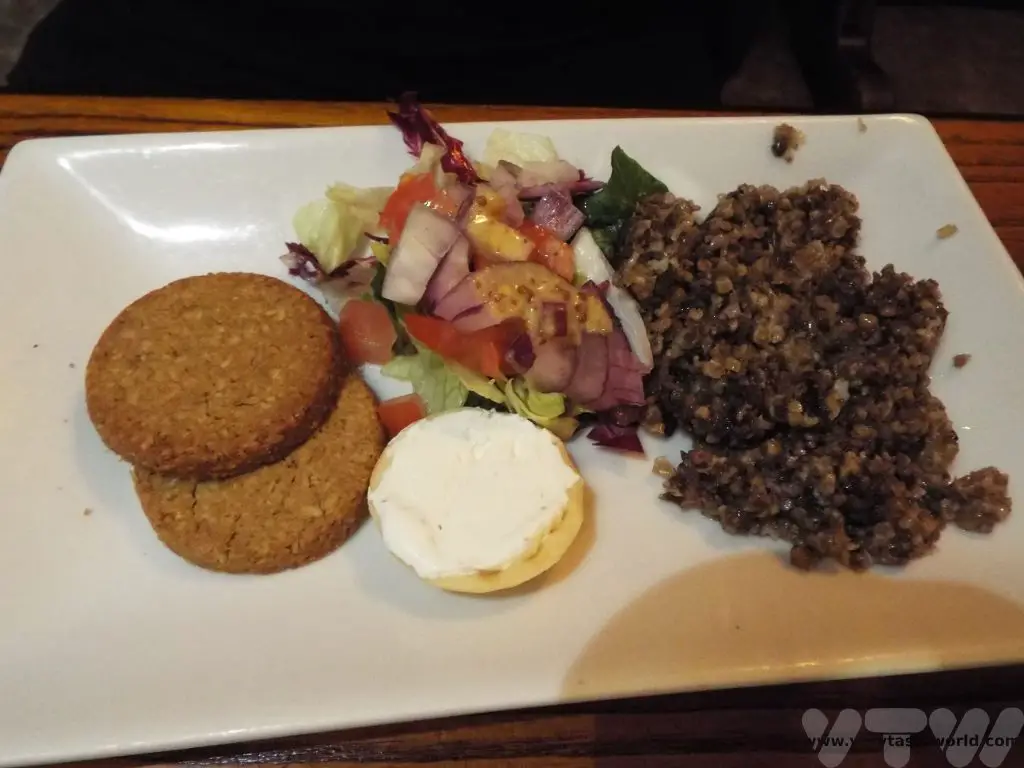
Haggis is traditionally served with neeps and tatties. Neeps are turnips (to the Scots but actually swede to the English and the Welsh – probably) and tatties are potatoes (for which there is very little possible ambiguity).
Both vegetables are boiled and either diced or mashed before serving. The whole meal is hearty and filling.
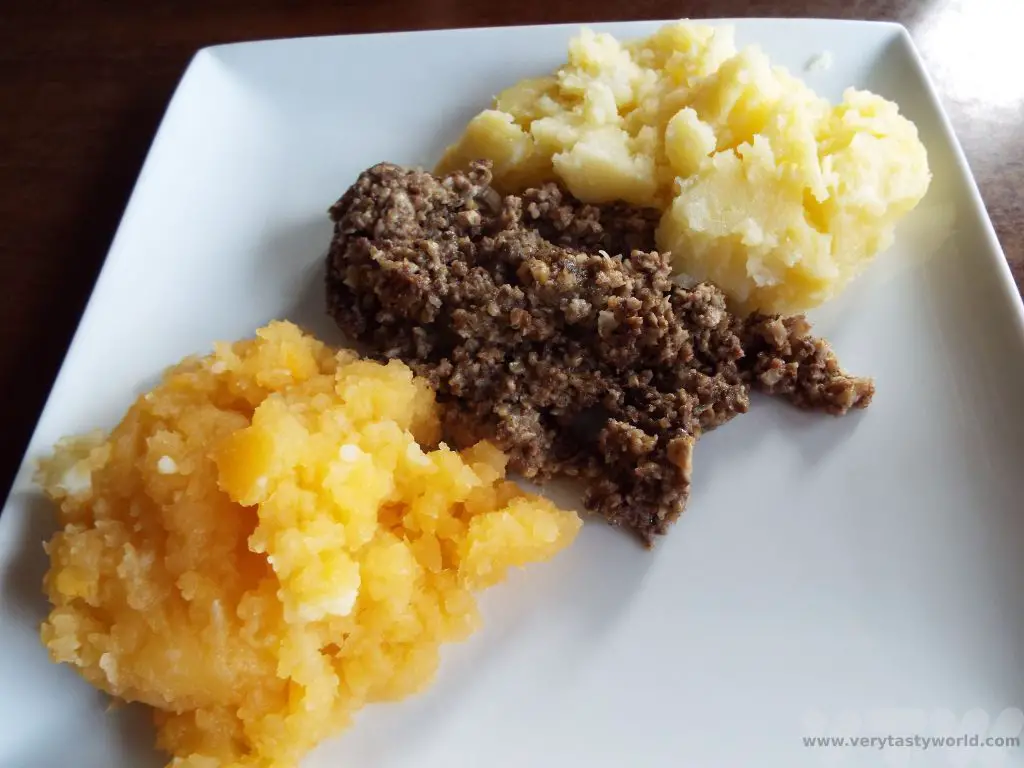
Poet Robert Burns wrote one of his best known poems ‘Address to a Haggis‘ in 1787, in which he proclaims his admiration for the “great chieftain o’ the puddin’ race.” It is traditional to eat haggis on Burns Night, the 25th January (the poet’s birthday), where the Burns Supper comprising haggis is consumed along with some good whisky. Burns’ poems are also recited. The tradition started a few years after Burns’ death when his friends set up a meeting to commemorate his life and works. There is a conventional order to proceedings including a ceremonial slicing of the haggis.
If you fancy making haggis, neeps and tatties, there is a recipe here.
It’s essential to enjoy the dish with a wee dram.
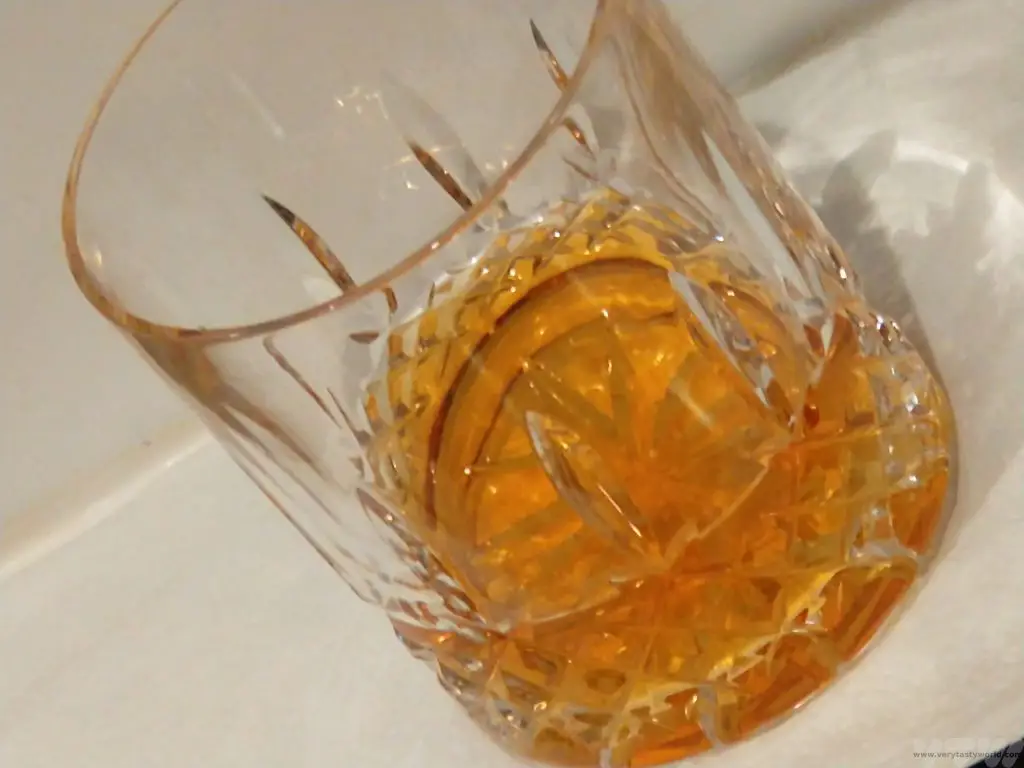
Related Posts You May Enjoy

RECIPE: Haggis, Neeps and Tatties
Haggis, neeps and tatties is Scotland’s national dish. Haggis doesn’t sound very inviting: it is comprised of the heart, lungs and liver of a sheep, all ground up together, mixed with oats and spices, and then boiled inside the stomach of a sheep. Yes, it is basically boiled offal. But one of the reasons haggis is a great dish as that it minimises waste by using all parts of the animal. It is surprisingly delicious.
Neeps and tatties are something of a mystery until you learn that they are the root vegetables turnips (actually swede) and potatoes. These are boiled and mashed and served alongside the haggis.
Vegetarian haggis is also widely available in Scotland and elsewhere, if you really don’t fancy boiled offal.
Haggis Neeps and Tatties Recipe
Ingredients
1 haggis
2-3 potatoes per person
1 swede
lots of butter
salt and pepper
Method
It is possible to make a haggis from scratch but it is far more convenient to buy one. A good butcher will be able to supply a quality haggis. They freeze very well and can also be cooked from frozen.
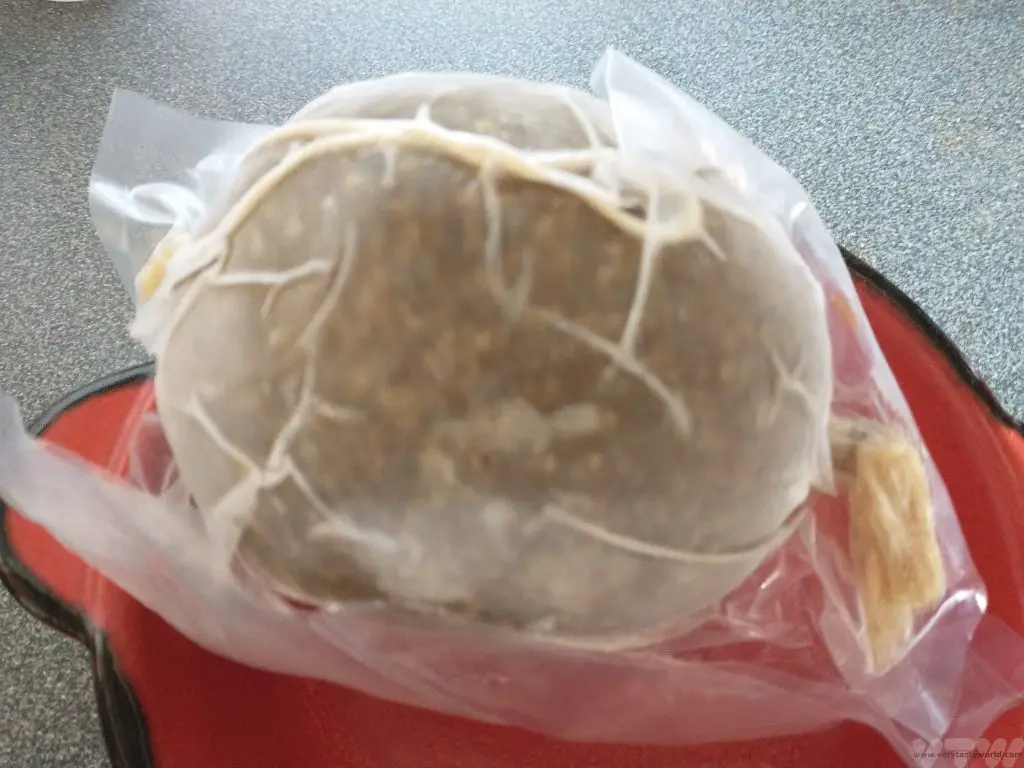
There are many ways to cook a haggis but the easiest is to boil. Remove the plastic wrapping but leave the skin intact and place into a pan of boiling water. Simmer gently – it needs to be cooked slowly to ensure that the skin doesn’t burst. Timing depends on the size of the haggis – a 1kg haggis should cook in just over an hour. Add about 20 minutes to the time if cooking from frozen.
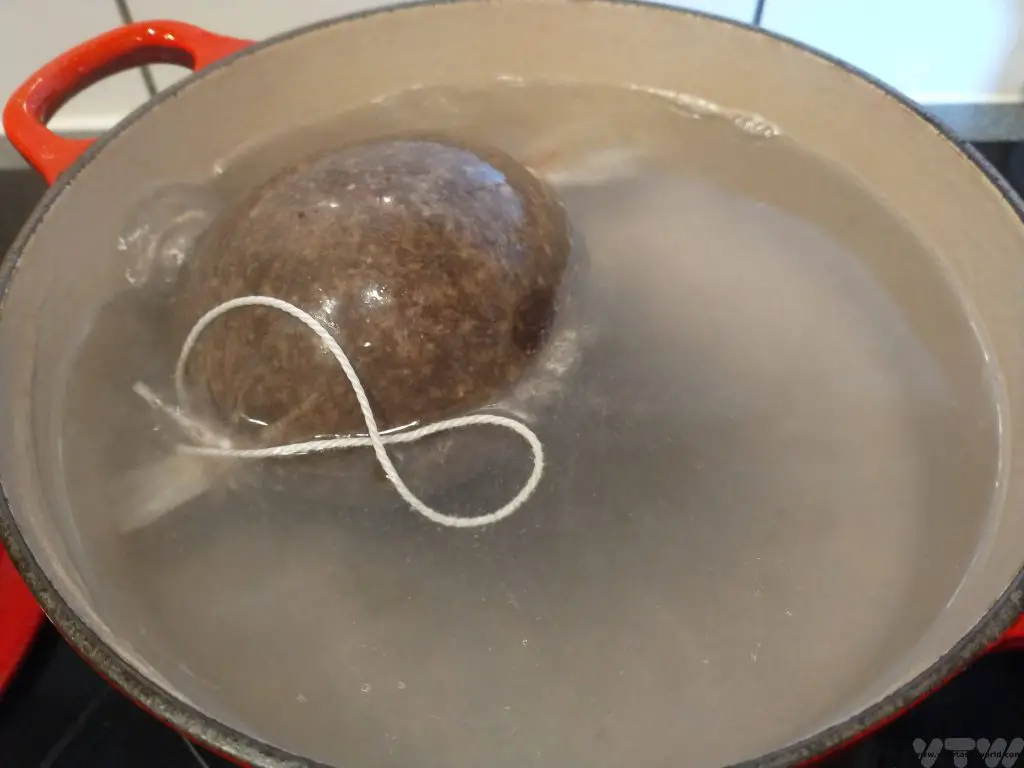
Separately, peel and dice the swede and then the potatoes. Boil until tender.
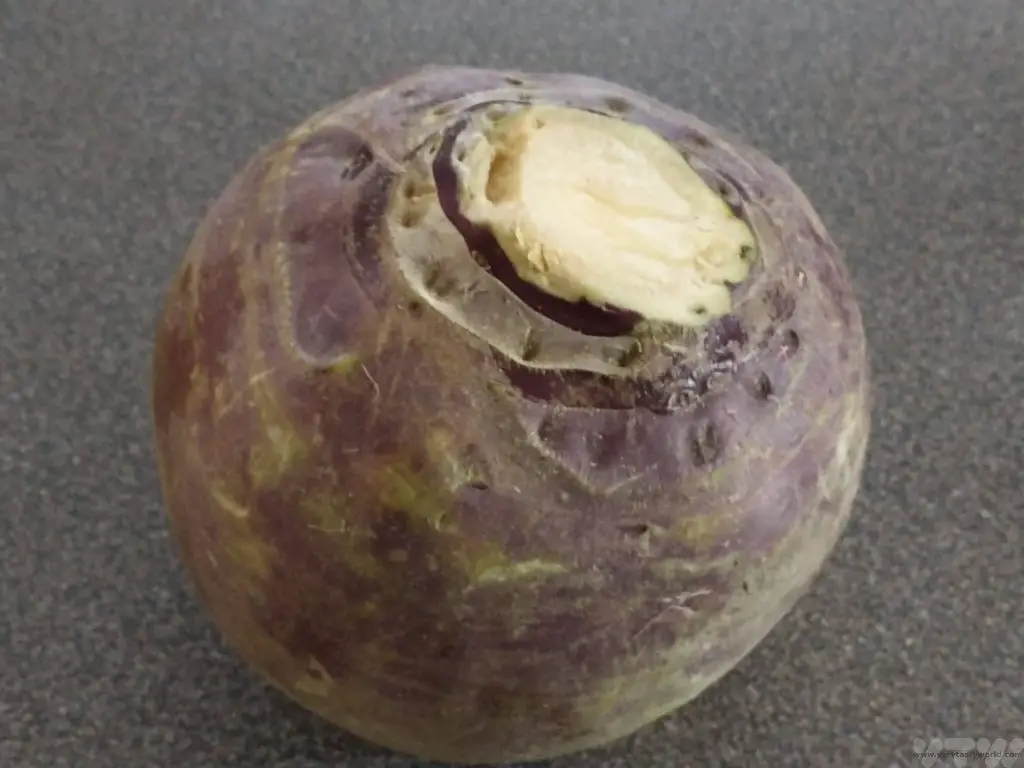
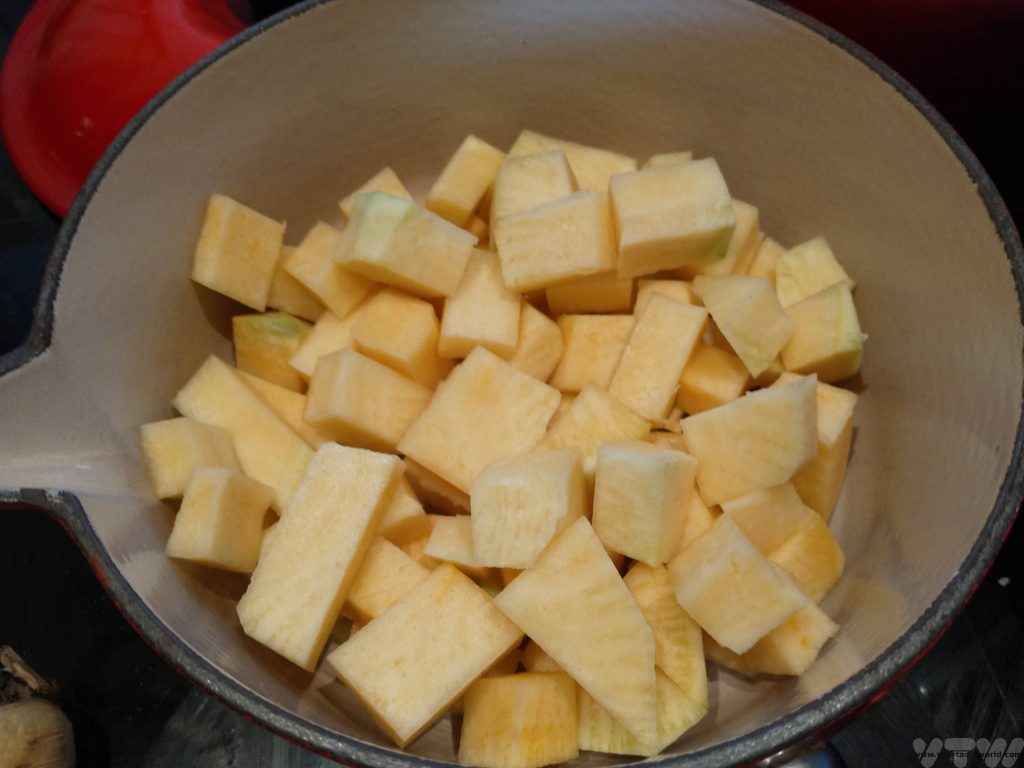
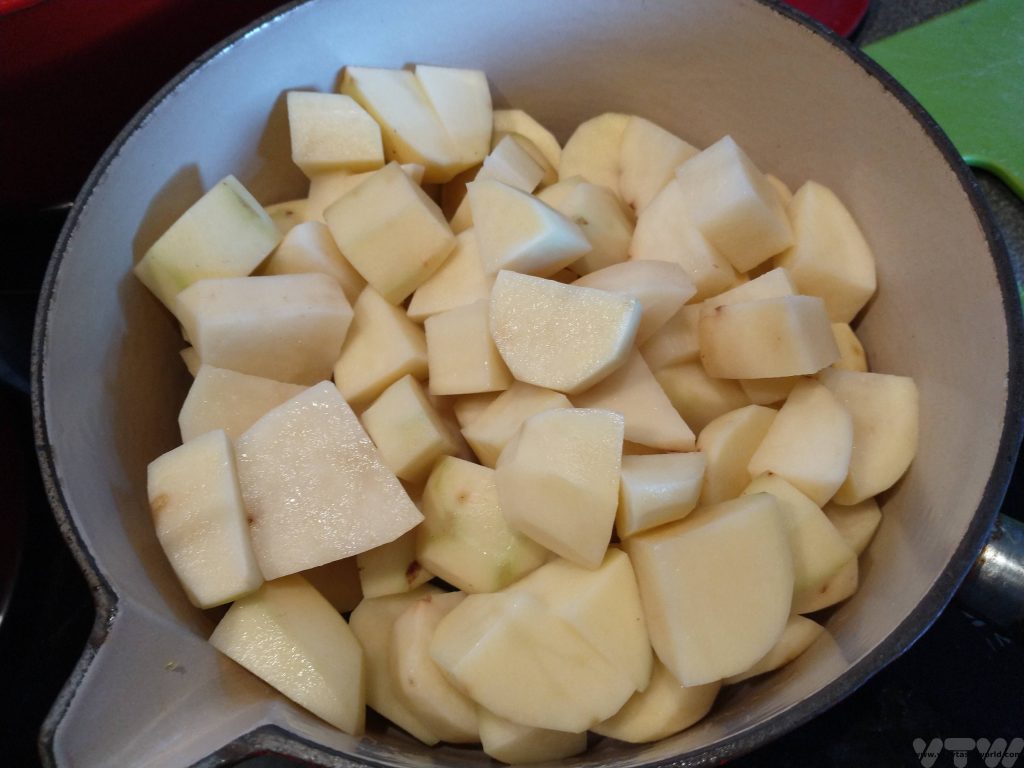
Separately, mash the swede and potatoes. Add loads of butter. There is an unwritten rule in cooking that the flavour of your mash is directly proportional to the amount of butter you add. Season to taste with salt and pepper.
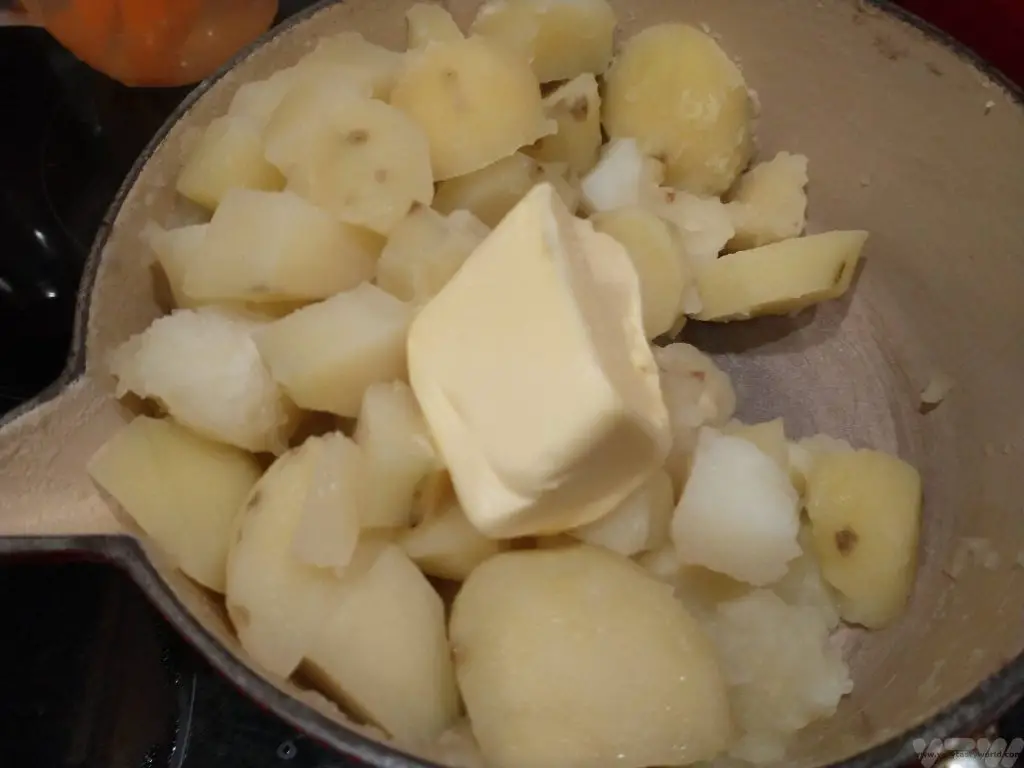
Remove the haggis from its casing – just slit along the length. Use a spoon to scoop out the meat.
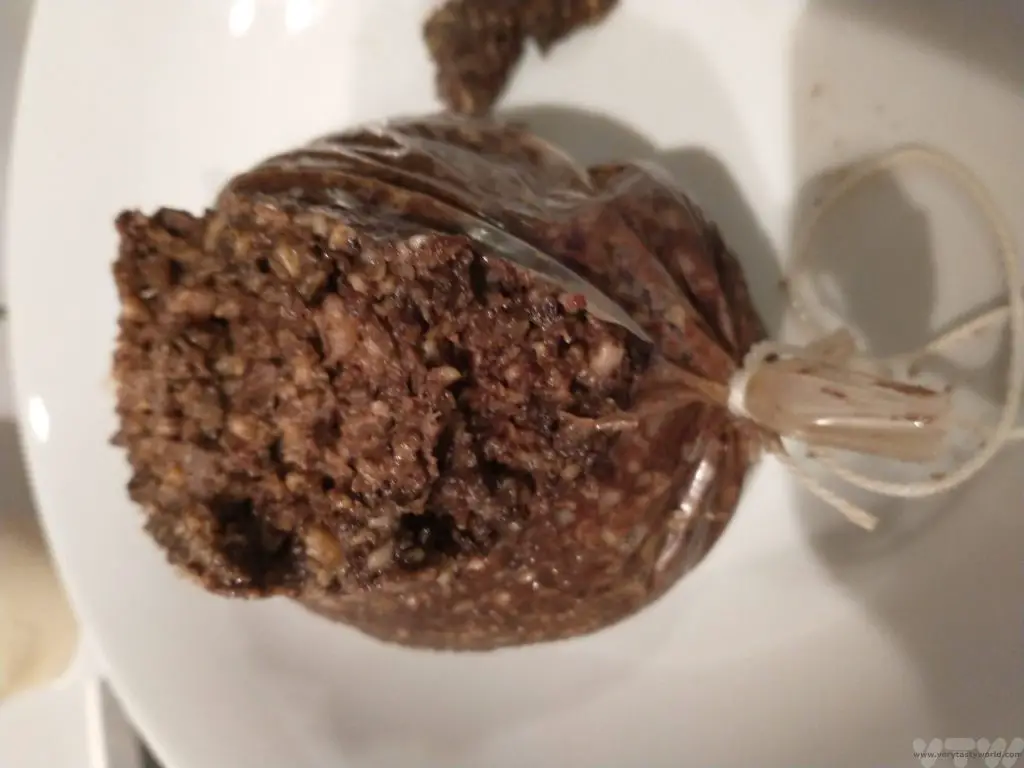
Then serve. It’s a very down-to-earth and honest dish, it doesn’t require any pretentious garnish. You could go all “Close Encounters” and shape the mashed potato into a mountain but your food would go cold if you did that. Slap it on a plate and enjoy…

…preferably with a wee dram (a shot of Scotch whisky), of course.


- Things To Do In Rovaniemi In Winter
- Avebury Stone Circle vs Stonehenge
- Five days in Copenhagen
- Is Sarajevo Worth Visiting?
- A Svalbard Holiday – Land of the Midday Moon
- Afternoon Tea in Coventry

- RECIPE Oyakodon Donburi
- Zero Waste Recipes Before Your Holiday
- RECIPE: Vegetable Biryani Tamil Nadu Style
- RECIPE: Vegan Wild Garlic Pesto
- Recipe: Venetian Pasta Sauce
- RECIPE: Biryani Raita Recipe
- RECIPE: How to Make Costa Rica’s Gallo Pinto
- Recipe: Japanese Simmered Pork Belly – Buta no Kakuni
- RECIPE: How to Make Umeboshi
Toasting Tradition in Georgia
Cheese and Toasting
There is a legend that when God was handing out land to the nations of the world, the Georgians were so busy feasting that they lost their place in the queue and there was no land left for them. But when they invited God to join the party, he enjoyed himself so much that he gave them the best bits of land that he had been saving for himself. Enjoying good food and wine is an important element of life in this part of the world and the local people have a wonderful toasting tradition in Georgia.

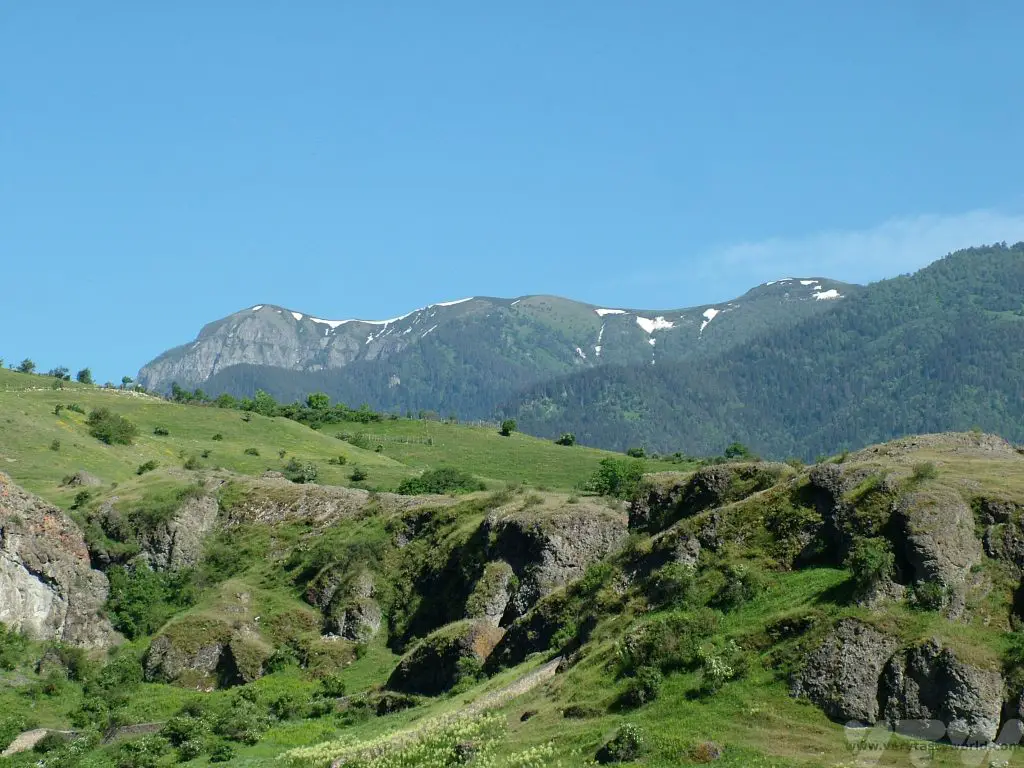
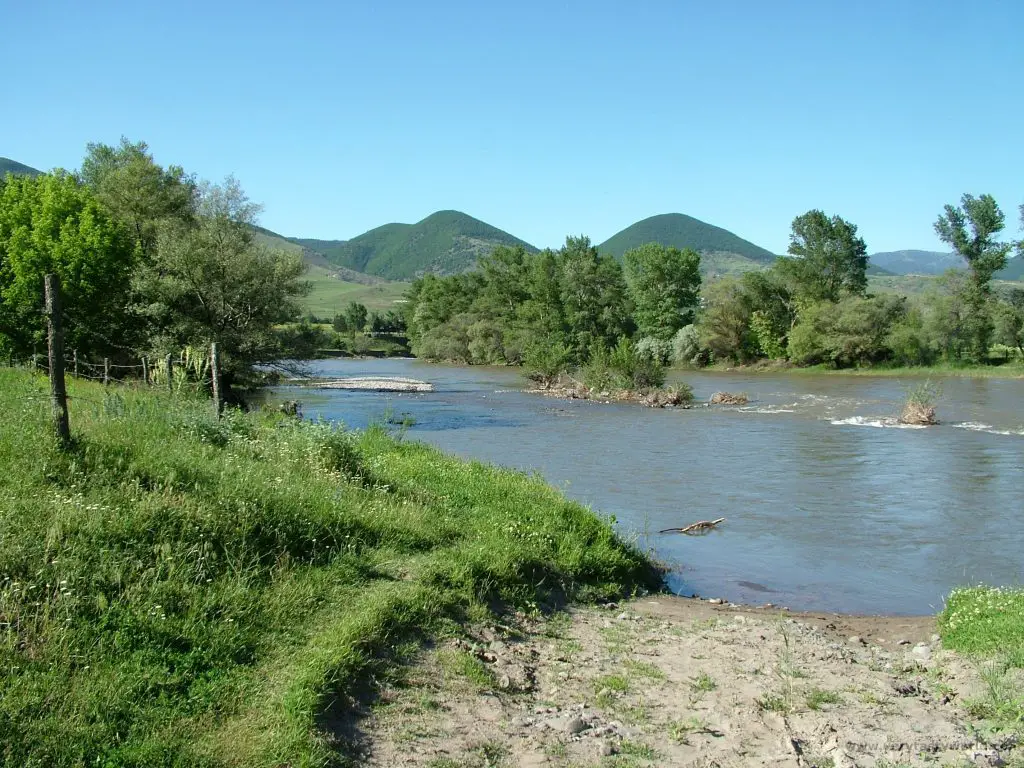
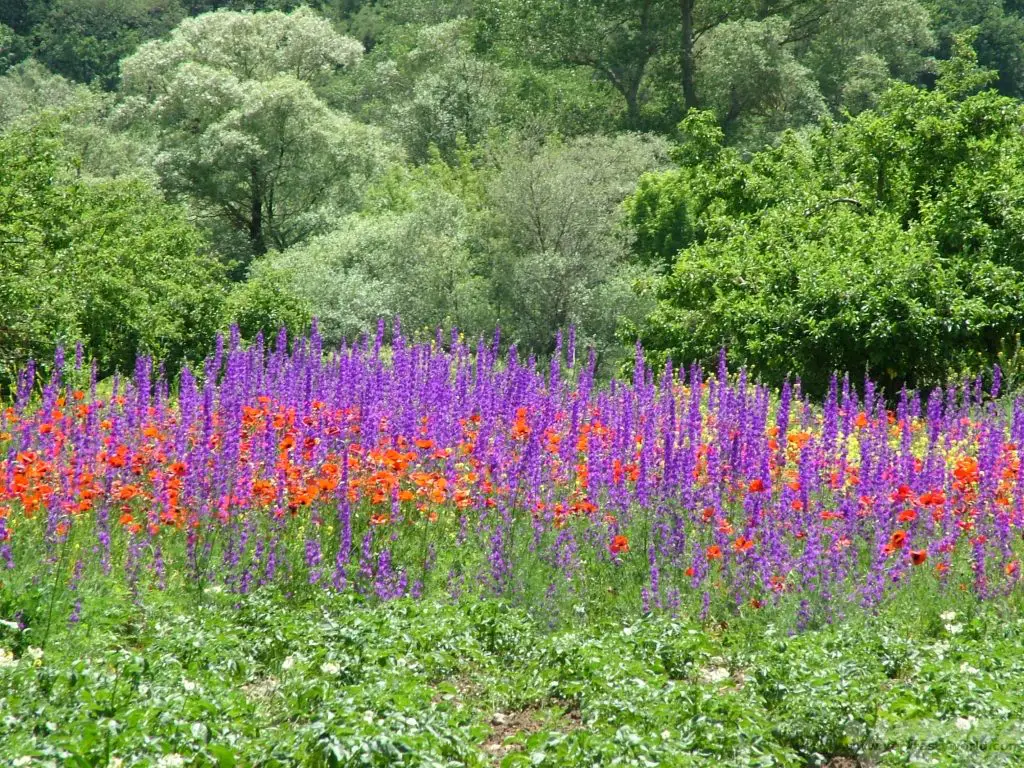
We visited a number of families, ostensibly to see how they produced wine or made cheese, but everywhere we stopped we were greeted by the most amazing hospitality and generosity. Meals would last several hours and involve large quantities of superb fresh food along with overflowing glasses of wine and chacha (grape vodka). Most houses we visited grew their own grapes and made their own wine. Many had a still.
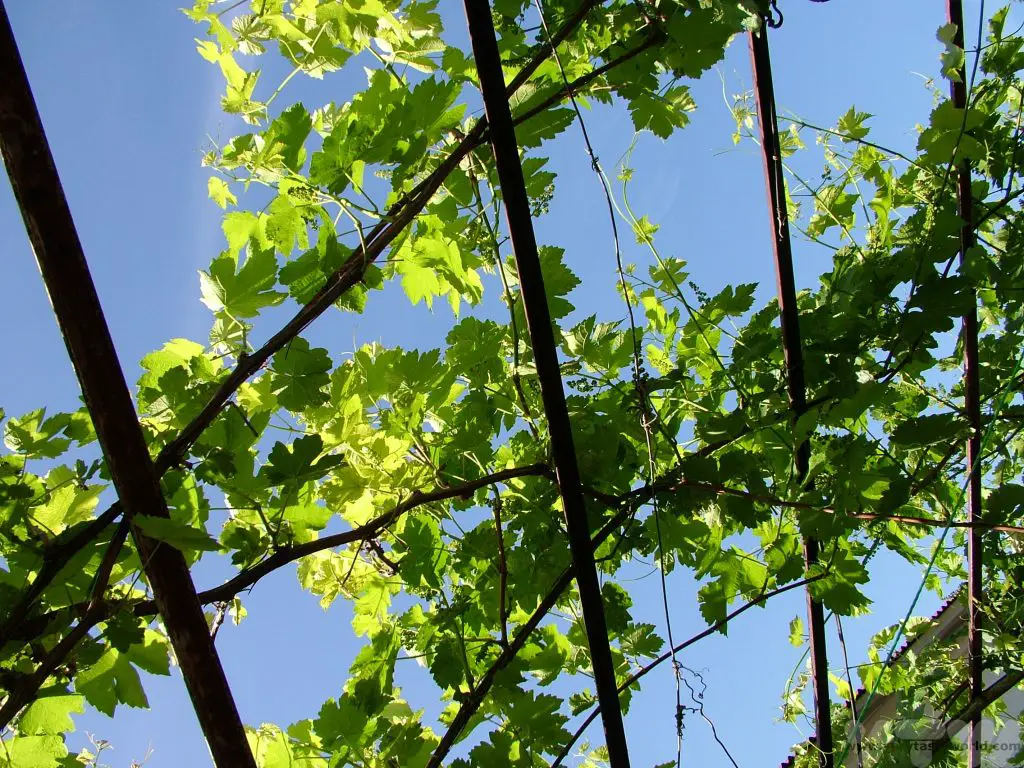
Toasting is a tradition in Georgia. You don’t tend to drink at your own pace, but at the behest of a toastmaster (tamada). A merikipe is on hand to make sure that glasses are always full and the wine never seems to stop flowing. Georgians toast their enemies with beer (we had a hilarious enemy-toasting session with our guide one night) – it is wine and chacha that are appropriate for feasting.
We didn’t go to a formal grand feast (supra), but had many, many meals at guesthouses and family homes and we followed the toasting tradition each time. Meals are designed to last the evening – they comprise several scrummy dishes laid out on the table. Everyone just helps themselves and offers food to their dining companions. And, of course, every meal included a ubiquitous, delicious and calorie-loaded cheese pie (khachapuri).
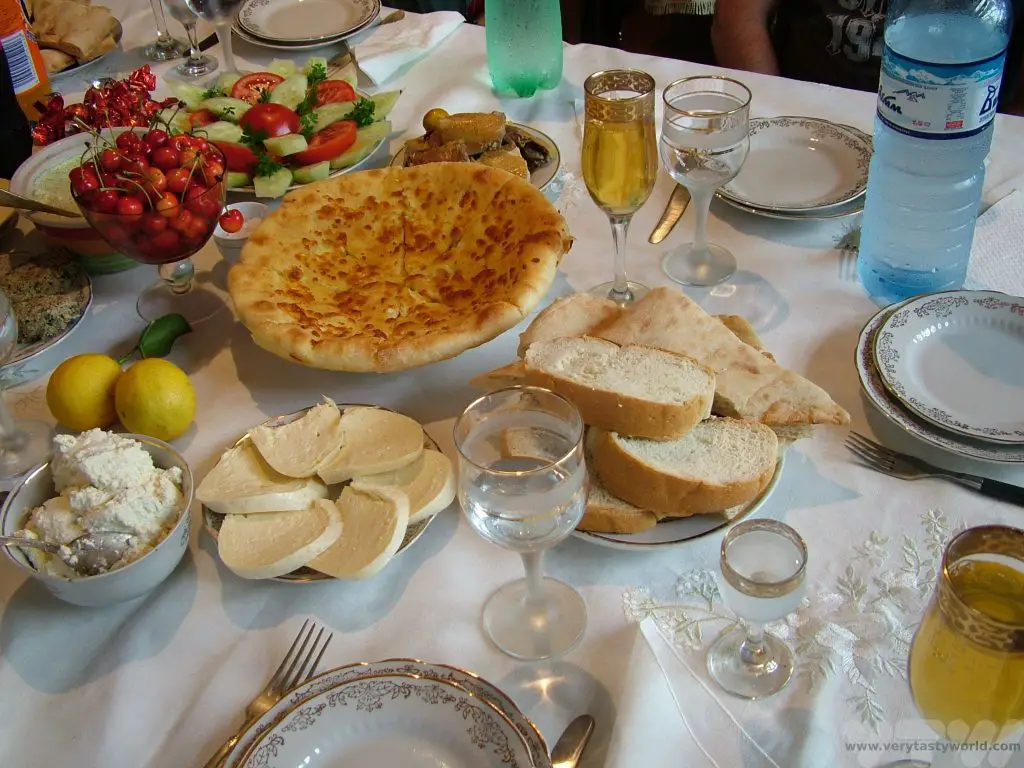
Toasting Tradition in Georgia – Etiquette
At regular intervals throughout the evening the tamada proposes a toast. Everyone adds their wishes and much wine/chacha is consumed. If you are toasted, it’s appropriate to thank everyone for their good wishes and later ask the tamada if it is okay to reciprocate with a toast of your own. One guesthouse supplied us with a very large jug of strong homemade red wine, made from the local Sapaveri grape, which was utterly splendid and eminently drinkable, to accompany the enormous evening meal they had provided.
We ate with the family. Our driver was both tamada and merikipe and led the toasting throughout the evening. (At the end of the day, naturally, when no further driving was required.) On finishing the jug our excellent merikipe asked if we wanted more wine. We said we’d join him in a tipple but only if he was partaking, not realising that he would return with another enormous jug. Gulp.
You can toast anything and everything. We were toasted several times as ‘easy guests’ (people who were thoroughly enjoying the trip, didn’t make a fuss, and were always on time) as well as ‘guests that didn’t go to bed at 9pm but were happy to stay up late feasting and enjoying the hospitality of our hosts.’ We reciprocated by toasting our hosts, Georgia, Georgian hospitality, wine, food, cheese pies, family, friends, finding Mr Right (for our guide), young people, old people, men, women, happiness, health, friendship between our countries, anything. We easily knocked back the second jug. Amazingly we weren’t hungover the following morning. Just as well as we were due to visit three different vineyards for wine tasting – hair of the dog and all that. We did rather stagger round the Kakheti region that day.
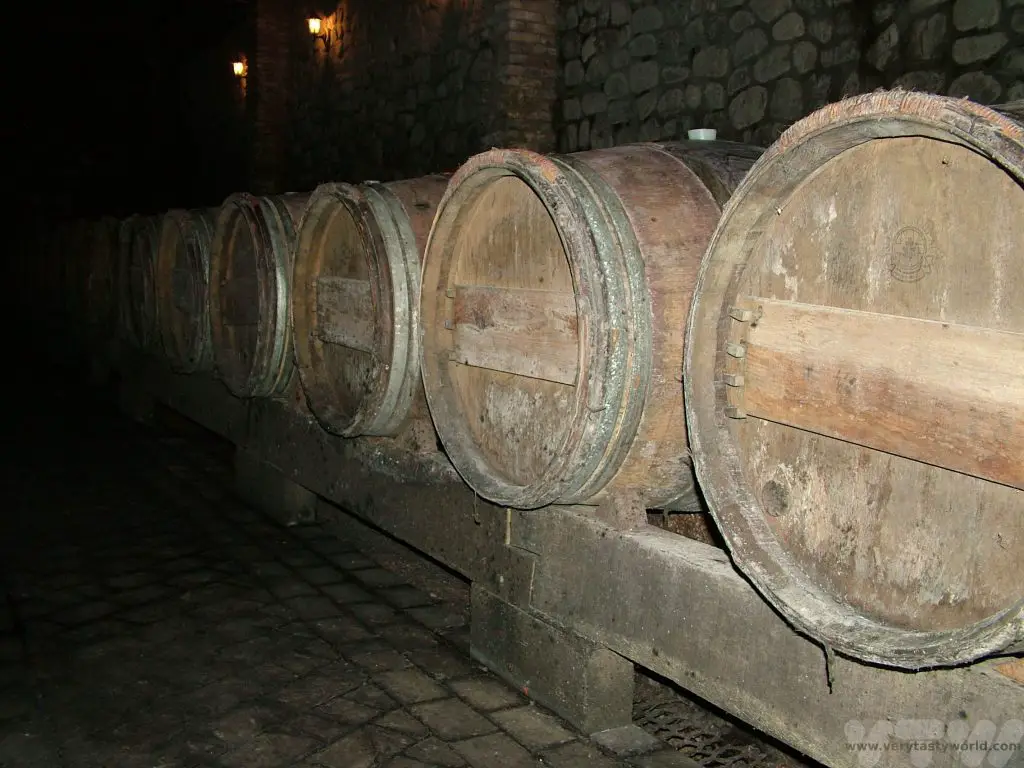
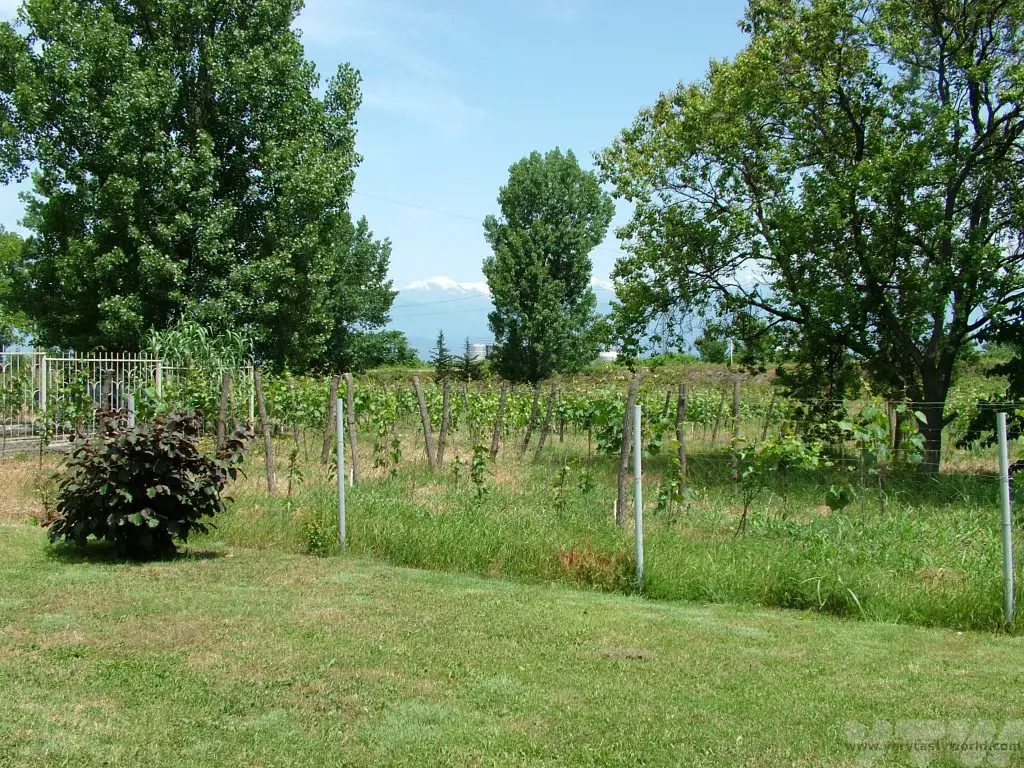
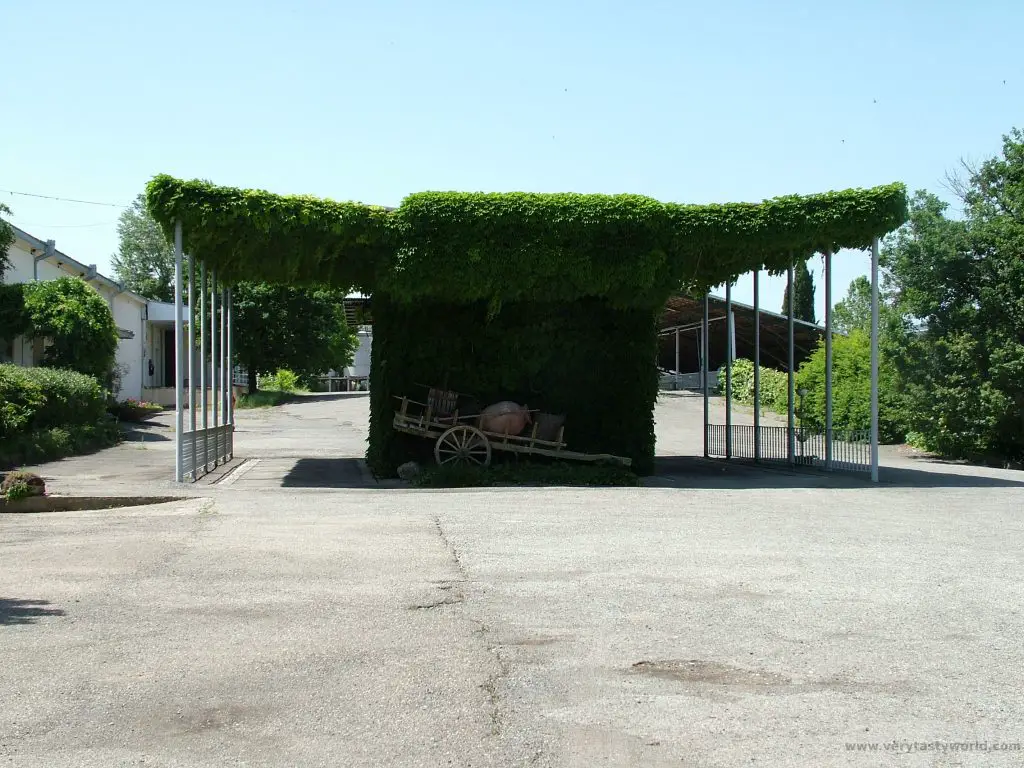
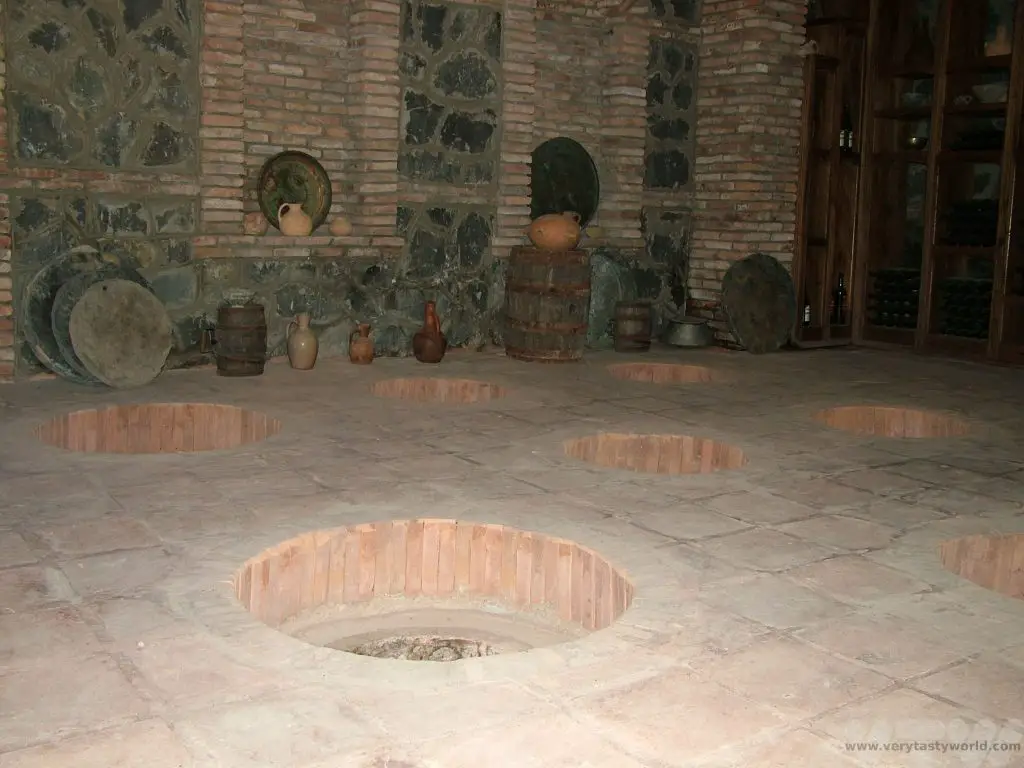
What we didn’t realise until the last day was that we had been doing the toasting all wrong. We’d been having a sip/swig from the glass per toast which seemed to us to be the best way to regulate the drinking (we’d copied our hosts, who had the same idea). Apparently the correct toasting tradition in Georgia meant that were supposed to drain the wine/chacha glass each time. Oops!
Related Posts You May Enjoy

Staying With Nomads In The Gobi Desert in Mongolia
A Life In The Day
It was 7am and sunlight was just beginning to filter through the plastic apex at the top of the ger in the Gobi Desert in Mongolia. Outside, the temperature was -15⁰ C. Inside it wasn’t much warmer, the temperature having dropped dramatically since the stove had gone out at around midnight. We were lying in beds, each on the opposite side of the ger from the other, inside sleeping bags and covered with blankets and duvets, just our noses poking out from the abundance of bedding. We hadn’t had a shower for three days. The outside toilet would involve a 50m walk in sub-zero temperatures from the ger to a hole in the ground. Mitch was lying in bed thinking, “What have I done?” Colin was lying in bed thinking, “What has Mitch done?”
This was a trip that was going to be a challenge.
There are some 165,000 nomadic families living and working in Mongolia and they still employ largely traditional farming methods, albeit using modern technology. Sheep, goats, horses, cows and yaks are the most common livestock kept and they are sent out to pasture every day. The nomads may need to relocate their herds three or four times a year and move to pastures new which means that they pack up their housing and all their possessions.
We had travelled from Ulaan Baatar across the vast Mongolian countryside in a Furgon van along roads where tiny Brandt voles would scuttle across from one side to the other and vultures circled in the sky scanning for prey. There were no road signs. Our driver just knew when to leave the road and head across the sparse desert landscape to our destination.
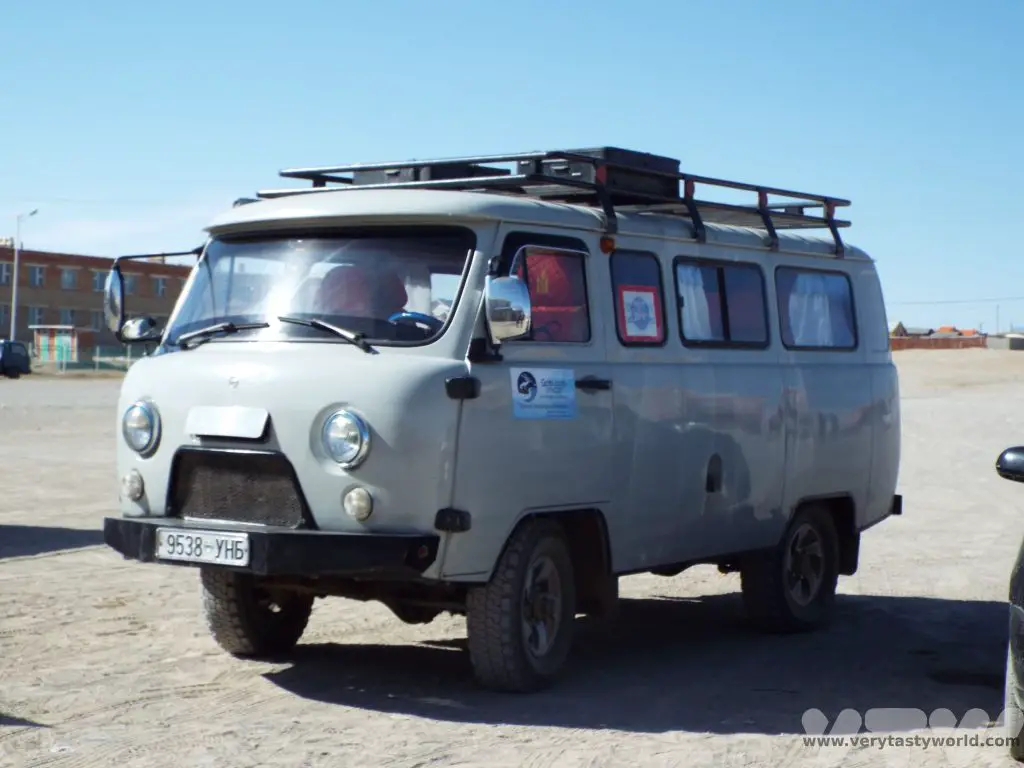
The previous day we had visited the town of Erdenedalai in the Gobi Desert to meet the singing weatherman. The weatherman monitors the location of all the nomadic families in the area and they communicate by radio to warn each other of potentially adverse weather conditions. The map shows the contact details for all the families in the area. The weatherman also has a range of guitars and gave us an impromptu concert.
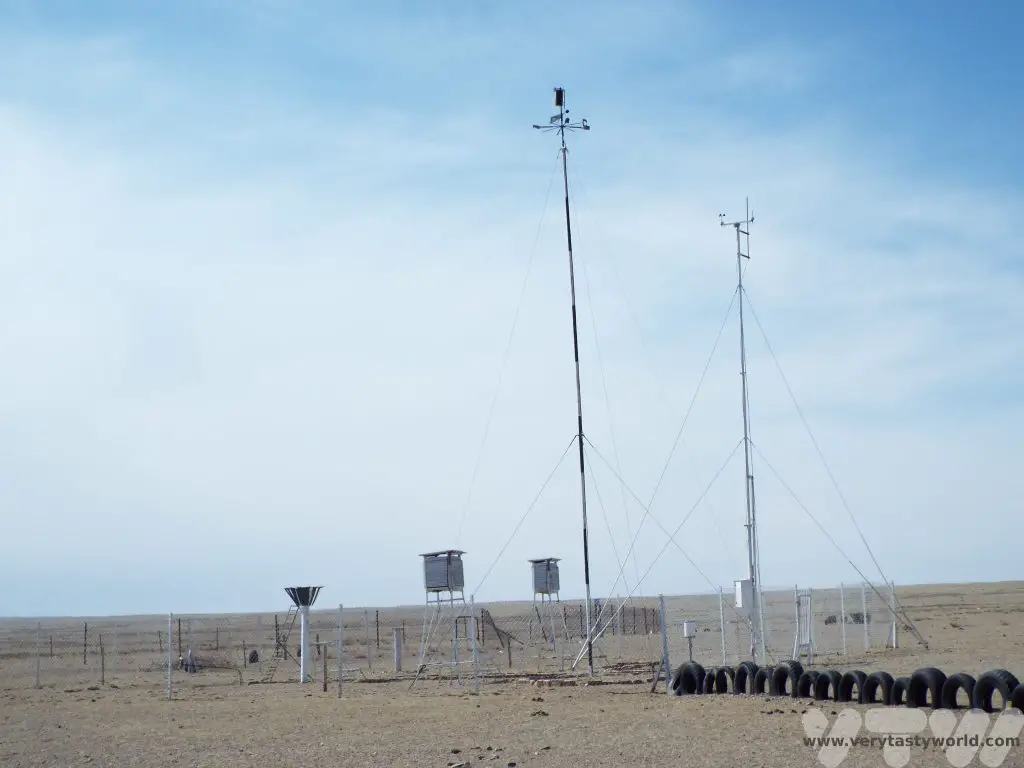
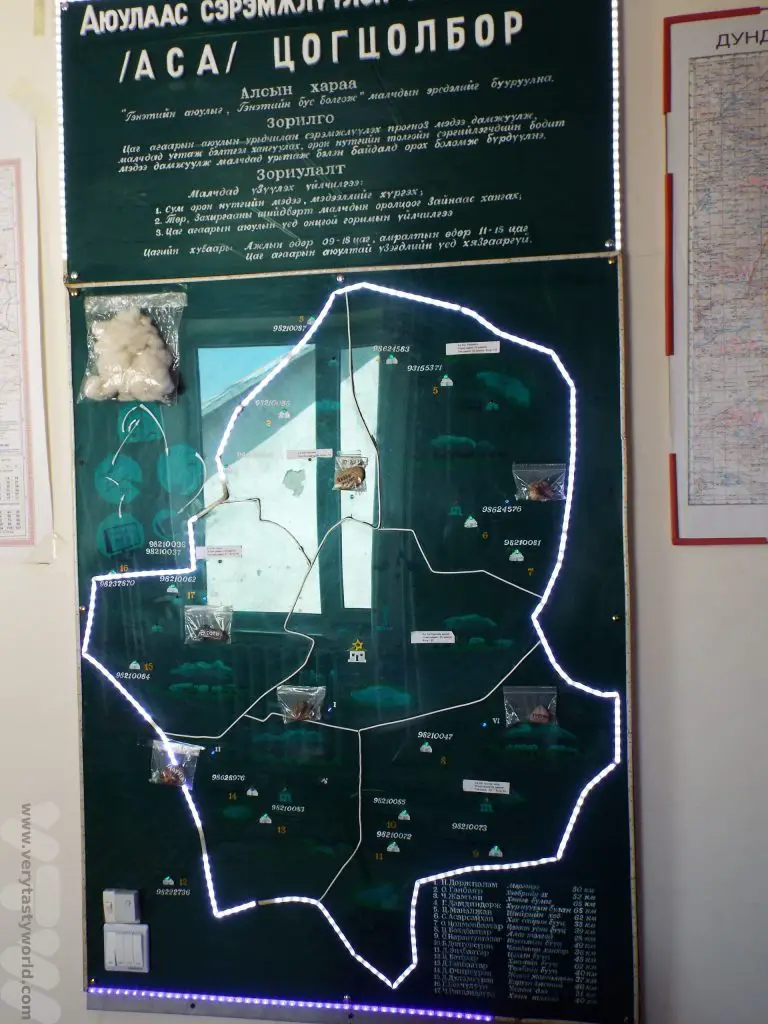
We were visiting Nergui and family who live in the Erdenedalai area, in the middle Gobi Desert in Mongolia. They kept cows, sheep and goats. The wooden pens for the animals are a permanent feature and the family move between different grazing locations several times a year. The gers are constructed alongside the animal pens. They can be taken down and put up in just a few hours – a really clever design.
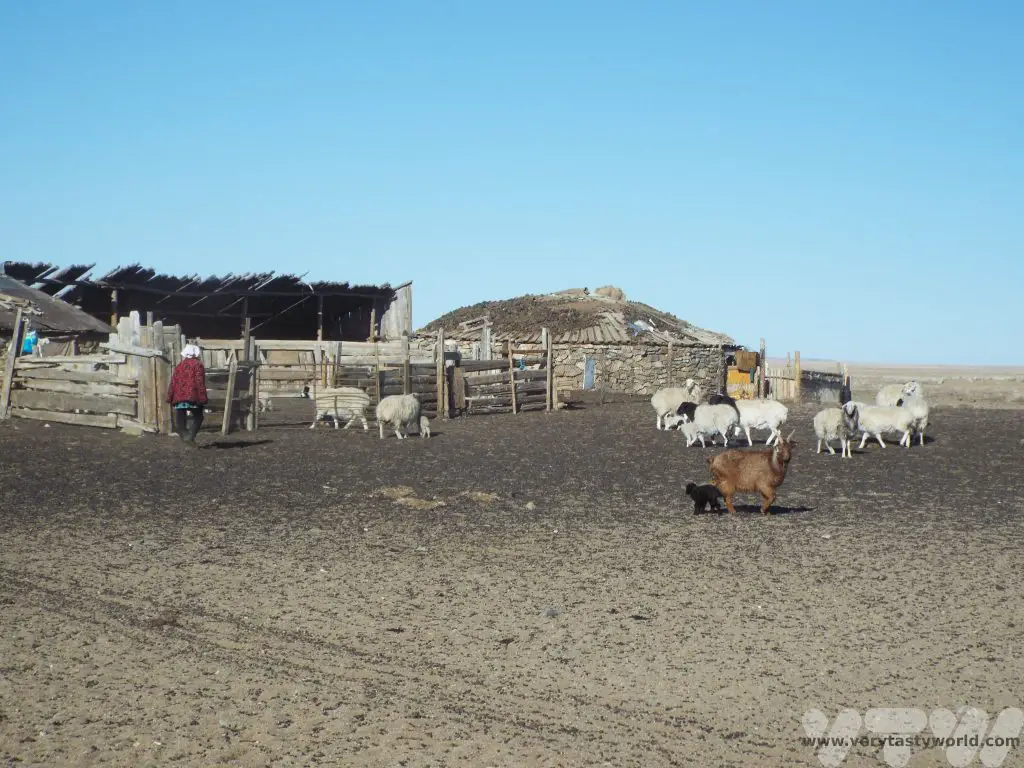
Our hosts had kindly given up one of their gers so that we could stay in their home. Just after 7am, they came in to start the fire. After a quick breakfast we offered to help with the family’s chores. First of all, the sheep and goats needed to go out to pasture. We were visiting in early springtime and many lambs and kids had been born over the previous few weeks. The youngsters were too young to go out so our job was to separate them out and put them into a pen – the nursery – for the day. (Don’t worry, they are reunited with their mums at the end of the day.) Lambs and kids are unbelievably lively little things and particularly good at evading visitors so catching them used a lot of energy! The temperature had risen to a balmy zero so we were toasty warm after all that chasing.
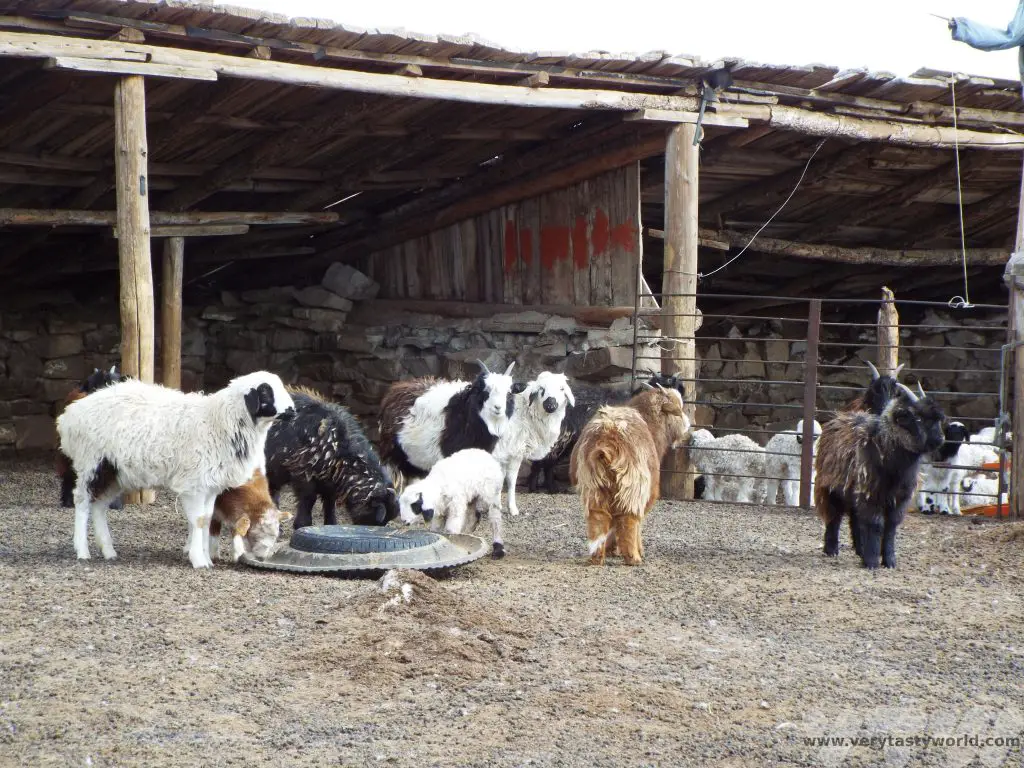
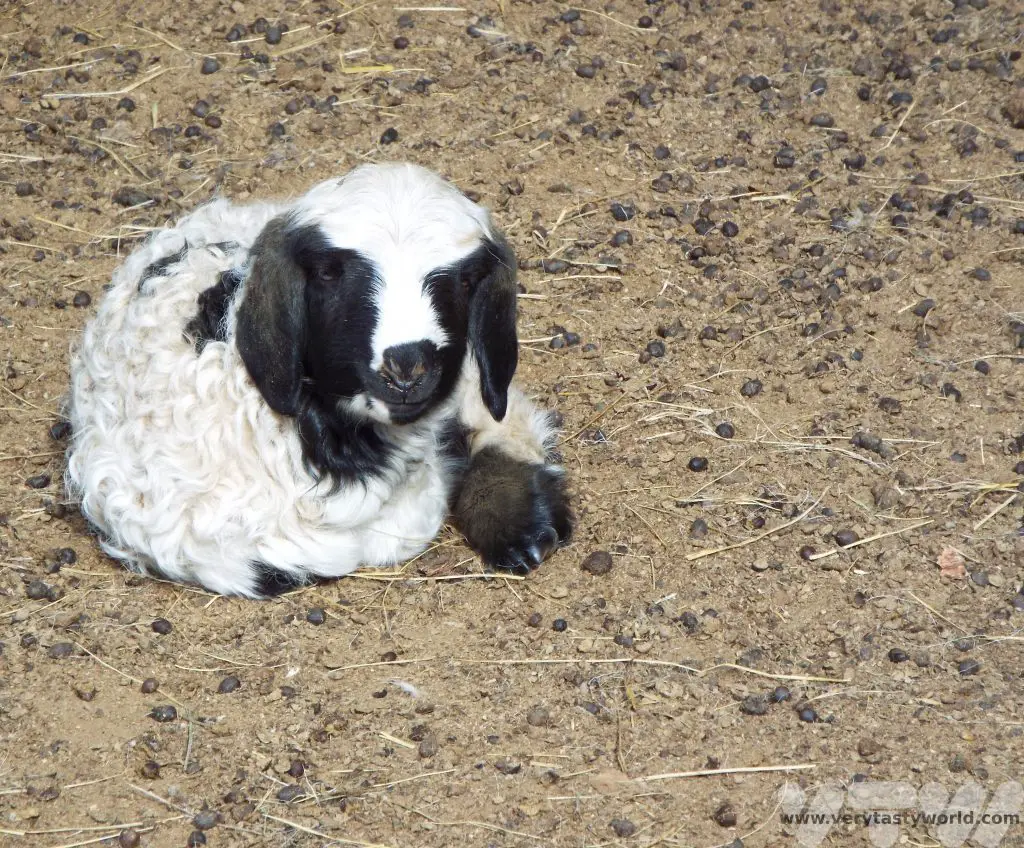

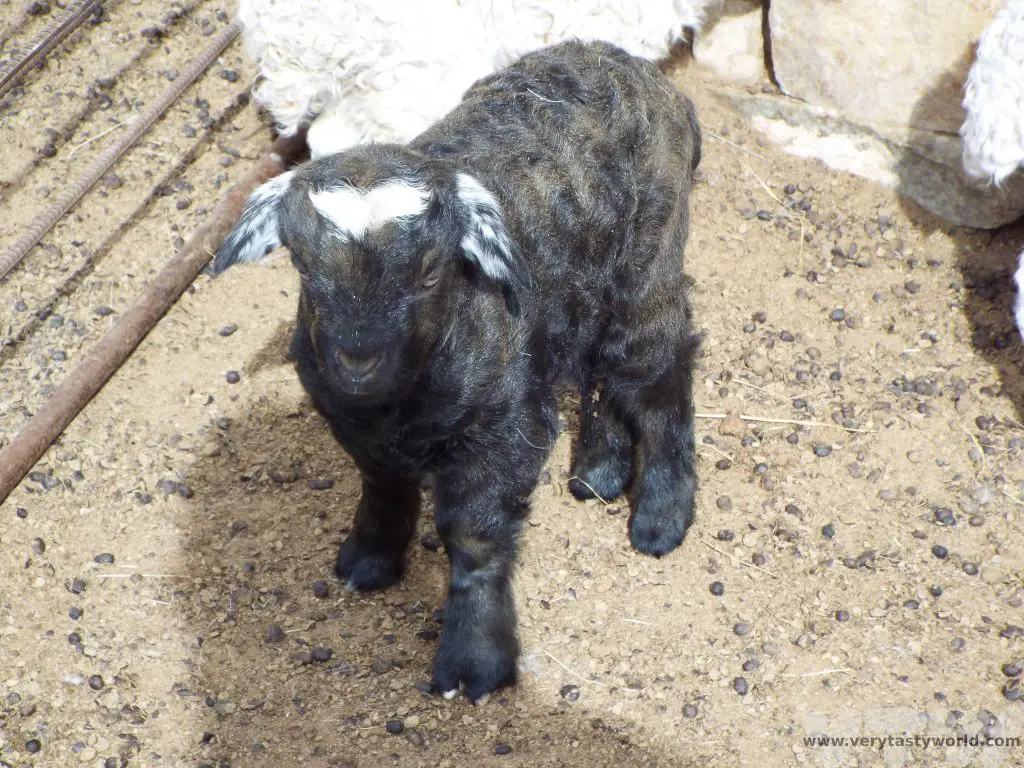
Once the lambs had been separated the older members of the herd were sent out to pasture. They were left to roam together and would be brought back via quad bike at the end of the day.
Then it was time to clean out the pens. We needed to rake through the wool and hairs amidst quite a significant amount of poo and gather it up.
Then we sent the teenagers out to pasture.
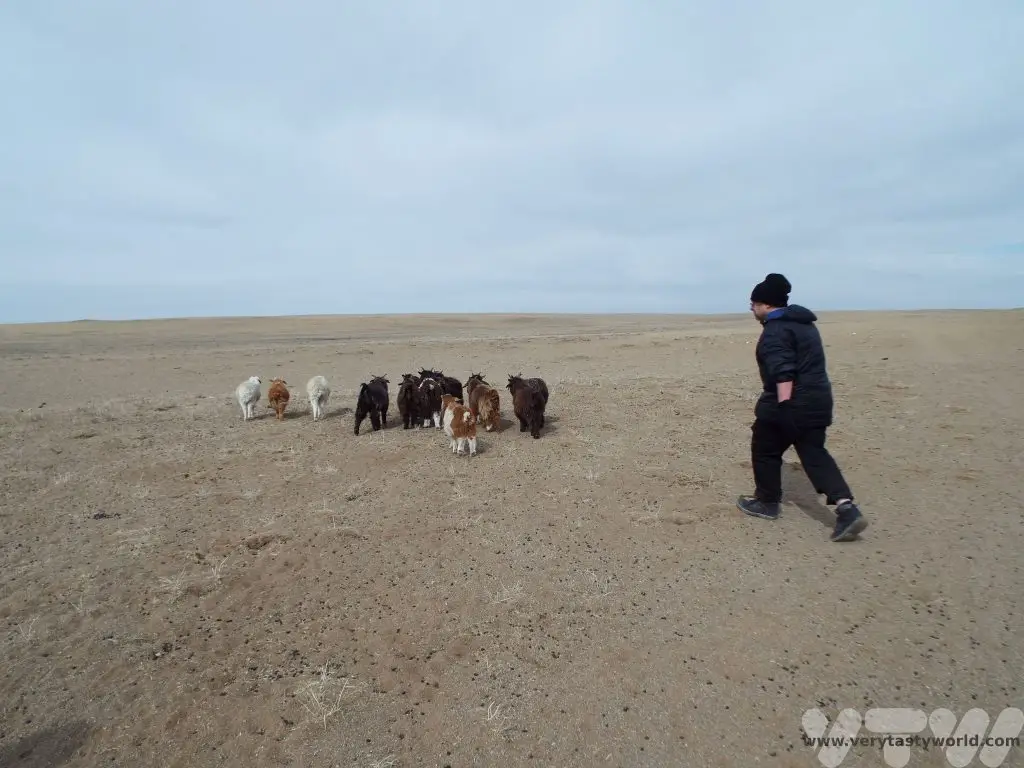
Next job was to water the cows. We drove to the nearest well which was several kilometres away. In the Gobi Desert there are precious few roads and we were constantly amazed at how the local people knew how to navigate across vast areas of desert and still find their way to the destination. The cows also have this in-built navigational ability as they were already waiting for us.
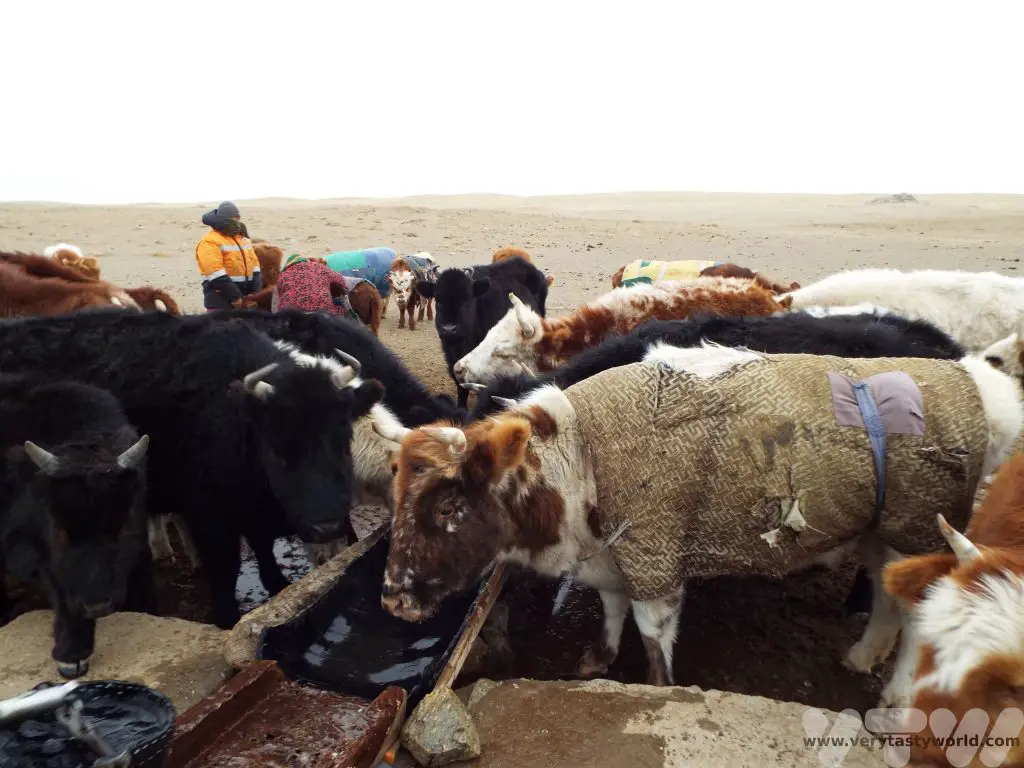
The sides of the well were frozen but the water was fine. It was a manual process to draw the water using a bucket.
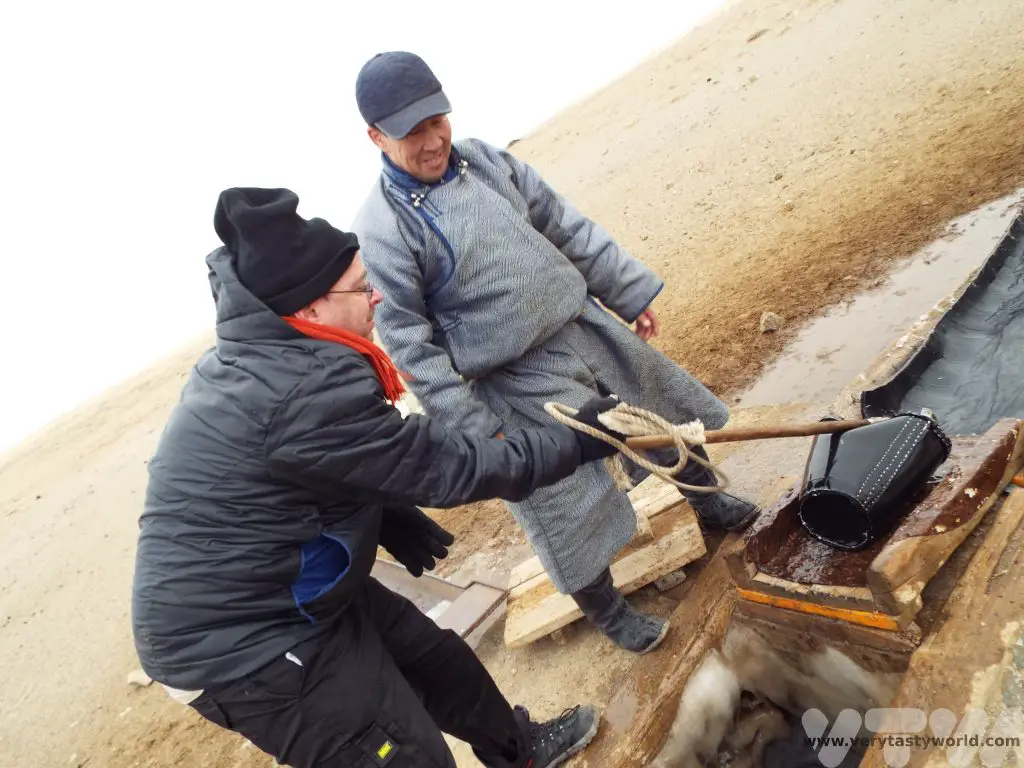
The water is pure and can be consumed without filtration. As the ger didn’t have running water we collected some for ourselves as well.
On our return to the ger camp, we needed to collect dung for the stove. The family have a dung storage area, located away from the main ger camp where the animal poo is collected and dried out. The family have a lot of animals which produce a lot of dung.
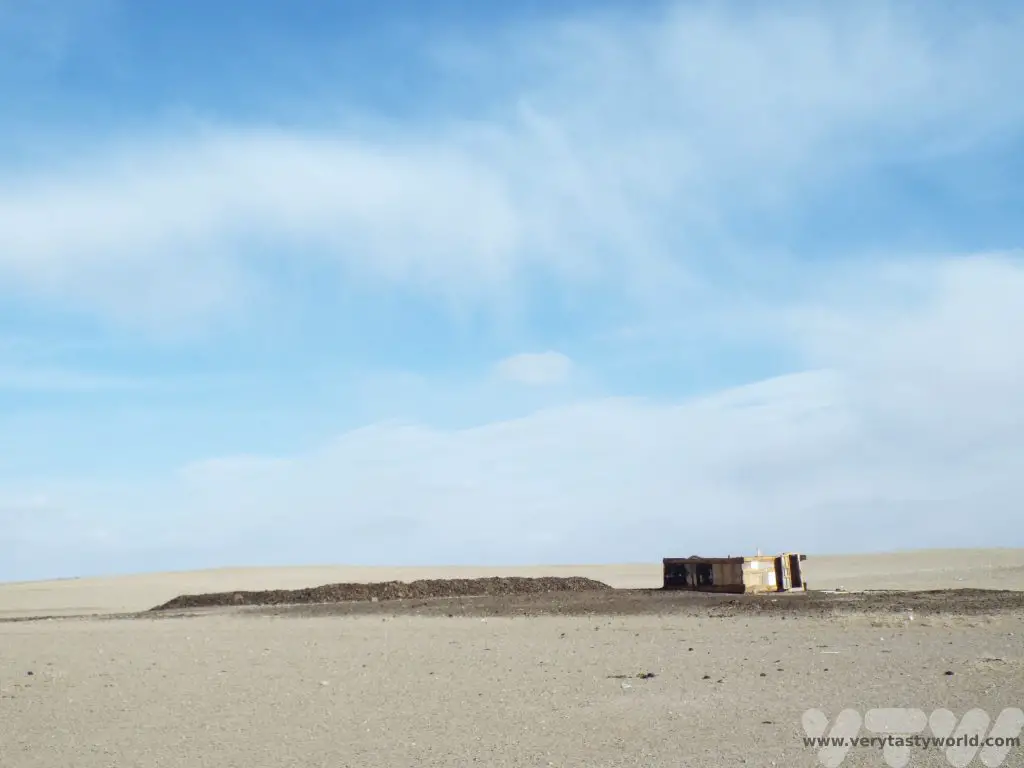
Cooking Dinner In The Gobi Desert In Mongolia
Then it was time to make dinner so we headed back to the ger. The stove is really adaptable and each are pretty much identical in terms of size and construction. Family kitchens will have various additional parts – a deep stewing pot or hob – which are interchangeable and offer a variety of cooking methods.
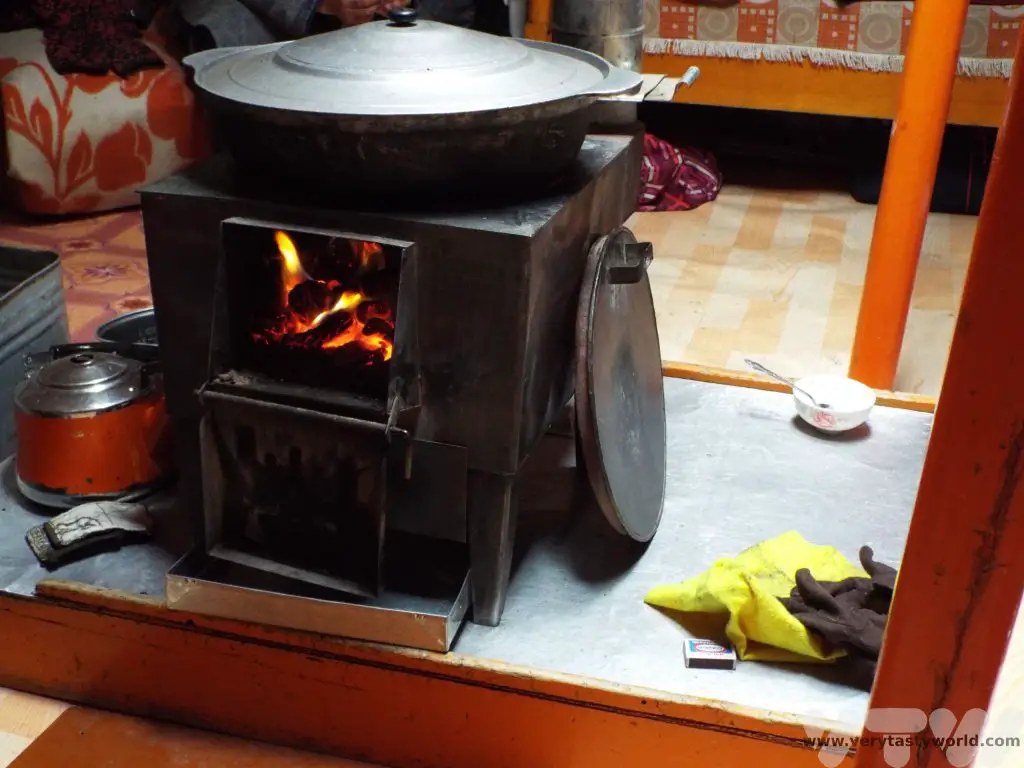
Tsuivan is a rustic dish, simple to make but it is delicious and filling. It comprises Mongolian noodles, vegetables and meat. First of all we set about making the noodles.
We made a dough using plain flour and water, kneading it until it had a soft, pliable texture and then let it rest for a few minutes.
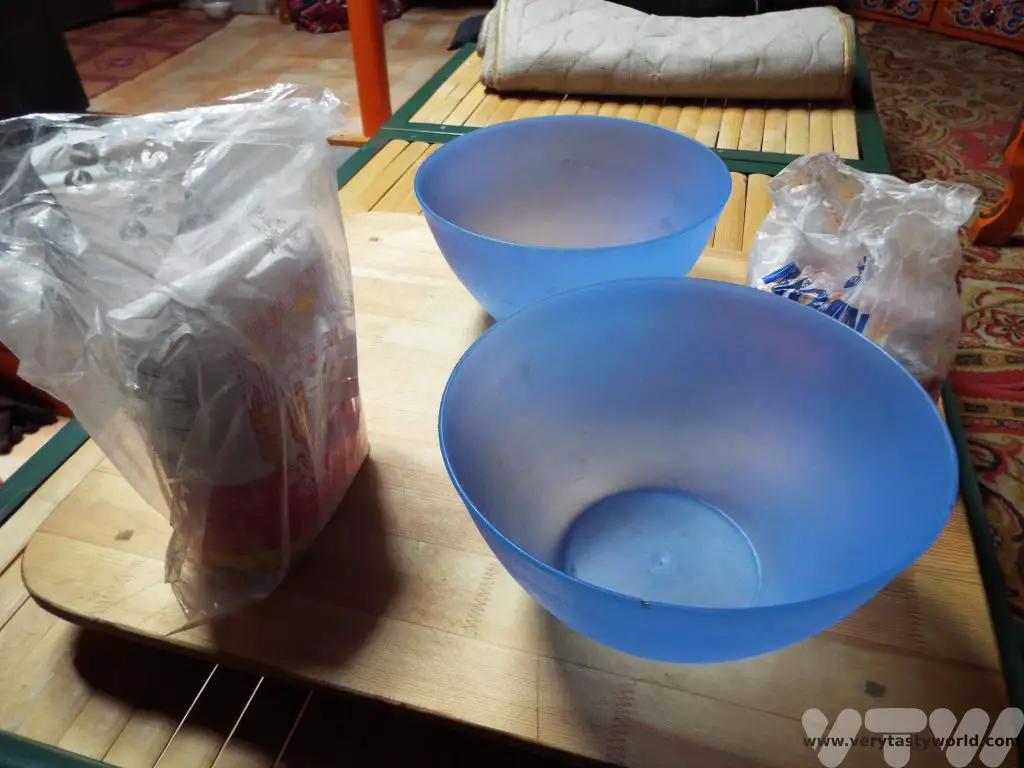
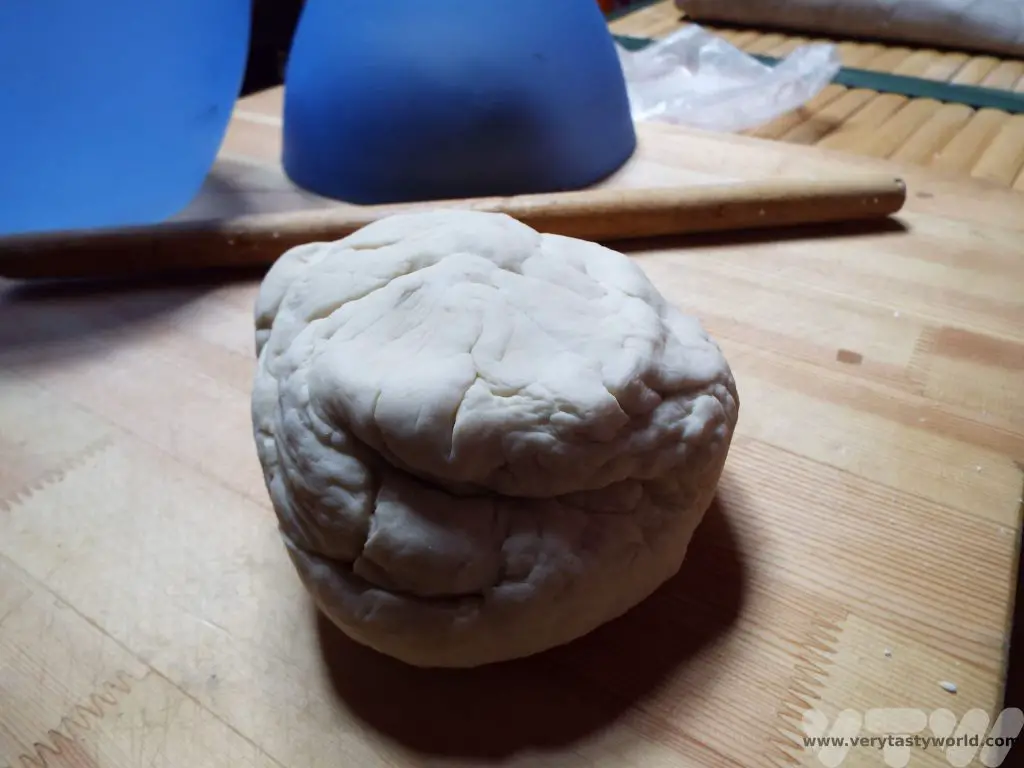
We then took a golf ball sized ball of dough and rolled it out very thinly, repeating the process until all the dough had been rolled into thin discs. The shape didn’t matter but we did try to make them as thin as possible using a rolling pin.
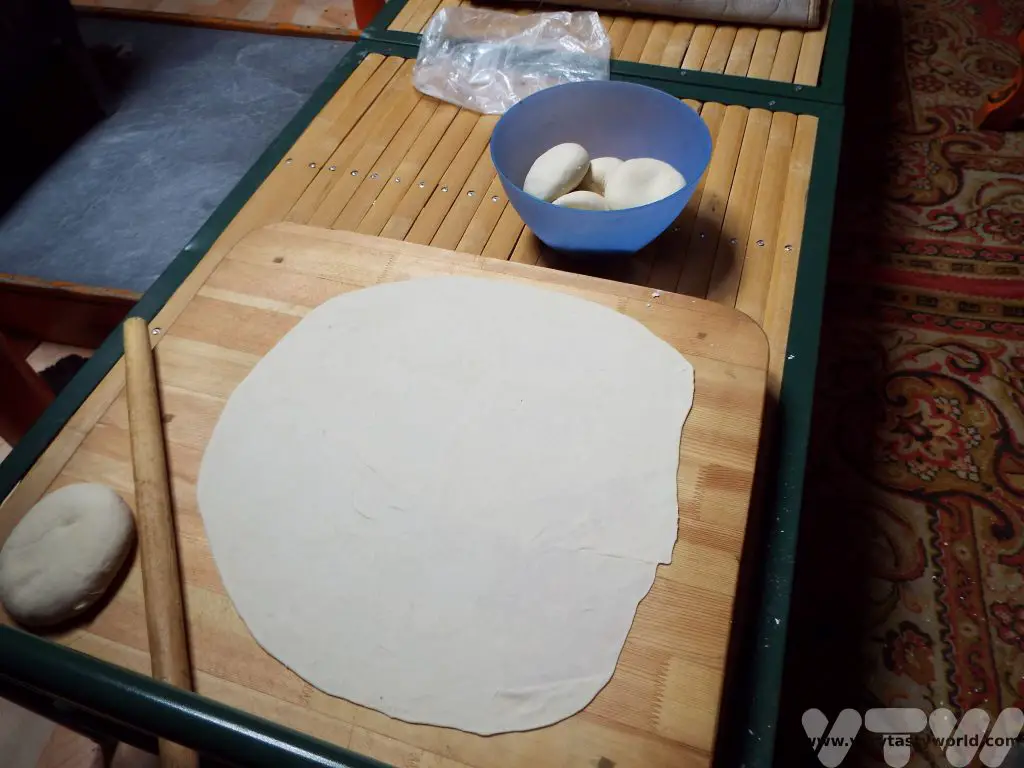
The noodles-in-waiting then need to be cooked briefly. They grill on the hob of the stove until lightly toasted – just for a few minutes, then they are turned over and the other side grilled.
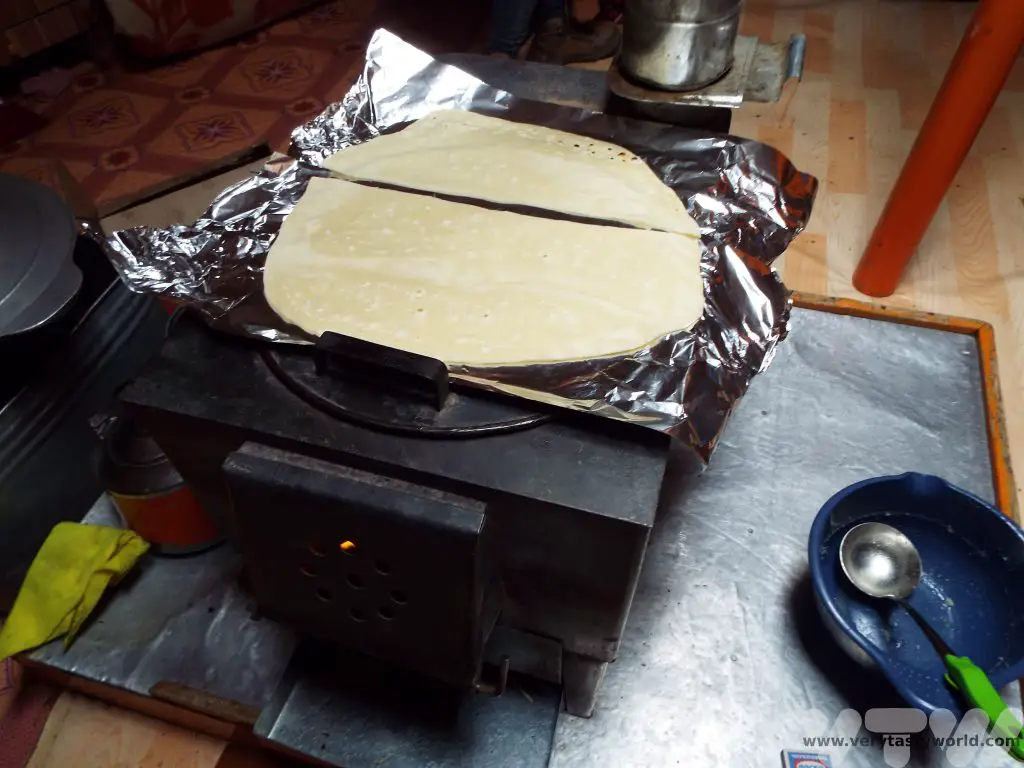
In the meantime we prepared some mutton and vegetables – potatoes, carrots and onions – by chopping into chunks. The stove was so versatile that the same heat source can be used as a pot or a griddle. The hob of the stove was then switched for the cooking pot – which fits over the fire perfectly – and the meat browned and vegetables added to fry in the meat juices.
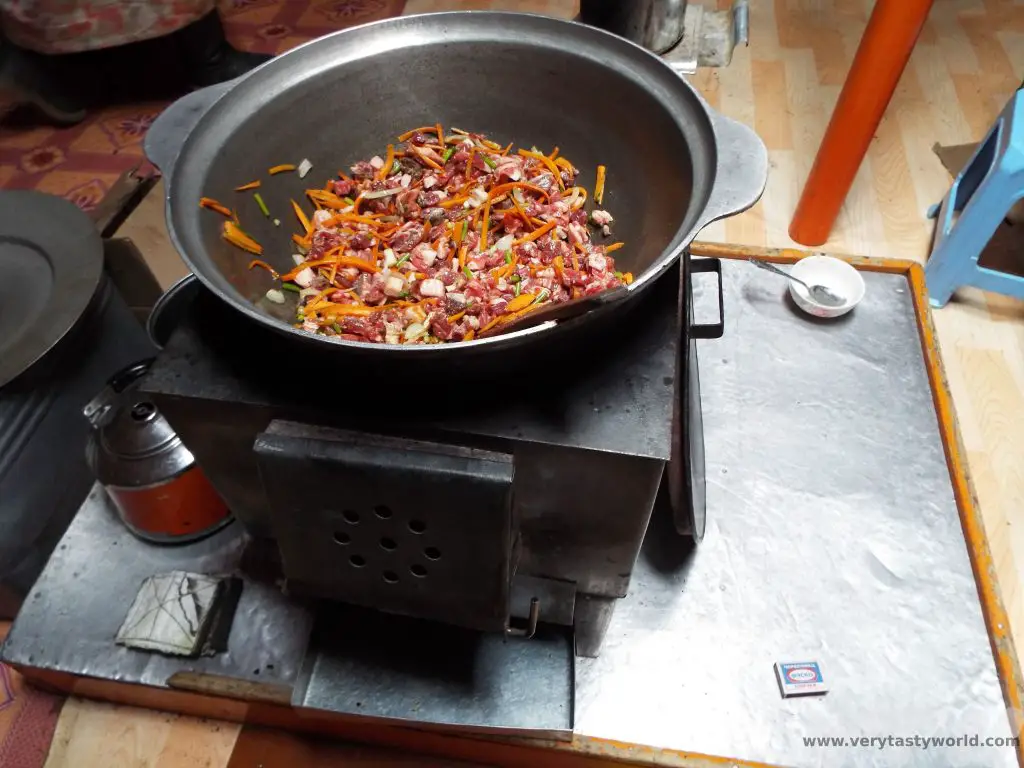
Then water is added to allow the food to stew. The seasoning was simply salt, you don’t get a variety of herbs and spices in Mongolia. Whereas we are used to eating lamb in the UK, mutton is more common across Mongolia. It has a lot more flavour than lamb and, although the meat isn’t as tender, it really benefits from being cooked for a long time over the heat. The taste of the mutton was so good that it meant we didn’t really need additional seasoning.
While the mutton and veg were stewing we stacked the toasted dough and cut it into thin noodles.
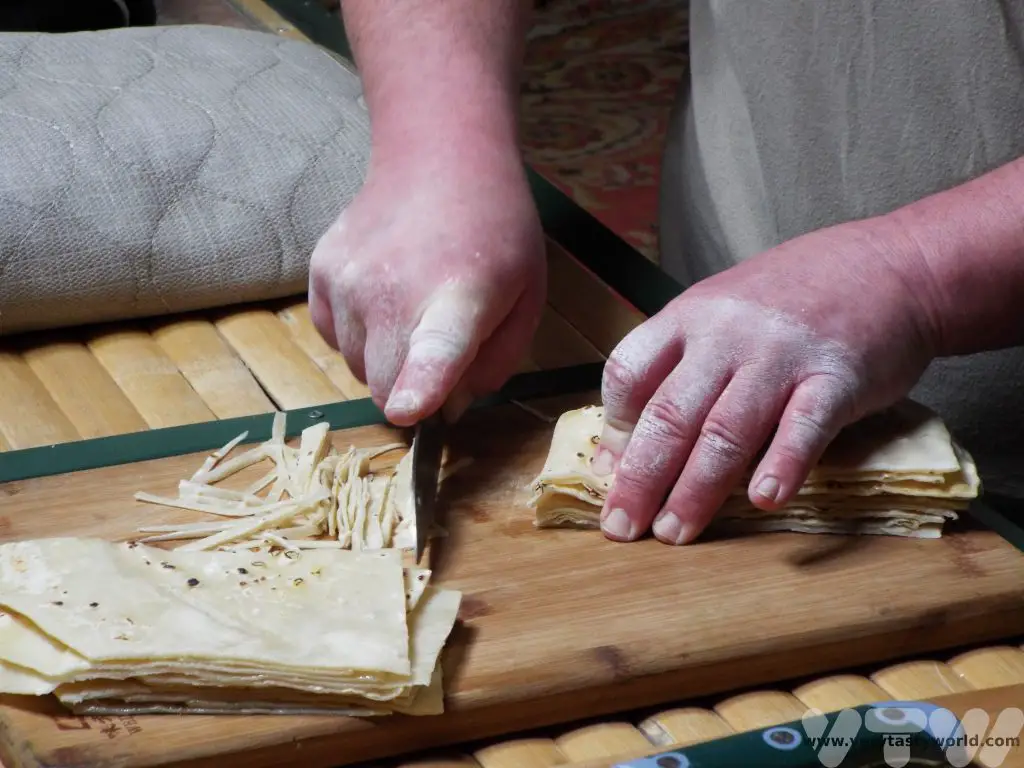
These were then laid across the meat and veg and steamed in the heat until they were soft.
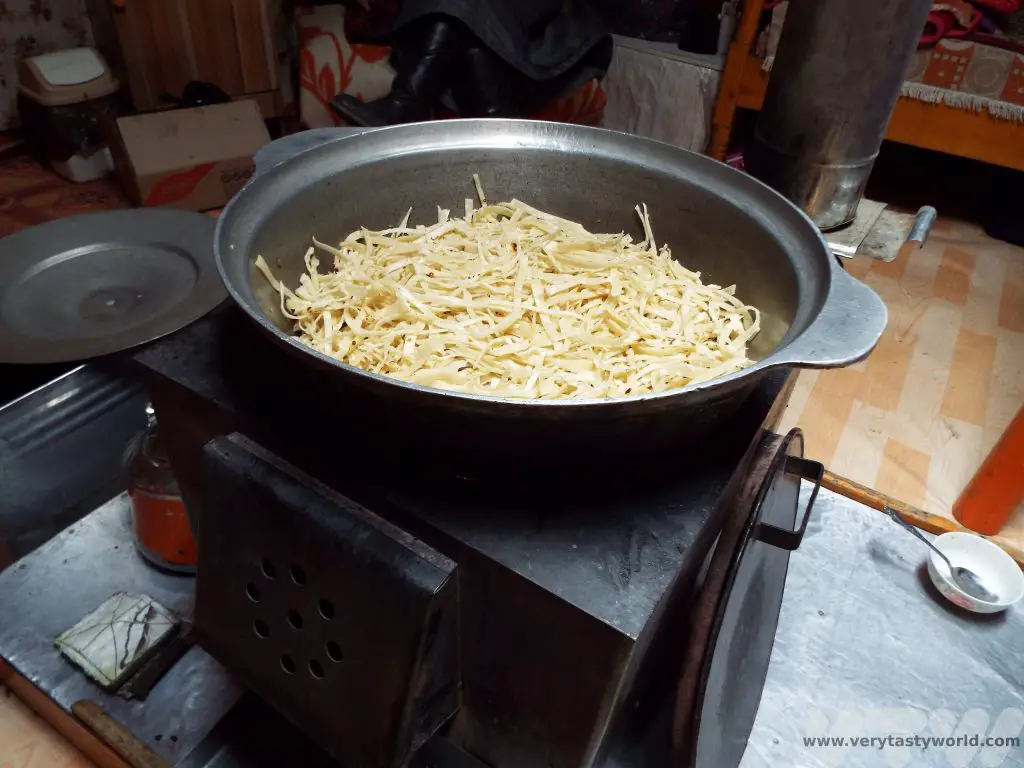
Time to serve up. It’s a delicious meal. We all ate together.
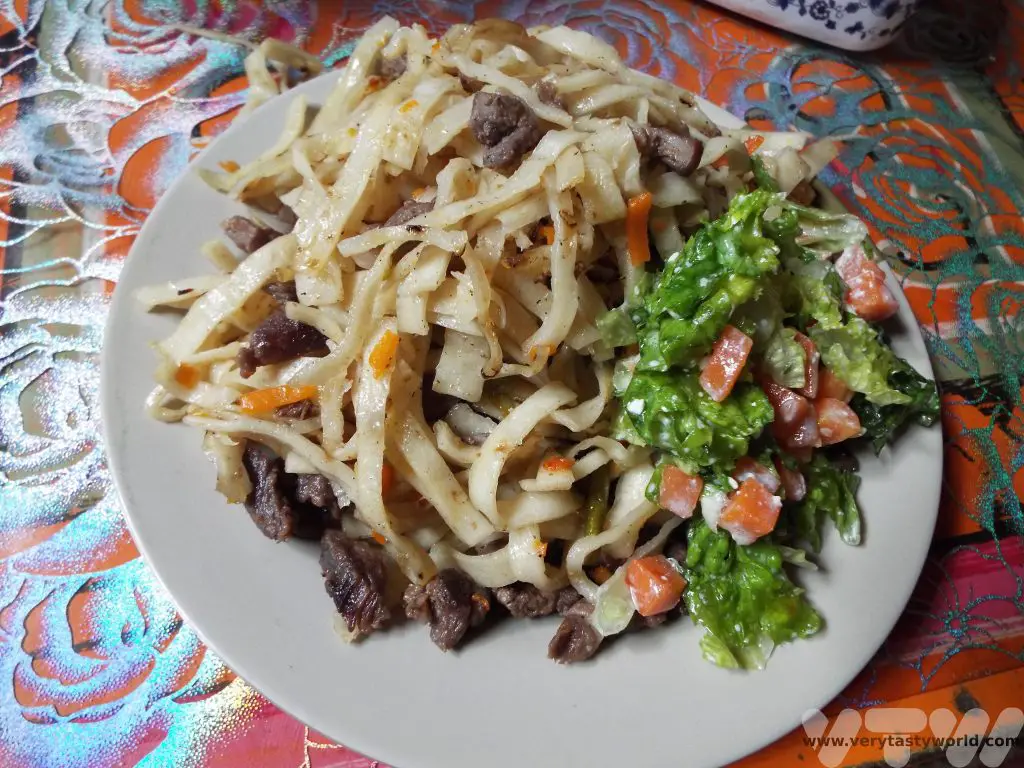
After our hearty dinner we sat down with the family and played silly card games. The family also offered some of the last of their airag, an alcoholic fermented mare’s milk drink. We had been keen to try it, although we knew we were visiting outside the mare milking season, so considered ourselves to be very lucky that the family were willing to share the remnants of last year’s brew with us.
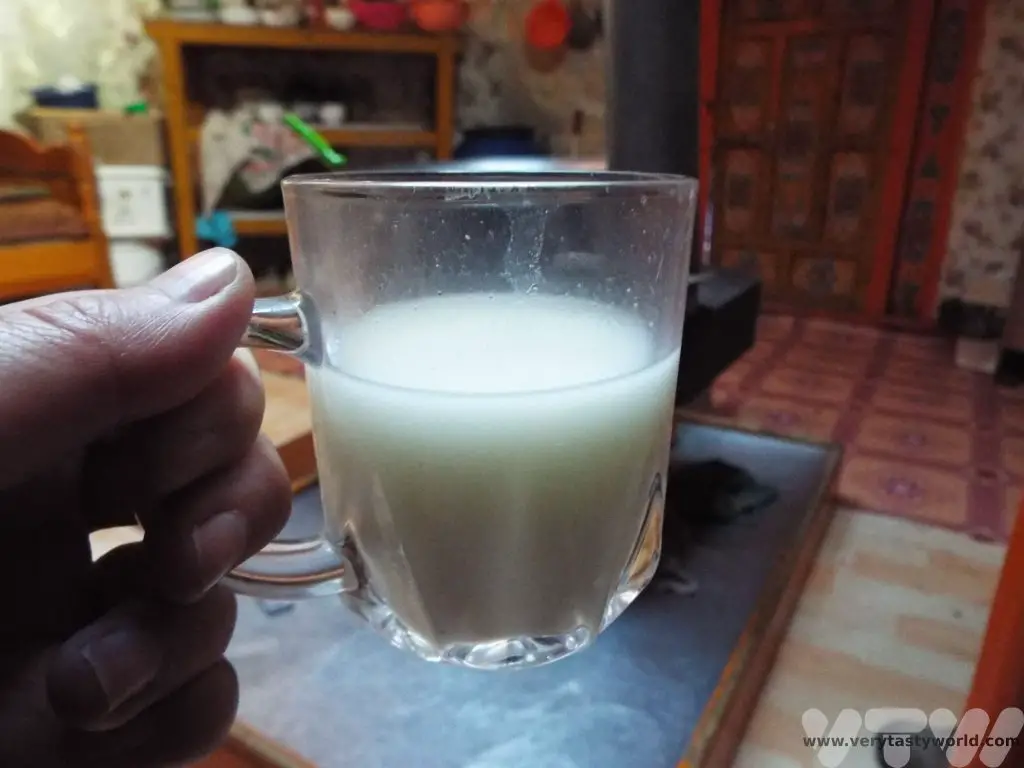
Any fear of the unexpected that we had felt that morning had vanished. Yes, it had been challenging to experience a lifestyle so very different to ours but it was a fantastic challenge. We were very privileged to have joined this welcoming family and to have shared a day in their lives. They very kindly told us that we had genuinely helped out and had done a good job cleaning the pens.
And so to bed. But before we hit the sack we were joined by this little one.
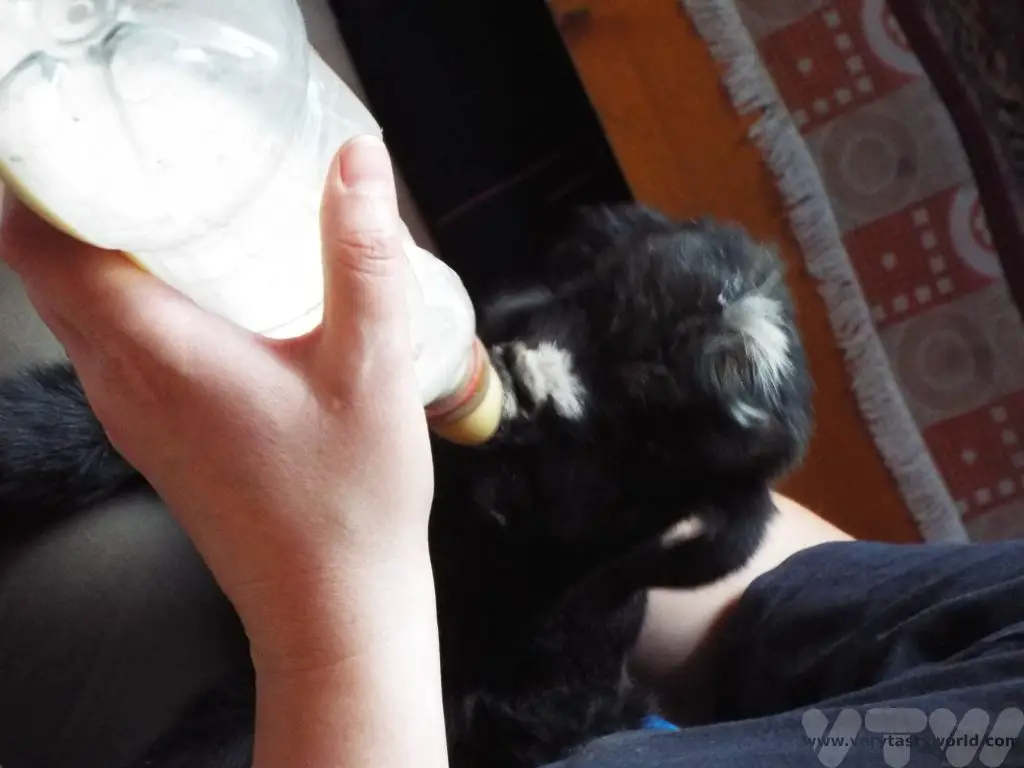
She was just 10 days old and our hosts decided that the overnight temperature was going to be too low for her to survive outside. So we fed her and let her prance around the ger. She bleated in the most delightful way throughout the night.
